
Every year, thousands of wine enthusiasts make the pilgrimage to Bordeaux with the same names on their lips: Château Lafite Rothschild, Margaux, Latour, Haut-Brion. These legendary First Growths from the 1855 Classification represent the pinnacle of Bordeaux winemaking, but they've also become increasingly unapproachable—both in price and availability. A single bottle can easily command $500 to $5,000, and good luck getting a casual tasting appointment at many of these estates without connections.
But here's what savvy collectors know: the 1855 Classification, while historic, tells only a fraction of Bordeaux's story. Beyond the sixty-one classified growths lies a vast landscape of exceptional properties producing wines that can rival their famous neighbors in quality while offering significantly better value. Welcome to the world of Cru Bourgeois—the Médoc's best-kept secret and your gateway to building an impressive cellar without emptying your bank account.
The term "Cru Bourgeois" dates back to 1932, though its roots stretch even further into Bordeaux history. Originally, these were properties owned by the bourgeoisie—the merchant class—rather than nobility. While they weren't included in the famous 1855 Classification (which ranked only 61 châteaux), many of these estates have been producing exceptional wines for centuries.
Unlike the static 1855 Classification, which hasn't changed since Napoleon III commissioned it for the Paris Exposition, the modern Cru Bourgeois system is dynamic and demanding. Established in its current form in 2020, the classification requires châteaux to submit their wines for blind tasting every single year. This means producers can't rest on historical laurels—they must prove their quality annually.
The classification now features three tiers:
Cru Bourgeois: The entry level, representing consistent quality and adherence to strict production standards. These wines must demonstrate typicity of their appellation and technical soundness.
Cru Bourgeois Supérieur: A step up, requiring wines to show greater complexity, aging potential, and personality. Properties must also meet higher environmental and quality standards.
Cru Bourgeois Exceptionnel: The pinnacle, reserved for wines demonstrating exceptional character, complexity, and longevity. These wines often compete directly with classified growths in blind tastings.
Currently, around 250 châteaux hold Cru Bourgeois status across its three tiers, producing approximately 40% of the Médoc's total wine volume. That's a lot of exceptional juice waiting to be discovered.
The value proposition of Cru Bourgeois wines isn't just about lower prices—it's about genuine quality that often surprises even seasoned collectors. Here's why these wines consistently over-deliver:
Terroir Equality: Many Cru Bourgeois properties sit on gravelly ridges and plateaus identical to those of their classified neighbors. The same Garonne river gravels that make Pauillac and Margaux famous don't stop at classified growth boundaries. Château Poujeaux in Moulis, for instance, occupies a spectacular gravel croupe that would be the envy of many classified properties.
Winemaking Investment: Modern Cru Bourgeois producers have invested heavily in their cellars and vineyards over the past two decades. Temperature-controlled fermentation, optical sorting tables, new oak barrels from premium coopers, and consulting oenologists are now standard. The same technical expertise that guides classified growths often advises these properties.
Lower Yields, Higher Ambition: Without the luxury of commanding top-dollar prices based on historical reputation alone, Cru Bourgeois producers must compete on quality. Many voluntarily limit yields well below appellation maximums, hand-harvest, and employ rigorous selection processes. They have to be good to survive.
The Price-to-Quality Sweet Spot: While a Cru Bourgeois might retail for $25-$60, you're often getting wine that performs like a $75-$150 classified growth. That's not marketing hyperbole—blind tastings regularly confirm this value equation.
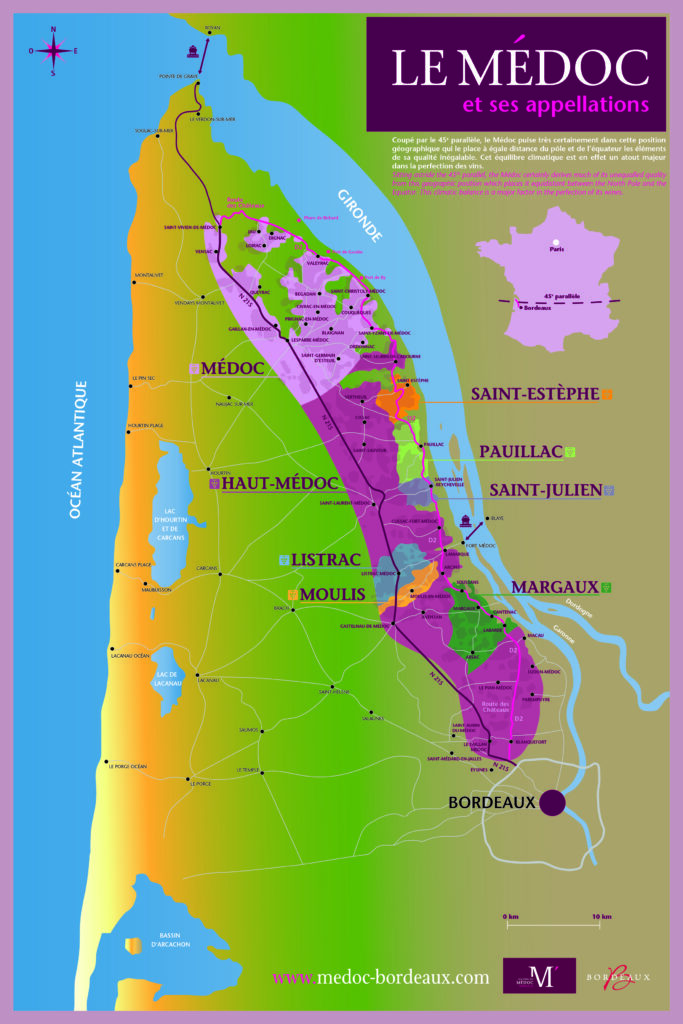
While Cru Bourgeois châteaux exist throughout the Médoc, certain appellations have become particularly renowned for their concentration of high-quality properties.
This tiny appellation (it's the smallest in the Médoc) punches well above its weight. With no classified growths to overshadow them, Moulis producers have built their reputation on pure quality. The appellation's diverse soils—from deep gravel beds to clay-limestone—create wines with both power and elegance.
Must-visit châteaux: Chateau Paveil de Luze et Pomeys are two worth seeing in Moulis.
The wines here blend Cabernet Sauvignon's structure with Merlot's generosity, creating bottles that age gracefully for 15-20 years while remaining approachable in youth.
Listrac flies under most tourists' radar, which is precisely why you should visit. Situated on the Médoc's highest plateau with significant clay content in the soils, Listrac produces structured, age-worthy wines with firm tannins and dark fruit character. These aren't wines for immediate gratification—they're for patient cellaring.
Notable estates: Château Fonréaud (exceptional quality-to-price ratio).
Give Listrac wines at least 7-10 years to soften and reveal their complexity. When mature, they offer remarkable value for cellaring enthusiasts.
The Haut-Médoc appellation sprawls across the southern Médoc, encompassing diverse terroirs. While it includes five classified growths, the real treasure hunt here lies in discovering exceptional Cru Bourgeois properties tucked between famous neighbors.
Don't miss: Château Malescasse is one of Decanter Tours' favorites, Château Lamothe Bergeron, Château d'Agassac (medieval fortress with excellent wine), Chateau de Malleret.
The stylistic range here is vast—from elegant, Margaux-like finesse to more structured Saint-Estèphe-style power, depending on specific terroir.
Some of the most exciting Cru Bourgeois discoveries come from properties within the "famous four" appellations—Pauillac, Saint-Estèphe, Saint-Julien, and Margaux. While these regions are dominated by classified growths, their Cru Bourgeois châteaux offer an accessible entry point into these prestigious terroirs.
In Pauillac, Château Plantey delivers classic Pauillac power at reasonable prices. In Saint-Estèphe, look for Château Le Crock and Château Lafitte Carcasset—both producing wines that would fit comfortably among the appellation's classified growths. Margaux's Cru Bourgeois properties like Château d'Arsac offer that signature elegance and perfume without the sticker shock.
La classification officielle et complète par niveau.
La classification est homologuée par arrêté ministériel.
L'ABUS D'ALCOOL EST DANGEREUX POUR LA SANTÉ. À CONSOMMER AVEC MODÉRATION.
Visiting Cru Bourgeois châteaux offers a completely different experience from touring classified growths—and in many ways, a better one for genuine wine enthusiasts.
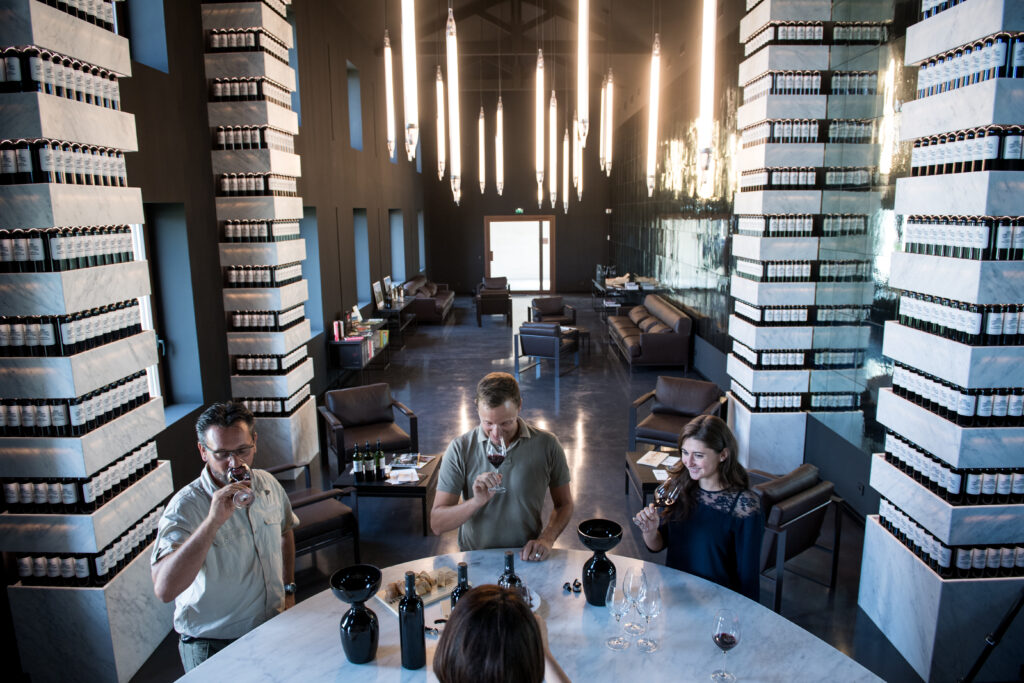
Visit Cru Bourgeois Estates with Decanter Tours
Accessibility: Most Cru Bourgeois properties welcome visitors with far less advance notice than classified growths. Many don't require appointments at all during normal visiting hours, though calling ahead is always courteous and recommended.
Intimacy: You're more likely to meet actual winemakers, owners, or estate managers rather than professional tour guides. These are working estates where the people pouring your wine are often the same ones making harvest decisions and blending choices.
Value: While classified growth tastings can cost €50-€150 per person, many Cru Bourgeois estates offer complimentary or modestly priced tastings (€10-€20). You'll taste more wines, learn more, and spend less.
Authenticity: Without throngs of tourists, these visits feel more like discovering a secret than ticking off a bucket list. You're exploring, not checking boxes.
Timing Your Visit: September through October during harvest provides unparalleled insight into winemaking, though châteaux are understandably busy. Spring (April-May) offers perfect weather and less crowded estates. Avoid August when many properties close for summer holidays.
Geography Matters: The Médoc is long and narrow. Base yourself in Pauillac for central access, or split your time between Margaux (south) and Saint-Estèphe (north). Don't try to visit more than 3-4 châteaux per day—you'll want time to savor the experience and the wines.
Transportation: Designate a driver, hire a professional guide, or join a small group tour specializing in Cru Bourgeois properties. The distances between châteaux and rural roads make this essential. Many premium services now focus specifically on these hidden gems.
Learning Opportunities: Ask to see vineyards, barrel cellars, and blending facilities. These properties are often more willing to offer technical tours than their famous neighbors. Don't be shy about asking detailed questions—winemakers here love sharing their passion with genuinely interested visitors.
A well-planned Cru Bourgeois tour might include:
Day 1 - Moulis and Listrac Immersion: Start at Château Maucaillou's wine museum for context, then visit Poujeaux and Chasse-Spleen in Moulis before heading to two Listrac properties. You'll understand these overlooked appellations' distinct personalities.
Day 2 - Haut-Médoc Exploration: Focus on the diverse Haut-Médoc appellation, visiting properties like Sociando-Mallet, Cambon la Pelouse, and perhaps a medieval château like d'Agassac for historical context alongside excellent wine.
Day 3 - Prestigious Neighbors: Explore Cru Bourgeois properties within Pauillac, Saint-Estèphe, and Margaux. You'll taste how these châteaux capture their appellations' character while offering superior value.
For American wine collectors, Cru Bourgeois wines offer an intelligent foundation for cellar building. Here's how to approach collecting these hidden gems:
Focus on recent strong Bordeaux vintages: 2019, 2020, 2022, and 2023 have all received acclaim. The 2019s are particularly approachable now while having 15+ years ahead of them. The 2016 and 2018 vintages also offer excellent structure for long aging.
Entry Level ($20-$35): Solid Cru Bourgeois from reliable properties. Great for understanding appellations and everyday enjoyment after 5-7 years of aging.
Sweet Spot ($35-$60): Cru Bourgeois Supérieur and top-tier Cru Bourgeois from exceptional vintages. These compete directly with $100+ classified growths and age beautifully for 15-20 years.
Investment Grade ($60-$100): Cru Bourgeois Exceptionnel from top vintages and properties like Sociando-Mallet. These appreciate over time and rival classified growth quality.
Don't be fooled by lower prices—many Cru Bourgeois wines are built for the long haul. Properties like Poujeaux, Sociando-Mallet, Potensac, and Phélan Ségur produce wines that can age 20-30 years in good vintages. The same Cabernet Sauvignon-dominant blends that make classified growths age-worthy apply here.
While at the châteaux, you can often purchase current releases directly, sometimes at better prices than retail. For older vintages and broader selection, work with US importers and retailers specializing in Bordeaux. Many Cru Bourgeois wines are well-distributed in America through importers like Wilson Daniels, Vintus, and Vineyard Brands. If you fall in love with wines during your visit, Decanter Tours can help arrange shipping to your home, handling all the logistics so you can focus on discovering your next favorite bottle.
The Cru Bourgeois classification's annual renewal system ensures its relevance and quality. As climate change continues affecting Bordeaux, the Médoc's cooler northern areas (where many Cru Bourgeois properties cluster) may gain advantages. Meanwhile, the classification's emphasis on environmental sustainability aligns with modern consumer values.
Investment in these properties continues growing, with prominent families and corporations recognizing their potential. This attention drives quality even higher, though it may gradually erode the value advantage over time. Now is the moment to explore, taste, and stock your cellar before the secret spreads further.
Beyond the First Growths isn't just about finding good deals—it's about discovering authentic Bordeaux. The vignerons you'll meet in these Cru Bourgeois cellars are passionate individuals who've chosen quality over easy money from higher yields. They're artists, farmers, and businesspeople who wake up thinking about how to coax the best expression from their land.
When you're standing in a centuries-old cellar in Moulis, tasting a wine that rivals châteaux costing five times as much, you're not just drinking wine—you're participating in the living history of Bordeaux. You're supporting producers who maintain tradition while embracing innovation, who care more about what's in the bottle than what's on the label's pedigree.
So yes, visit Château Margaux if you can secure an appointment. Tour Latour if the opportunity arises. But reserve most of your time for the hidden gems, the overachievers, the properties where someone will remember your name at your next visit. That's where you'll find the soul of Bordeaux—and exceptional wine that won't require a second mortgage.
Ready to explore these hidden gems yourself? Decanter Tours specializes in curating personalized Bordeaux experiences that go beyond the famous names. Our expert guides know these Cru Bourgeois properties intimately—the winemakers, the terroirs, the stories behind each bottle. We'll arrange exclusive access, handle all the logistics, and ensure you discover wines that will become the treasures of your cellar. Contact us today to design your perfect Cru Bourgeois adventure.
Your cellar—and your palate—will thank you.
What exactly is a Cru Bourgeois wine?
Cru Bourgeois is a quality classification for Médoc wines that sit below the famous 1855 Classification but often deliver comparable quality. Unlike the 1855 system, Cru Bourgeois status is earned annually through blind tasting, ensuring consistent quality. The classification includes three tiers: Cru Bourgeois, Cru Bourgeois Supérieur, and Cru Bourgeois Exceptionnel, with about 250 châteaux currently holding status.
How do Cru Bourgeois wines compare in quality to classified growths?
Many Cru Bourgeois wines, particularly those in the Supérieur and Exceptionnel categories, rival Fourth and Fifth Growth classified châteaux in blind tastings. They're made from the same terroir types, using similar techniques and grape varieties. The primary differences are historical classification and price—Cru Bourgeois typically cost $25-$60 versus $75-$300+ for similar quality classified growths.
Which Cru Bourgeois wines age the best?
Properties like Château Poujeaux, Sociando-Mallet, Potensac, Phélan Ségur, and Chasse-Spleen produce wines capable of aging 20-30 years in strong vintages. Look for wines with high Cabernet Sauvignon percentages from gravelly terroirs. Listrac wines, while firm in youth, develop beautifully over 15-20 years. Generally, Cru Bourgeois Exceptionnel and top Supérieur wines offer the best aging potential.
When is the best time to visit Cru Bourgeois châteaux?
Spring (April-May) offers ideal weather and less crowded estates with attentive hosts. Harvest (September-October) provides fascinating insight into winemaking, though properties are busy. Avoid August when many châteaux close for holidays. Generally, Cru Bourgeois properties are more accessible year-round than classified growths, often welcoming walk-in visitors during business hours.
Do I need appointments to visit Cru Bourgeois châteaux?
While many Cru Bourgeois properties accept walk-ins during business hours, calling ahead is always recommended and courteous. Some top estates (like Sociando-Mallet) require appointments, but scheduling is generally much easier than with classified growths. Email or call 2-7 days in advance for best results, though last-minute visits are often possible.
Are Cru Bourgeois wines available in the United States?
Yes, many Cru Bourgeois wines are well-distributed in the US through major importers. Availability varies by state, but wine shops specializing in Bordeaux typically carry multiple Cru Bourgeois properties. Prices in the US are often reasonable, though buying at the château during your visit can sometimes offer modest savings on current releases.
How should I store and serve Cru Bourgeois wines?
Store them like any fine Bordeaux: on their sides in a cool (55-58°F), dark, humid environment with minimal vibration. Young Cru Bourgeois wines benefit from decanting 1-2 hours before serving. Serve at 60-65°F (slightly cool room temperature). Most will improve with 5-10 years of bottle age, with top examples rewarding 15-20+ years of patience.
What's the best way to tour multiple Cru Bourgeois châteaux in a day?
Limit yourself to 3-4 châteaux maximum per day to avoid palate fatigue and allow time for meaningful conversations. Hire a driver or join a specialized tour focusing on Cru Bourgeois properties. Group châteaux geographically—spend one day in Moulis/Listrac, another in Haut-Médoc, etc. Always spit when tasting if you're driving, and bring water and snacks to cleanse your palate between visits.
Does Decanter Tours organize visits to Cru Bourgeois properties?
Absolutely! Decanter Tours specializes in creating customized wine experiences throughout Bordeaux, including comprehensive Cru Bourgeois tours. We have established relationships with top Cru Bourgeois estates across the Médoc, from Moulis and Listrac to Haut-Médoc and beyond. Whether you want a tour focused exclusively on Cru Bourgeois discoveries or prefer to blend them with classified growths, we'll design an itinerary that matches your interests, knowledge level, and cellar-building goals. Our guides provide expert context, secure access to sought-after properties, and handle all logistics including transportation and shipping arrangements.
Bordeaux's Left and Right Banks aren't just geographical designations—they represent two philosophies of winemaking, two distinct terroirs, and two very different expressions of what great wine can be as well as a cultural divide between the inhabitants. Separated by the Gironde Estuary, these regions have developed their own identities over centuries, each producing wines that have shaped global perceptions of what Bordeaux should taste like. Traditionally the left bank inhabitants would not set foot on the right banks and vice versa. Today that has changed and many owners have properties on both banks.
For travelers and wine lovers planning a visit to this legendary region, understanding these distinctions transforms a casual tour into a meaningful exploration of wine culture. Whether you're seeking austere, age-worthy investments or voluptuous, pleasure-driven bottles for immediate consumption, Bordeaux has something extraordinary to offer.
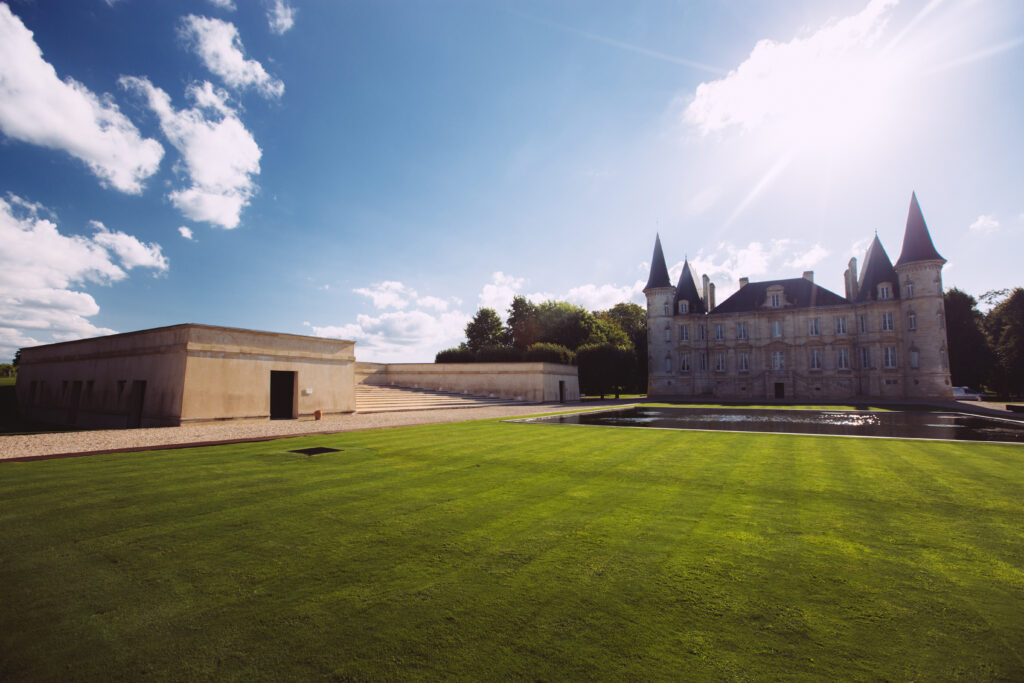
Terroir of the Medoc
The Left Bank encompasses the prestigious regions of the Médoc, Graves. Geologically, this area is characterized by gravel-topped plateaus interspersed with clay and sand. These gravels, deposited by ancient rivers, warm quickly during the day and retain heat through the night, creating an ideal microclimate for ripening Cabernet Sauvignon. Since we tend tohave cool nights here this help retain the acidity in the grapes creating freshness. The excellent drainage provided by these gravelly soils prevents waterlogging during Bordeaux's rainy winters and springs, concentrating the vine's energy into producing smaller, more intensely flavored berries.
The most prestigious communes—Pauillac, Margaux, Saint-Julien, and Saint-Estèphe—all sit on similar gravel-based plateaus, though subtle variations in soil composition create distinct stylistic differences between them. Such is the importance of the terroir here, the chateau owners in this area will tell you how old their gravel is and where it comes from.
Cabernet Sauvignon reigns supreme on the Left Bank, typically comprising 60-85% of the blend, with Merlot, Cabernet Franc, and Petit Verdot playing supporting roles. This grape variety, with its thick skin and inherent tannins, thrives in Bordeaux's cooler microclimate. When fully ripe, Cabernet Sauvignon produces wines of remarkable structure, complexity, and age-worthiness.
Left Bank Bordeaux are characterized by their power and architectural precision. You'll encounter bold cassis and blackcurrant flavors, often mingled with hints of cedar, graphite, and violets. The wines are typically medium to full-bodied with firm, gripping tannins that can feel almost austere in their youth. This is wine that demands attention, that requires food pairings, and that often improves dramatically over 10, 20, or even 30 years in the bottle.
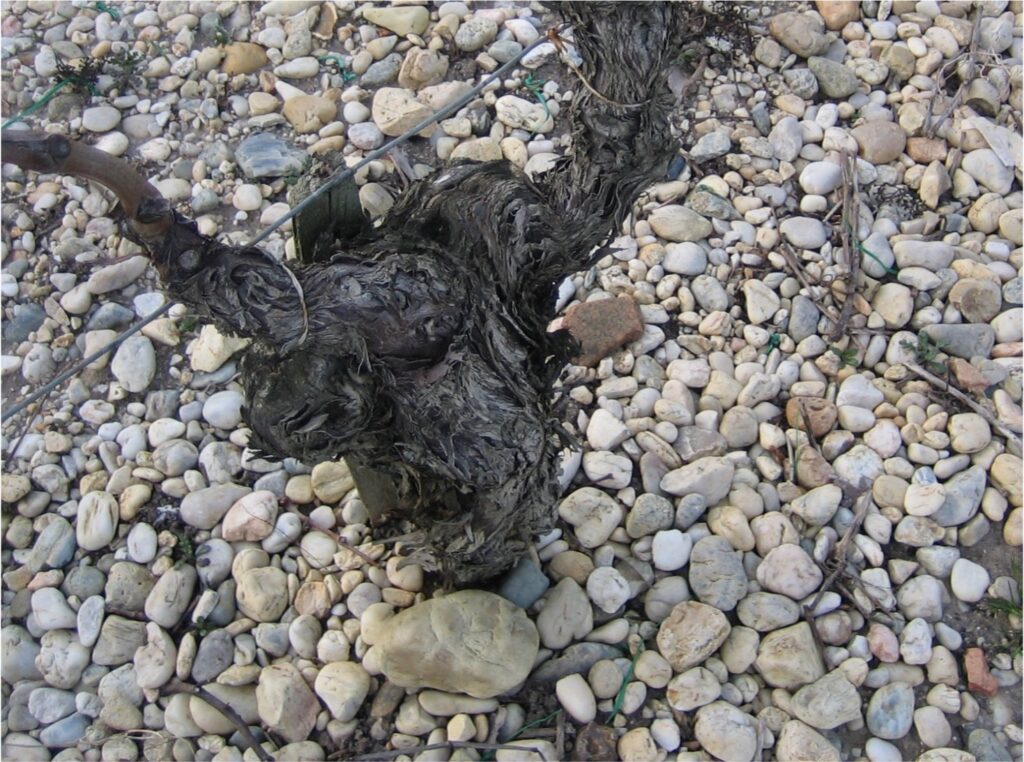

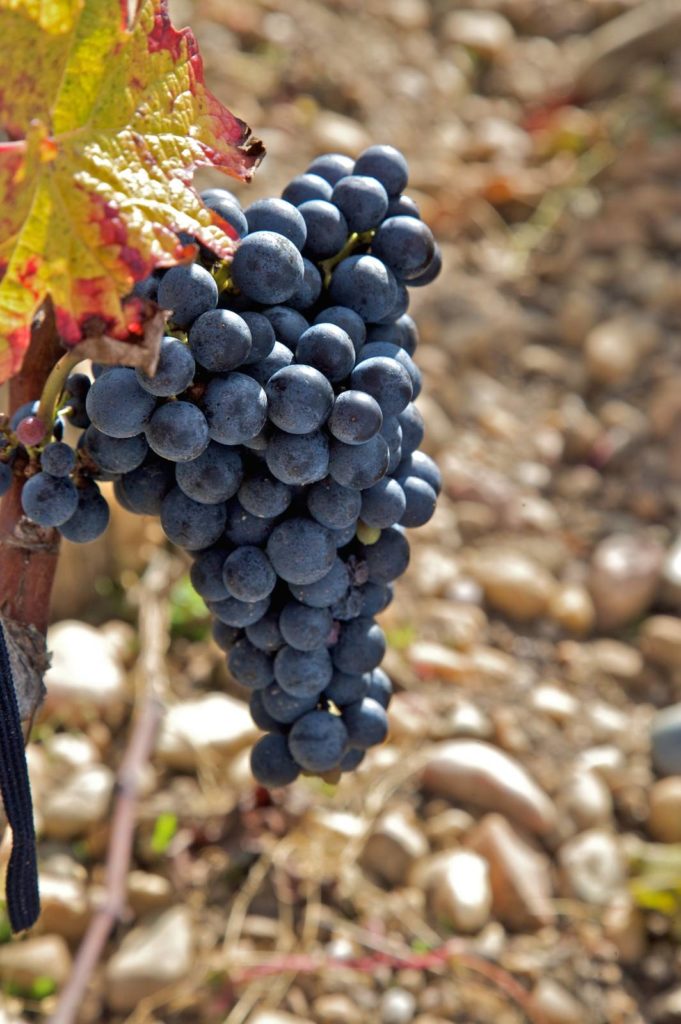
The Left Bank is home to many of Bordeaux's most celebrated châteaux, including first growths like Lafite Rothschild, Latour, and Mouton Rothschild. The 1855 Classification that established Bordeaux's hierarchy was based primarily on Left Bank estates, reflecting their historical prominence and the consistent quality they've delivered.
Investment in Left Bank Bordeaux is a serious pursuit. These wines command premium prices because they possess the structure and complexity to become increasingly valuable—both in terms of drinking pleasure and monetary investment—as they age. A 1982 Château Latour or 1996 Château Pichon-Longueville is likely worth substantially more today than when it was released.
All this being said the Medoc and Graves regions are full of smaller family owned wineries. The other classifications of the Medoc, the Crus Bourgeois and the Crus Artisans attest to this.
Visiting Left Bank estates often feels like stepping into aristocratic history. The châteaux are frequently grand, the estates expansive, and the approach to winemaking deeply traditional. Some of these properties have been in the same families for generations, and this continuity is reflected in their wines. However in recent years, substantial investment by large insurance and luxury goods companies have overtaken the Medoc. A visit to Pauillac or Margaux combines world-class wine tasting with cultural immersion in how old-world wine excellence is maintained.
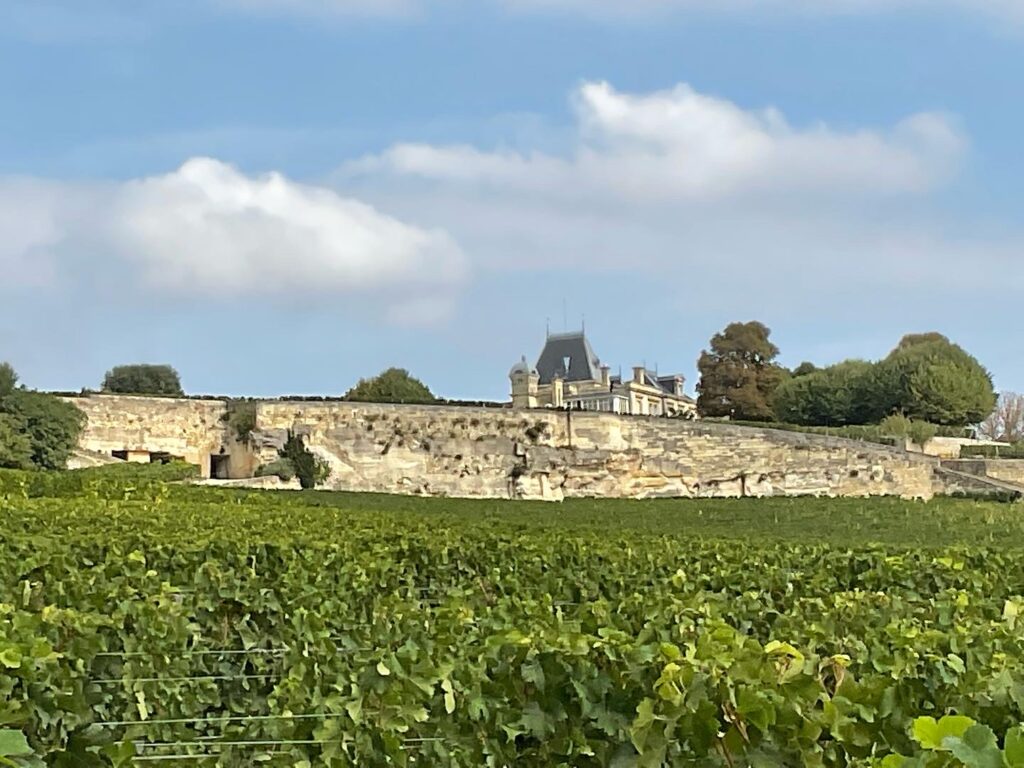
Right Bank Terroir
The Right Bank's most celebrated areas—Pomerol and Saint-Émilion—sit on the right side of the Gironde Estuary. Unlike the Left Bank's gravel plateaus, Right Bank terroir is characterized by clay, limestone, and iron-rich soils. Pomerol, in particular, is known for its clay-rich soils with deposits of iron oxide that give the region its distinctive character. Saint-Émilion features a more varied geology, with limestone plateau areas (the "Côtes") and clay-limestone slopes, creating a diversity of microclimates and wine styles.
These soils retain more moisture than Left Bank gravels, which actually benefits Merlot, the dominant variety here. Merlot prefers slightly cooler, damper conditions than Cabernet Sauvignon, and the Right Bank's terroir is ideally suited to this grape's requirements.
Merlot takes center stage on the Right Bank, typically representing 50-90% of the blend, with Cabernet Franc, Cabernet Sauvignon, and occasionally Malbec providing structure and complexity. Merlot's naturally softer tannins and plush texture create wines that are approachable in their youth while still capable of serious aging.
Right Bank Bordeaux tend to be richer and more voluptuous than their Left Bank counterparts. You'll find intense red and dark fruit flavors—plum, cherry, damson—complemented by earthy undertones, leather, and often a touch of chocolate or licorice. The wines are typically medium to full-bodied with velvety textures and riper, rounder tannins that integrate more quickly into the wine.
Where Left Bank wines often feel like a complex symphony requiring several years to fully reveal themselves, Right Bank wines frequently offer immediate pleasure. A well-made Right Bank Bordeaux from a recent vintage can be absolutely delicious to drink within 3-5 years of release, though the finest examples continue to evolve beautifully for decades.
While the Right Bank has prestigious names like Château Pétrus and Le Pin commanding astronomical prices, there's a wider range of quality levels and price points across the region. This accessibility is part of the Right Bank's appeal. You can find excellent, age-worthy wines at significantly lower price points than comparable Left Bank offerings, making this region ideal for collectors building their cellars and enthusiasts seeking quality without stratospheric costs.
Saint-Émilion's classification has been a moveable feast unlike the never changing 1855 classification of the Médoc and Graves. The Saint-Émilion classification, a system revised approximately every ten years, caused significant controversy due to the departure of several major châteaux and changes to the classification criteria.
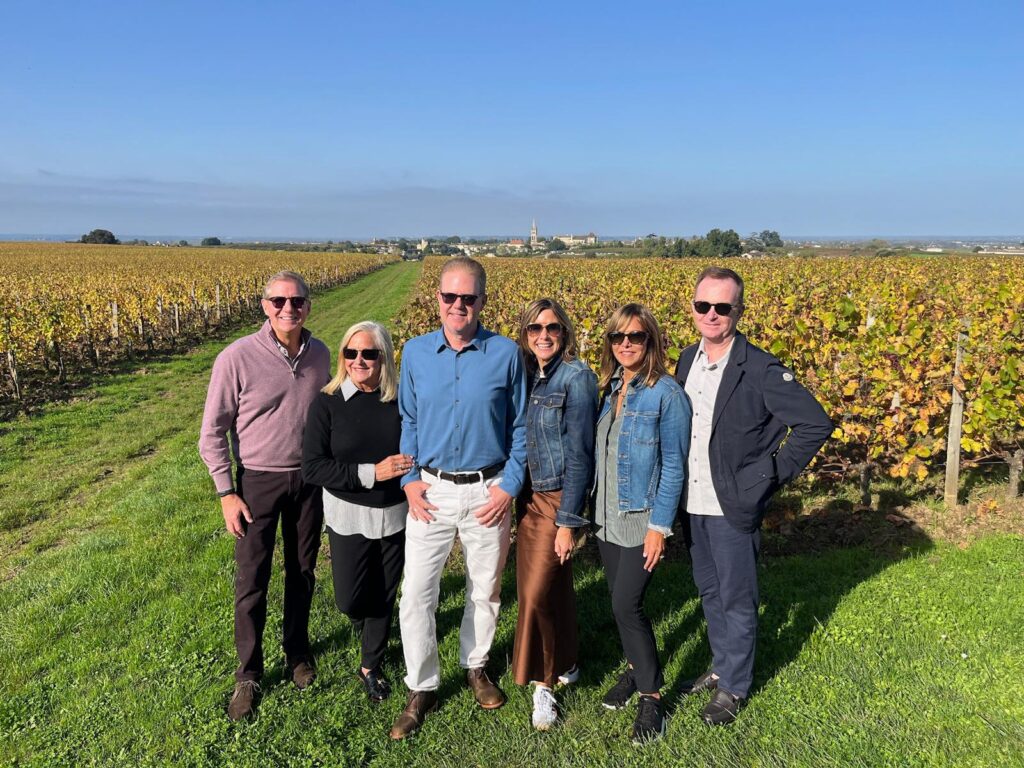
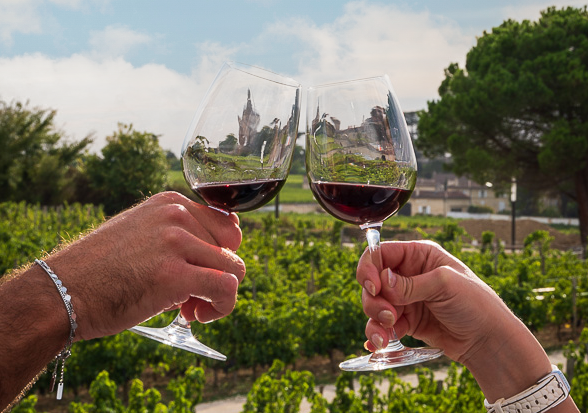
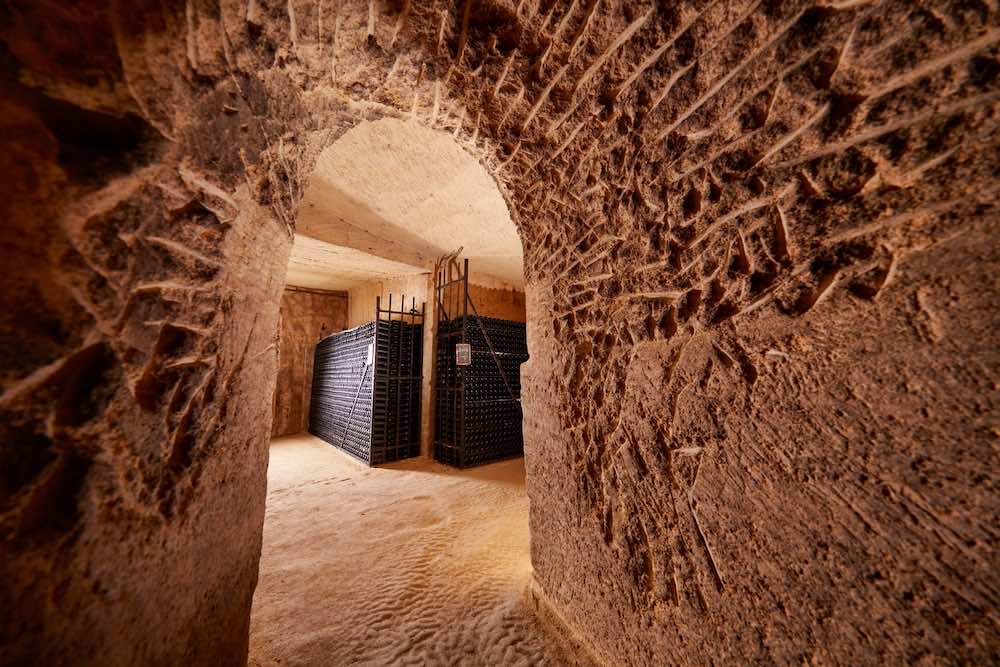
Right Bank estates often feel more intimate and artisanal than their Left Bank counterparts, though this is a generalization with many exceptions. Many Pomerol properties are family-run, very small, and deeply focused on crafting their particular expression of Merlot. Saint-Émilion, with its picturesque UNESCO World Heritage site and medieval town perched above the vineyards, offers a more tourist-friendly experience with charming streets, excellent restaurants, and a palpable sense of wine culture woven into daily life.
Visiting the Right Bank feels less like museum touring and more like discovering culinary artistry in progress. The châteaux are often charming rather than monumental, and proprietors frequently engage visitors in genuine conversation about their wines and approach to winemaking.
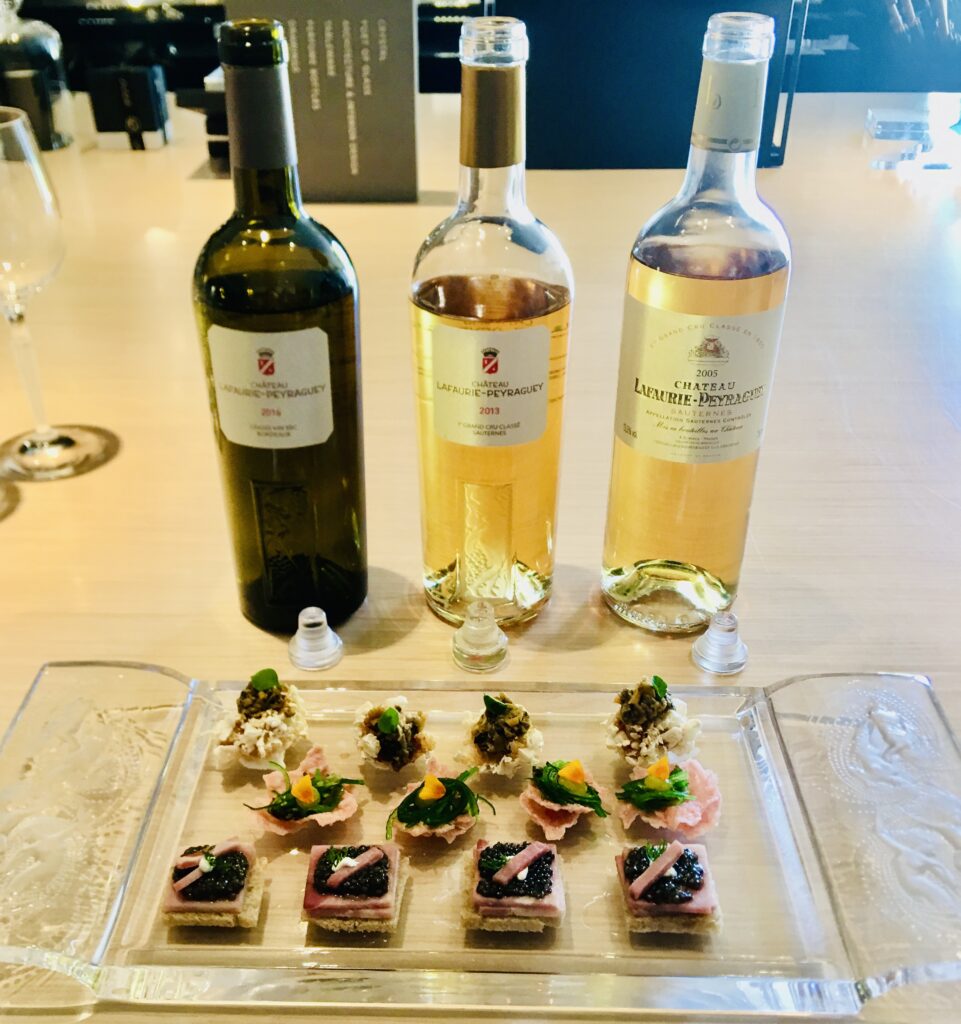
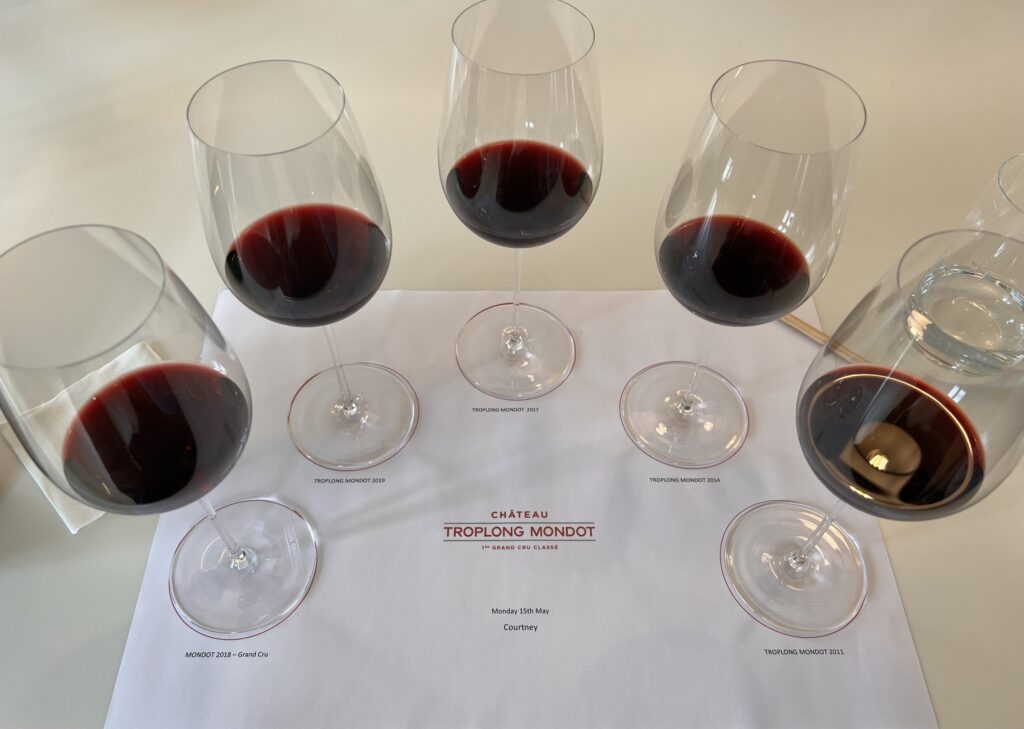
| Aspect | Left Bank | Right Bank |
|---|---|---|
| Primary Grape | Cabernet Sauvignon | Merlot |
| Terroir | Gravel plateaus, excellent drainage | Clay, limestone, iron oxide, higher moisture |
| Style | Structured, austere, architectural | Voluptuous, velvety, immediately accessible |
| Tannins | Firm, gripping, slow to integrate | Soft, round, quick to integrate |
| Primary Flavors | Cassis, cedar, violets, graphite | Plum, cherry, chocolate, leather |
| Aging Potential | 15-50+ years common | 10-30 years typical |
| Price Range | Wide, with many $200+ bottles | Wider accessibility, more sub-$50 options |
| Drinking Window | Often 5-10+ years before optimal | Often 3-5+ years for enjoyment |
| Châteaux Character | Grand, aristocratic, traditional | Intimate, artisanal, familial |
The answer depends entirely on your preferences, occasion, and cellar strategy.
Choose the Left Bank if you love powerful wines with complexity that evolves over time, if you enjoy the intellectual engagement of matching food with structured wines, or if you're building a collection of age-worthy investments. Left Bank Bordeaux reward patience and contemplation. A 20-year-old Left Bank bottle tastes profoundly different—and often better—than its young counterpart. These wines appeal to those who view wine as a journey rather than a destination.
Choose the Right Bank if you value immediate pleasure, if you prefer wines that shine without extensive aging, or if you want excellent quality at more accessible price points. Right Bank wines are perfect for dinner parties where you want sophistication without pretense, for discovering new producers without massive financial commitment, or for building a drinking collection as well as an investment portfolio. These wines celebrate the joy of wine in the present moment.
Of course, the ideal approach is to explore both. Most serious wine enthusiasts maintain a collection that spans both banks, enjoying the Left Bank's structured complexity on contemplative evenings and reaching for the Right Bank's plush voluptuousness when the mood calls for immediate gratification.
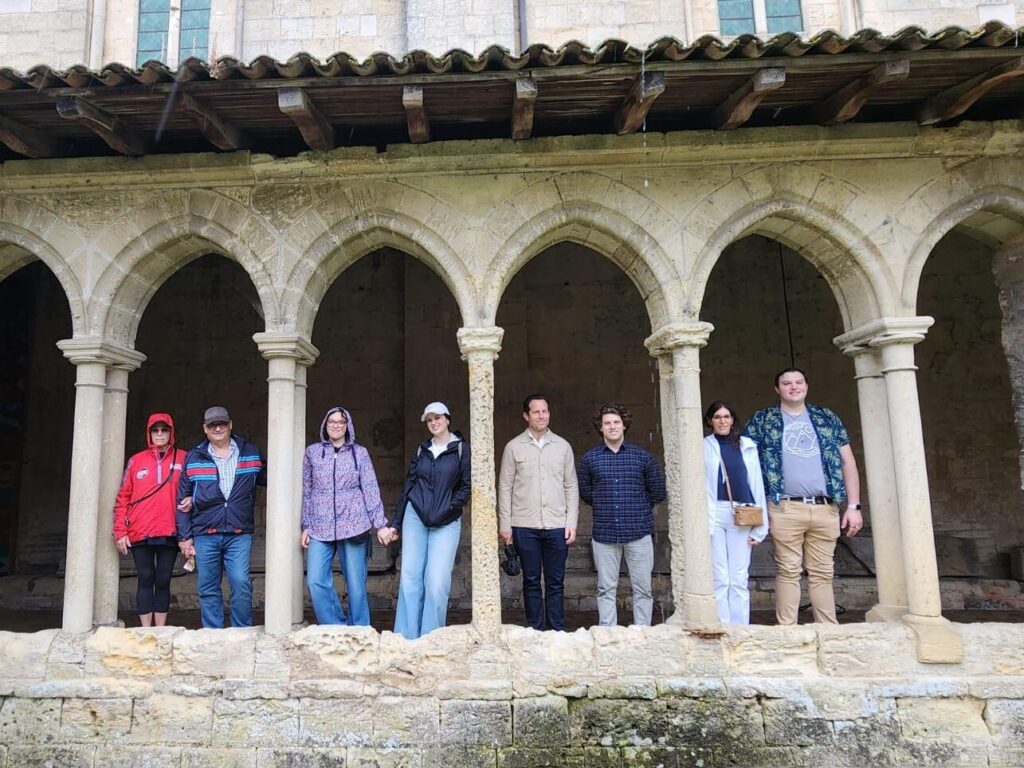
Visit Saint Emilion and the Medoc
Understanding Bordeaux's Left and Right Bank distinction teaches a fundamental lesson about wine: terroir—the complete natural environment affecting a wine's character—genuinely matters. The same grape varieties planted on different soils, with different drainage patterns and microclimates, produce distinctly different results. Just look at Merlot's reputation in N. America. The wines made of Merlot there taste nothing like a Merlot based Bordeaux.
Both banks also represent a commitment to tradition. Bordeaux's winemaking practices, classifications, and reputation have developed over hundreds of years. While innovation continues, it's always in conversation with tradition rather than in rejection of it. This balance between honoring the past and embracing the future is part of what makes Bordeaux exceptional.
For travelers, this means a visit to either bank is an education in wine history, terroir, and human dedication to craft. Whether you're walking through grand châteaux or intimate family properties, you're witnessing centuries of accumulated knowledge about how to coax extraordinary wine from the earth.
Bordeaux's Left and Right Banks represent two distinct but equally magnificent expressions of winemaking excellence. The Left Bank's structured, age-worthy Cabernet-based wines and the Right Bank's elegant, accessible Merlot-based offerings both deserve a place in your wine journey. Neither is objectively superior; they're simply different, each with its own beauty and purpose.
The most rewarding approach to Bordeaux is curiosity. Taste widely across both banks. Notice how the same vintage expresses itself differently across terroirs. Discover which styles resonate with your palate. Build your collection in both directions. And, crucially, plan a visit to experience these regions in person, where you can taste the terroir in its native context and understand why these wines have captivated the world for centuries.
On a more practical note, each bank takes at least one if not two days to visit. Have a look at the sample tours for each or contact us for a full 3 - 5 day tour of all the Bordeaux vineyards.
The Medoc in a day
Saint Emilion in a day and
the Graves in a day.
Q: Can I cellar Right Bank wines as long as Left Bank wines?
A: Many Right Bank wines, particularly from top producers in Pomerol and Saint-Émilion, age beautifully for 20-30 years or more. However, they typically reach their drinking plateau sooner than Left Bank wines. A 15-year-old Right Bank Bordeaux might be at its absolute peak, while a 15-year-old Left Bank wine could still be developing. Always check specific producer recommendations for cellaring guidance.
Q: Which bank offers better value?
A: The Right Bank generally offers better value for quality-conscious drinkers. You can find excellent, sophisticated Right Bank wines at price points where you'd find entry-level Left Bank offerings. However, "value" depends on your goals—if you're investing, Left Bank's prestige may justify premium prices.
Q: Is Left Bank wine more prestigious?
A: Historically and commercially, yes—the 1855 Classification solidified Left Bank prestige. However, top Right Bank producers like Pétrus command prices rivaling first growths. Prestige and quality are linked but not identical. The best wine is the one that brings you pleasure.
Q: Can I drink Left Bank Bordeaux young?
A: Absolutely. Its all a question of taste. While Left Bank wines improve with age, quality examples are often quite enjoyable at 5-7 years old. They're simply less evolved than they'll be at 15 or 25 years. Younger Left Bank wines showcase fresh, vibrant fruit characteristics that appeal to many drinkers.
Q: What's the best way to taste both banks side-by-side?
A: A comparative tasting of similar vintages and price points from both banks is revelatory. Try a 2015 Left Bank wine (say, a Pauillac from a mid-level producer) against a 2015 Right Bank wine (perhaps a Saint-Émilion from a well-regarded château) at similar prices. The differences in structure, flavor, and texture become immediately apparent.
Q: Do I need to visit the châteaux to appreciate these wines?
A: Not at all—excellent Bordeaux is available worldwide, and you can develop sophisticated understanding through tasting at home. However, visiting adds an irreplaceable sensory dimension. Tasting a wine in its native context—seeing the soils, meeting the winemakers, understanding the terroir visually—deepens appreciation immeasurably.
Q: Which bank should I visit first?
A: This depends on your interests. If you prefer grand historic estates and structured wine education, start with the Left Bank (Pauillac or Saint-Julien). If you prefer intimate settings and immediate wine enjoyment, begin with the Right Bank (Pomerol or Saint-Émilion town). Most of our visitors do both. In terms of logistics, using central Bordeaux as a starting point they both take just under an hour to reach by car. Since the Medoc is a long peninsula, getting back at the end of the day, should you venture up to Saint Estephe in the northern part of the area can take up to 2 hours.
Now that you understand the fundamental differences between Bordeaux's Left and Right Banks, it's time to experience them for yourself. There's simply no substitute for tasting these wines in their native habitat, meeting the passionate winemakers behind the bottles, and understanding how terroir shapes every sip.
Book your wine tour with Decanter Tours today. We offer expertly curated experiences that showcase the best of both banks:
Our knowledgeable guides provide insider access to premier châteaux, facilitate tastings with winemakers and cellar masters, and ensure every moment of your journey deepens your wine knowledge and enjoyment. Whether you're a seasoned collector, an enthusiastic amateur, or simply curious about wine, our tours transform Bordeaux from a distant legend into a lived experience.
Don't just read about great wine—taste it, live it, and remember it forever.
[Reserve Your Bordeaux Wine Tour Now]
Contact us today to customize your perfect Bordeaux experience. Your adventure awaits.
The 2022 Saint-Émilion classification, a system revised approximately every ten years, caused significant controversy due to the departure of several major châteaux and changes to the classification criteria. The withdrawals of powerhouses like Ausone, Cheval Blanc, and Angélus have reshaped the appellation's landscape, leaving many collectors to reassess the significance of the ranking. This guide delves into the key changes, the reasons behind the controversy, and the implications for the future of Saint-Émilion.
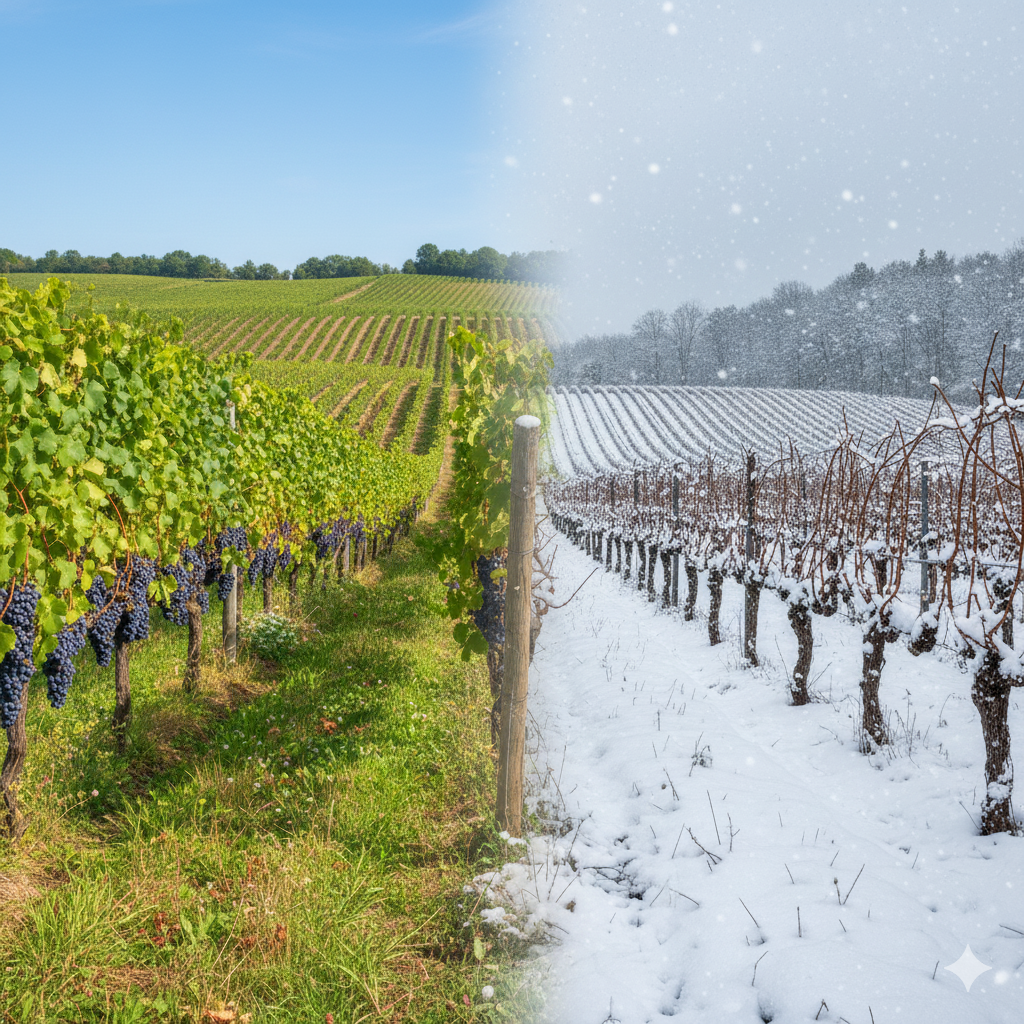
Unlike the static 1855 classification of the Médoc, the Saint-Émilion classification is re-evaluated periodically to reflect the evolving quality of its châteaux. This method is not without its challenges. The 2022 edition was the seventh since its inception in 1955, and it proved to be one of the most tumultuous. The list officially released in September 2022, featured 85 estates: two Premiers Grands Crus Classés A, 12 Premiers Grands Crus Classés, and 71 Grands Crus Classés. This marked a shift from the 2012 ranking, which had four estates at the top "A" level.
The most notable changes were the promotions and demotions that came with the new ranking. After long being considered unfairly overlooked, Château Figeac was elevated to the top tier, Premier Grand Cru Classé A, joining Château Pavie. This promotion was widely anticipated and celebrated, acknowledging Figeac's consistent quality and strong reputation.
The biggest story of the 2022 classification wasn't who was in, but who was out. Three of the four reigning Premier Grand Cru Classé A châteaux from 2012—Cheval Blanc, Ausone, and Angélus—all announced their withdrawal from the process. Their decisions, made sequentially in 2021 and 2022, sent shockwaves through the wine world and underscored deep-seated dissatisfaction with the system.
Each château had its own reasons, but a common thread emerged: a belief that the classification's criteria had strayed too far from the fundamentals of terroir and wine quality.
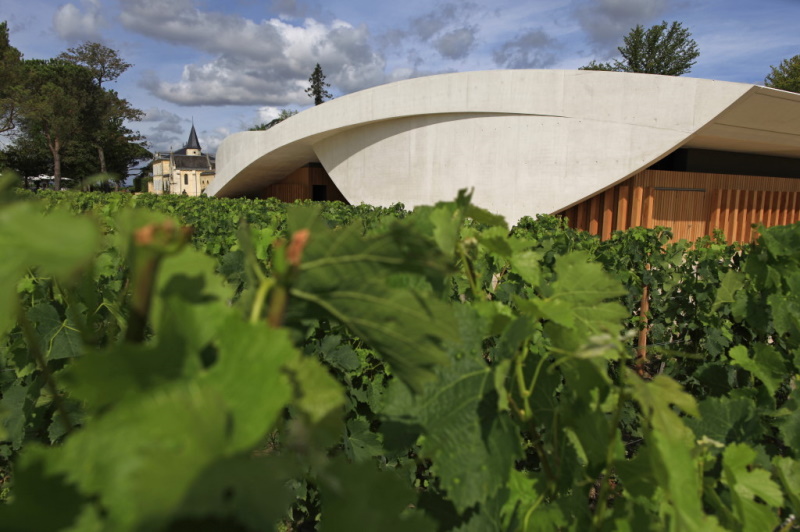
The controversy surrounding the 2022 classification extends beyond the high-profile departures. The changes to the evaluation criteria were at the heart of the matter. The revised system, overseen by the French national appellation authority (INAO), stipulated a 50% weighting for blind tastings of multiple vintages. While this might seem positive, other factors like reputation, marketing activities, and viticultural techniques also played a significant role. For some producers, the balance was off, particularly at the highest levels of the classification.
The departures of the three top-tier châteaux have left a gaping hole in the classification. They are no longer permitted to display their classified status on their labels for new vintages, and the once-revered "Premier Grand Cru Classé A" category has been reduced from four to just two estates. This has raised questions about the credibility and relevance of the system itself. Can a classification truly represent the pinnacle of a region's wines if some of its most famous and highest-regarded estates are no longer a part of it?
For collectors, this new landscape presents a challenge and an opportunity. The value and reputation of Ausone, Cheval Blanc, and Angélus are so well-established that their absence from the classification has had no discernible negative impact on their market performance. In fact, their prices have remained strong, driven by brand recognition and consistent critical acclaim. The market, it seems, has its own classification system.
The departures also open the door for a new generation of winemakers. The 2022 classification saw many new entrants and promotions, rewarding those who have invested heavily in their properties and winemaking. This "healthy rivalry," as some in the region describe it, could drive innovation and quality throughout the appellation.
A simple overview of Bordeaux's dynamic wine hierarchy.
Total Classified Châteaux
The pinnacle of the classification.
Recognizing estates of outstanding quality.
This largest tier comprises 71 estates, including new and re-classified properties, demonstrating a high standard of quality.

The 2022 Saint-Émilion classification is more than just a list of names; it's a reflection of a region grappling with its identity. For collectors, the lesson is clear: while the official ranking remains a useful reference, it's no longer the sole arbiter of quality in Saint-Émilion. The true face of Saint-Émilion is now a dual one, with an official classification coexisting alongside a powerful, unclassified "top layer" of world-class estates.
When collecting, consider the following:
The 2022 classification marks a pivotal moment in Saint-Émilion's history. It's a reminder that even in the most traditional of wine regions, change is inevitable. The market and savvy collectors are now the ultimate judges, guided by a new and ever-evolving understanding of what makes a great Saint-Émilion wine.
Q: What is the Saint-Émilion classification?
A: The Saint-Émilion classification is a ranking system that organizes the wines of the châteaux of the Saint-Émilion wine region in Bordeaux, France. Unlike the well-known but static 1855 classification of the Médoc, the Saint-Émilion ranking is revised every ten years to reflect changes in the quality and reputation of the estates.
Q: Why was the 2022 classification so controversial?
A: The 2022 classification was controversial due to the high-profile withdrawal of three of its four top-ranked estates (Ausone, Cheval Blanc, and Angélus). These châteaux claimed that the classification's criteria had strayed too far from focusing on terroir and wine quality, instead placing too much weight on marketing, social media, and tourism.
Q: What were the key changes in the 2022 classification?
A: The 2022 classification saw the number of Premiers Grands Crus Classés A reduced from four to two (Château Ausone, Cheval Blanc, and Angélus withdrew), with Château Figeac being newly promoted to this top tier. The classification also saw many other estates promoted to the lower tiers.
Q: Did the withdrawal of the châteaux affect their market value?
A: No, the market value and reputation of Ausone, Cheval Blanc, and Angélus have remained strong. Their brands are so well-established that their absence from the official classification has had little to no negative impact on their market performance.
Q: Does the classification still matter?
A: Yes, the classification remains a useful reference and continues to influence the market. However, for many collectors, it is no longer the sole indicator of quality in Saint-Émilion. The market itself has developed a separate "classification" that recognizes the quality of the unclassified, top-tier estates.
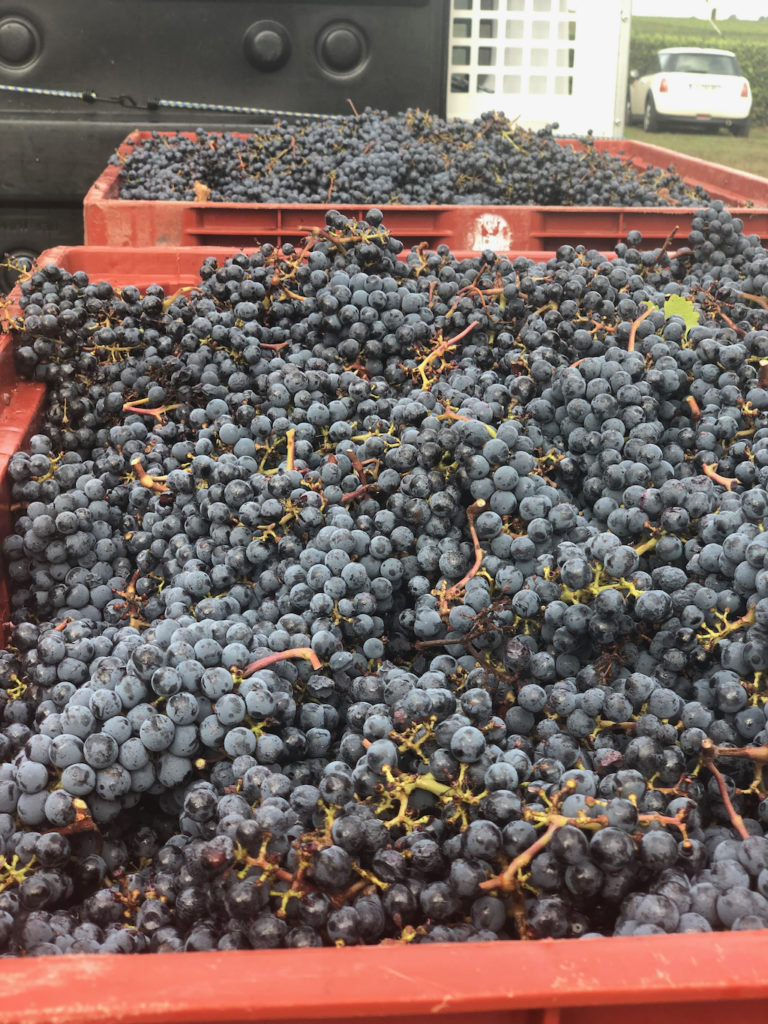
Bordeaux Harvest for the Discerning Collector
For the discerning wine collector, the Bordeaux harvest represents far more than a seasonal agricultural event—it's the epicenter of where legendary wines are born. The period from late August through October transforms this storied region into a symphony of controlled chaos, where centuries of tradition merge with cutting-edge technology, and where the year's potential is literally pressed into existence. Yet this dynamic and captivating season presents unique challenges for collectors seeking authentic access to the region's most prestigious estates.
The harvest period is paradoxically both the most exciting and most restrictive time to visit Bordeaux's elite châteaux. While the vineyards pulse with activity and the air carries the intoxicating aroma of fermenting grapes, many estates become fortress-like in their focus, prioritizing the crucial work of transforming grapes into wine over entertaining visitors. This creates a sophisticated challenge that separates casual wine tourists from serious collectors who understand the value of strategic access that Decanter Tours can obtain.
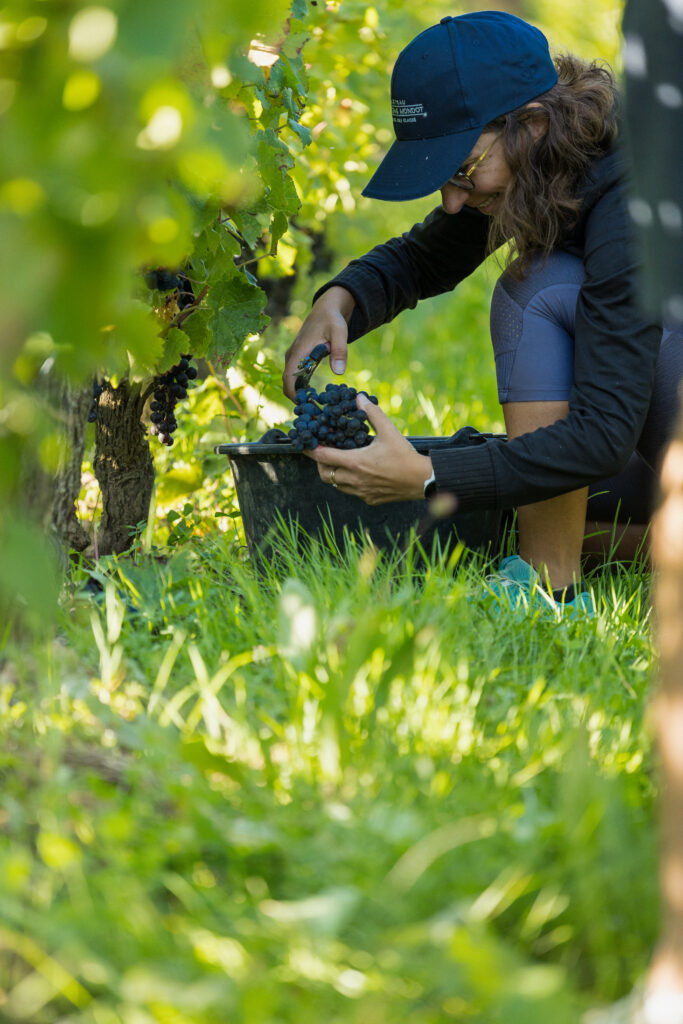
The Bordeaux Harvest Calendar: Timing Your Harvest Journey
Understanding Bordeaux's harvest timeline is essential for any collector planning a visit during this transformative season. The harvest typically begins in late August with the earliest ripening varietals and extends through October, but this schedule is entirely dependent on weather conditions, grape maturity, and individual château philosophies.
Late August to Early September marks the beginning of harvest for many white wine estates, particularly those producing dry whites in Graves and Pessac-Léognan. Sauternes producers may begin their selective harvesting during this period, carefully choosing only grapes affected by the beneficial noble rot (Botrytis cinerea). This early period offers collectors unique opportunities to witness the precision required for producing Bordeaux's most sought-after sweet wines.
Mid-September represents the heart of the red wine harvest, when prestigious Left Bank estates like those in Médoc, Haut-Médoc, and the individual appellations of Saint-Estèphe, Pauillac, Saint-Julien, and Margaux swing into full production. The gravelly soils of these regions, which provide excellent drainage and heat retention, typically allow for optimal Cabernet Sauvignon ripening during this period. Collectors visiting during this window can observe the meticulous sorting processes that separate grand cru classé wines from their more modest siblings.
Late September to Early October sees Right Bank appellations like Saint-Émilion and Pomerol reaching peak harvest activity. The clay-limestone soils of these regions, which retain moisture and provide steady nutrition to the vines, often result in later ripening, particularly for the Merlot that dominates these areas. For collectors, this period offers access to some of Bordeaux's most exclusive and expensive wines, including legendary estates where production is measured in thousands rather than tens of thousands of cases.
The challenge for collectors lies not just in timing their visit correctly, but in understanding that this period of maximum viticultural activity corresponds directly with minimum public access. Château owners, winemakers, and staff are entirely focused on the harvest, leaving little time or energy for entertaining visitors. This is where the expertise of a well-connected private guide becomes invaluable.
September in Bordeaux presents a unique paradox for wine collectors. While this month offers the most authentic and immersive harvest experience possible, it also represents the most challenging time to gain access to premier estates. The intensity of harvest operations creates a protective barrier around châteaux, with many implementing temporary restrictions on visitors to ensure their teams can focus entirely on winemaking.
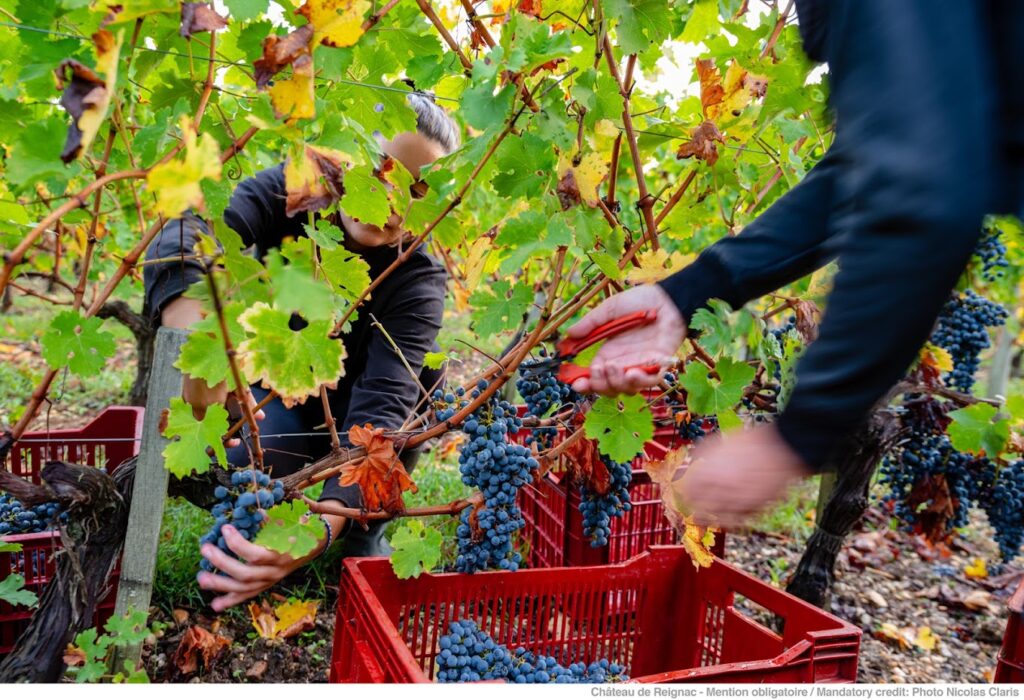
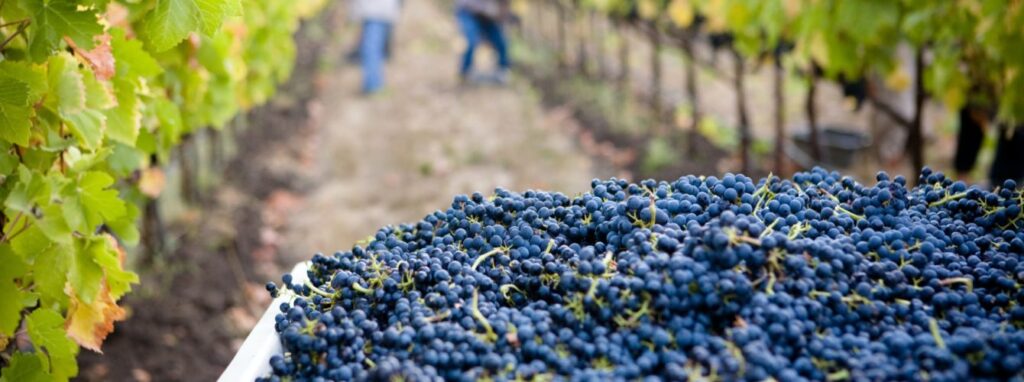
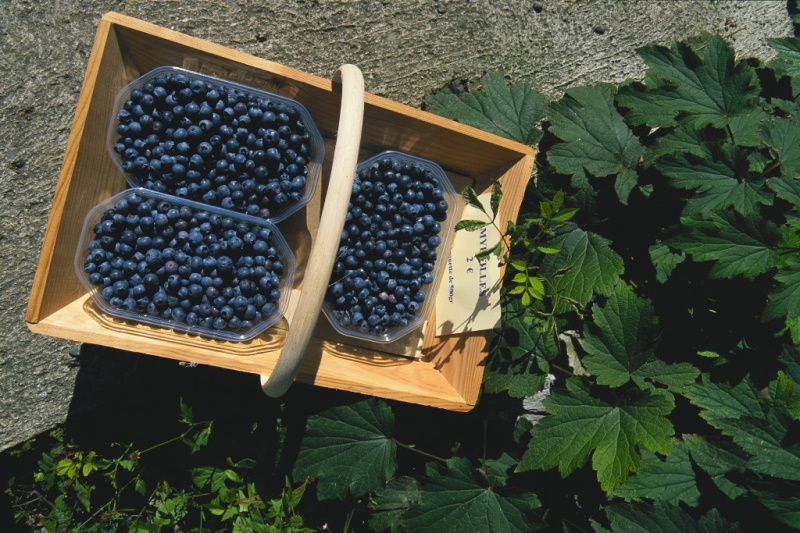
During harvest, châteaux operate on schedules dictated by grape maturity rather than visitor convenience. Picking often begins at dawn to take advantage of cooler temperatures, with sorting and processing continuing throughout the day. The rhythm is dictated by weather windows, with sudden changes potentially requiring 24-hour operations to bring grapes in before rain arrives. In this environment, even scheduled appointments may be cancelled or dramatically shortened if harvest conditions demand immediate attention. Believe us this has happened even at the most distinguished institutions!
The most prestigious estates, those producing wines that collectors actively seek, are particularly restrictive during this period. First Growth châteaux may completely cease public tours, if they host them at all, while Seconds and other classified growths typically limit access to their most important partners and long-standing relationships. This restriction isn't born of exclusivity for its own sake, but rather from the practical reality that harvest represents the most crucial period of the entire winemaking year and can be a tricky time in the cellars for visitors.
For collectors accustomed to arranging their own vineyard visits, this presents a significant challenge. Cold calls to château offices often result in polite but firm refusals, and even established relationships may not guarantee access during peak harvest periods. The timing that makes harvest visits most rewarding—when fermentation vats are actively bubbling and sorting tables are running at full capacity—is precisely when châteaux are least available to accommodate visitors.
This is where the expertise and relationships of a local wine tour company like Decanter Tours become not just valuable, but essential. Our experienced guides who have spent years building relationships with château owners, winemakers, and estate managers possess the key to unlocking access that would be impossible for individual collectors to arrange independently.
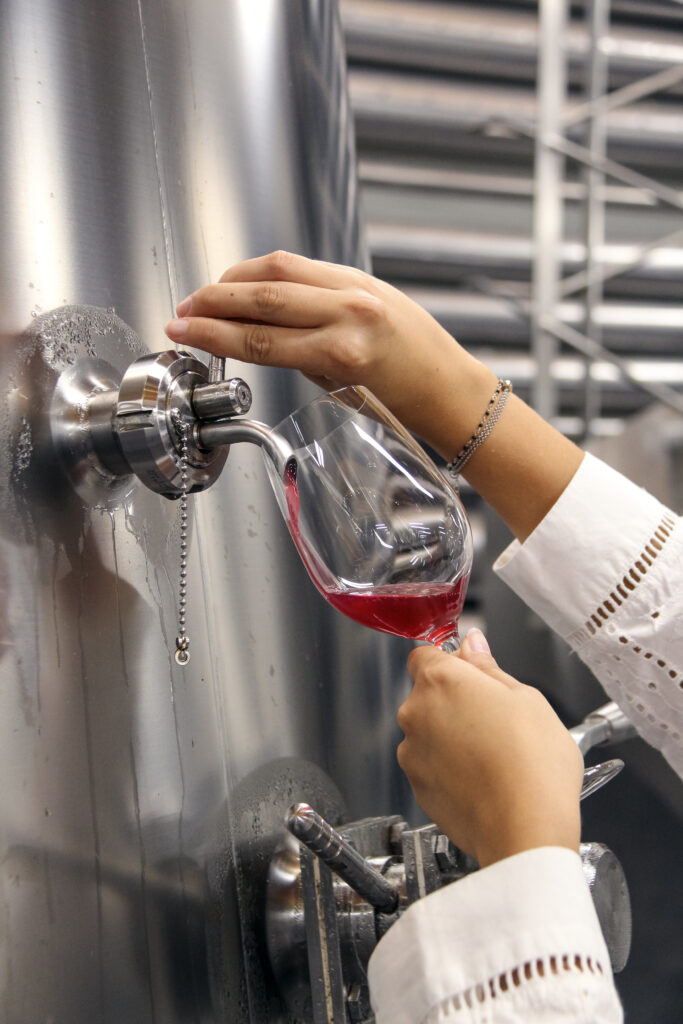
The value of these relationships extends far beyond simple appointment scheduling. Our established wine guides understand the specific rhythms and preferences of individual estates. They know which châteaux are more accommodating during early morning hours before harvest operations begin, which estates might offer brief afternoon visits during sorting breaks, and which winemakers genuinely enjoy sharing their expertise with knowledgeable collectors even during their busiest season.
More importantly, our professional guides book harvest visits months in advance, often during the previous winter or early spring when château calendars are more flexible and staff has time to consider special requests. This advance planning allows for the strategic scheduling that harvest visits require, with built-in flexibility to accommodate weather-driven changes to harvest timing.
Furthermore, Decanter Tours has access to experiences that go far beyond standard wine tours in Bordeaux. We can arrange private tastings directly from fermenting tanks, allowing collectors to taste wines at their most vulnerable and transformative stage. We can secure access to sorting areas where collectors can observe the meticulous selection process that separates great wines from merely good ones. Most valuably, we can arrange conversations with winemakers who are typically too busy during harvest to engage with casual visitors.
Harvest visits provide collectors with intelligence about vintage quality that extends far beyond published reports and critics' scores. Witnessing the harvest firsthand allows for real-time assessment of vintage conditions and estate-specific decisions that will ultimately impact wine quality and investment potential.
Weather conditions during harvest have enormous impact on final wine quality, and collectors present during harvest can observe how different estates respond to challenging conditions. Each region, appellation and area have very different weather conditions. Some châteaux in Bordeaux invest heavily in weather prediction equipment and can maintain harvest schedules despite marginal conditions, while others may be forced to make compromises that impact wine quality due to lack of information about the weather. Observing these differences provides collectors with insight into which estates are likely to produce exceptional wines even in difficult vintages.
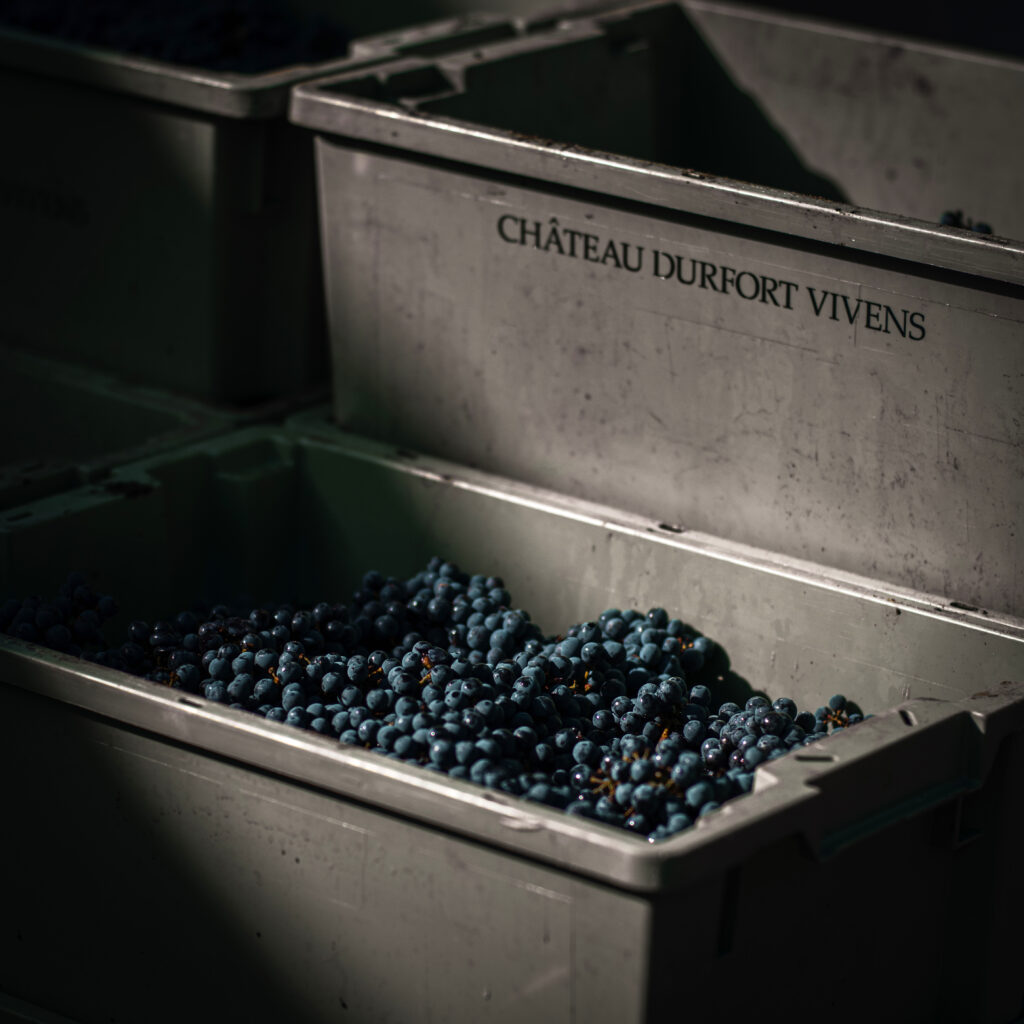
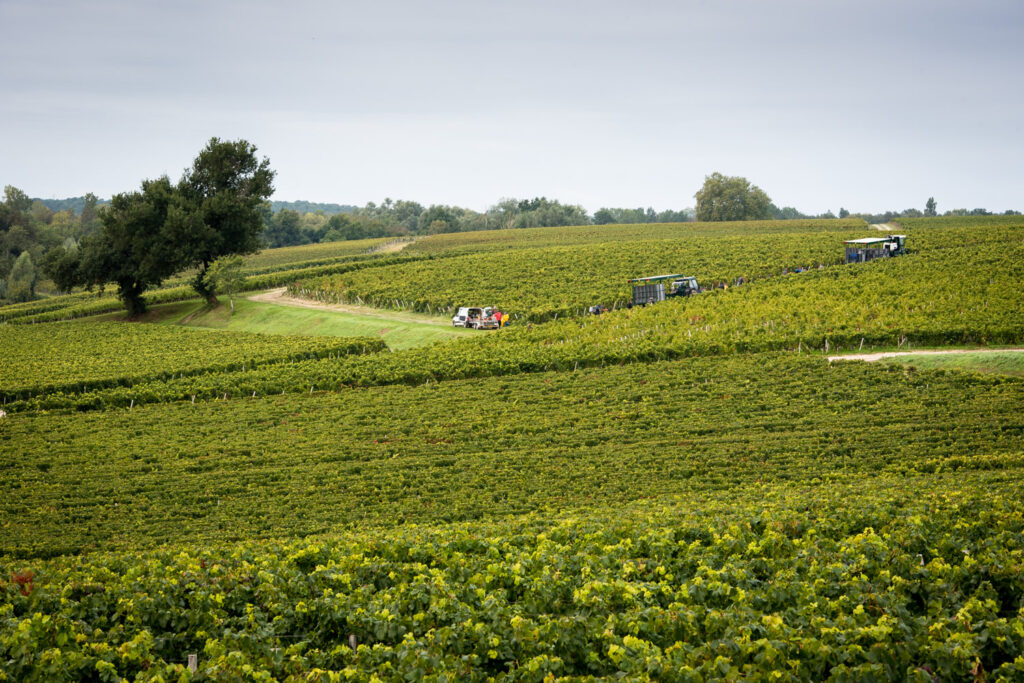
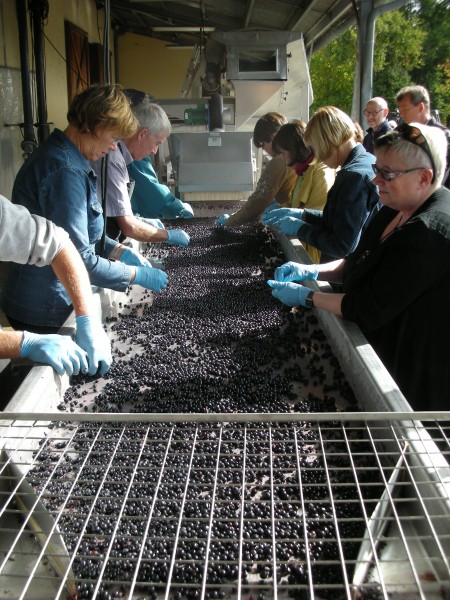
The health and quality of incoming grapes varies not just between vintages, but between individual estates within the same vintage and also within indivudual plots in the same vineyard. Collectors visiting multiple properties during harvest can compare grape quality, sorting stringency, and processing techniques across different estates. This comparative analysis provides invaluable intelligence for making informed purchasing decisions, particularly for en primeur buying where wines must be evaluated and purchased before they're fully mature.
Harvest visits also reveal estate-specific investments in quality that are often not be apparent from tasting finished wines. Some châteaux employ additional sorting personnel during challenging vintages, while others rely more heavily on mechanical sorting and selection. Most estates in Bordeaux invest in precise temperature control during fermentation, while others depend on traditional techniques that may be more variable but potentially more expressive. For collectors building long-term cellars, understanding these philosophical differences helps predict how wines will develop over decades of aging.
For serious collectors, harvest visits provide crucial intelligence for en primeur purchasing decisions. The en primeur system, where Bordeaux wines are sold as futures while still aging in barrels, requires collectors to make purchasing decisions based on limited tastings of unfinished wines. Collectors who visit during harvest gain substantial advantages in this process.
Understanding harvest conditions and estate-specific responses provides context for evaluating barrel samples when they're released for en primeur tastings the following spring. Collectors who witnessed challenging harvest conditions can better appreciate estates that maintained high standards despite difficulties, while those who observed optimal conditions can identify estates that may have underperformed despite favorable circumstances.
Harvest visits also provide opportunities to establish relationships with estate personnel that prove valuable during en primeur allocations. Collectors who demonstrate genuine interest in the winemaking process and respect for harvest operations often find themselves favorably positioned when highly sought-after wines are allocated among competing buyers.
The timing of harvest visits can also provide intelligence about vintage potential. Years with late harvests due to delayed ripening may produce wines with different characteristics than those with early, rapid harvests. Collectors who observe these timing differences firsthand can better predict how wines will develop and age, informing both purchasing and cellaring decisions.
Successfully experiencing Bordeaux harvest requires sophisticated logistical planning that goes far beyond standard travel arrangements. Accommodation in Bordeaux becomes scarce during harvest season, with wine professionals, journalists, and knowledgeable collectors all competing for hotel availability. The most desirable properties, particularly those offering wine-focused amenities, often book months in advance.
Transportation during harvest requires special consideration, as increased traffic from harvest workers and transport vehicles can significantly impact travel times between estates. Decanter Tours' guides understand these patterns and build appropriate buffer time into schedules, ensuring that delays don't compound throughout the day.
Restaurant reservations also become more challenging during harvest season, as the influx of wine professionals and collectors creates increased demand for the region's limited fine dining establishments. Collectors planning harvest visits should make restaurant reservations well in advance and be prepared for modified menus as establishments focus on accommodating increased demand.
For serious wine enthusiasts wanting a quality experience, the cost of professional guidance during harvest season represents an investment rather than an expense. The access, insights, and relationships that experienced guides provide simply cannot be replicated through individual effort, particularly during the restrictive harvest period.
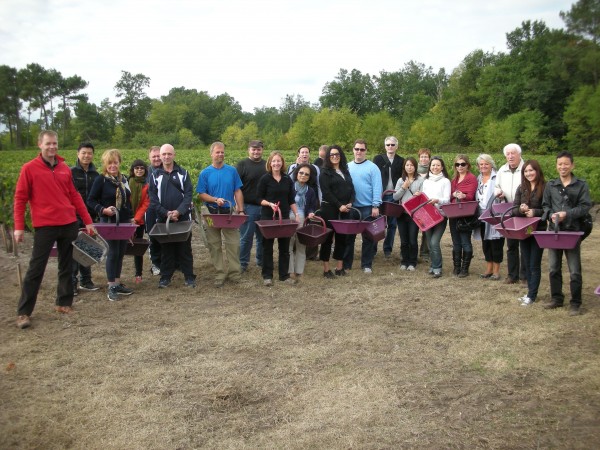
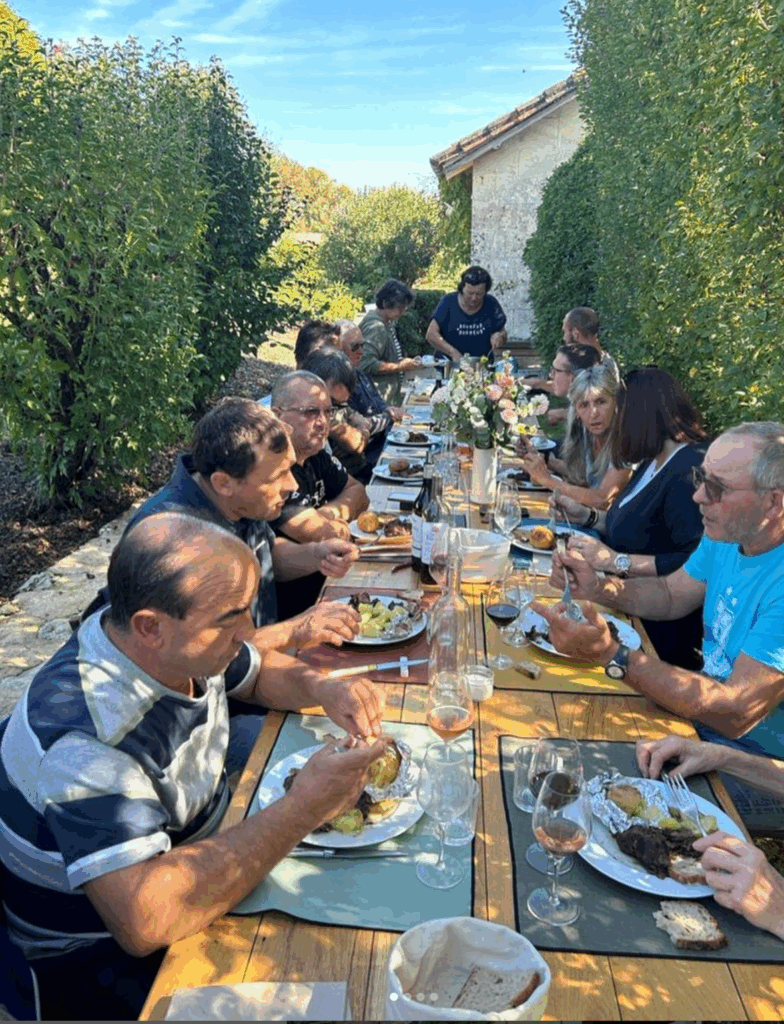
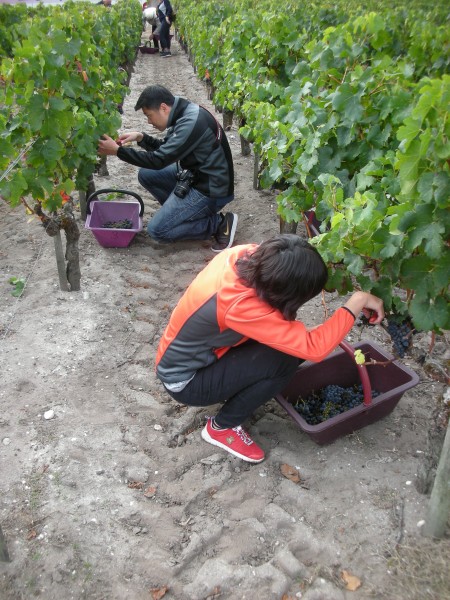
Decanter Tours bring decades of relationship building that individual collectors cannot match. We understand the personalities, preferences, and schedules of key personnel at premier estates. We know which winemakers enjoy technical discussions about vineyard management and which prefer to focus on philosophical aspects of winemaking. We can also read the subtle cues that indicate when a visit should be extended because genuine enthusiasm is present versus when professional courtesy requires a prompt departure.
The educational value that Decanter Tours' guides provide during harvest visits extends far beyond simple appointment arrangement. Our experienced guides can provide real-time context for what collectors are observing, explaining how current harvest conditions compare to historical norms and how estate-specific decisions reflect broader winemaking philosophies.
Most importantly, our guides ensure that collector visits enhance rather than impede harvest operations. We understand the delicate balance between satisfying your curiosity and respecting the urgent demands of harvest season. This sensitivity protects the relationships that make future visits possible while ensuring that current experiences are as rich and informative as possible.
The Bordeaux harvest represents the ultimate challenge for discerning wine enthusiasts: accessing the region's most prestigious estates during their most restrictive and exciting period. Success requires sophisticated planning, established relationships, and expert guidance that transforms potential obstacles into unprecedented opportunities.
For those willing to invest in professional expertise during harvest season, Decanter Tours offers experiences that fundamentally enhance your relationship with Bordeaux wines. The sensory immersion, vintage intelligence, and exclusive access available during harvest provide insights that inform collecting decisions for decades.
The harvest season demands respect, preparation, and expertise, but rewards those qualities with access to experiences that casual visitors simply cannot achieve. For the discerning collector, there is no substitute for witnessing the birth of legendary wines in the exact moment of their creation. Email Decanter Tours for your Bordeaux Harvest Tour.
Q: How far in advance should I book a harvest tour with Decanter Tours? A: We recommend booking harvest tours at least 6-8 months in advance, ideally during the previous winter or early spring. Many prestigious châteaux completely limit access during harvest, and we secure these exclusive appointments when estates are planning their harvest calendars.
Q: What happens if weather conditions disrupt the harvest schedule during my visit? A: We are in an. industry where weather rules everything. Our experienced guides build flexibility into our harvest itineraries specifically to accommodate weather-driven changes. We monitor weather forecasts closely and do our utmost before your arrival to maximize your harvest experience.
Q: Can Decanter Tours arrange for me to participate hands-on in the harvest process? A: Yes, we can arrange hands-on experiences including grape sorting, barrel tastings, and in some cases, participation in harvest activities. However, these opportunities depend on estate policies and harvest conditions and they change every year. We work directly with château management to arrange appropriate participation levels that enhance your experience without interfering with critical harvest operations.
Q: How does Decanter Tours ensure access to premier estates during their busiest season? A: We have spent years building personal relationships with château owners, winemakers, and estate managers. We secure harvest appointments months in advance and maintain ongoing communication about harvest timing. Many estates that refuse individual requests will accommodate our established relationships, particularly when we demonstrate respect for their harvest priorities.
Q: What exclusive experiences can Decanter Tours provide during harvest that I couldn't access independently? A: Our relationships enable access to working fermentation rooms, direct tank tastings, private conversations with winemakers during harvest, and behind-the-scenes access to sorting and processing areas. We can also arrange comparative tastings of different lots and vineyard blocks during fermentation, providing vintage assessment opportunities unavailable to casual visitors.
Q: How do harvest tours differ from regular château visits in terms of duration and intensity? A: Harvest tours are typically more intensive and shorter at individual estates, as we respect the time constraints of active harvest operations. However, the experience is far more immersive, including sensory elements unavailable during quieter periods. Our guides structure days to maximize exposure while remaining sensitive to harvest demands.
Q: Can Decanter Tours help me assess vintage potential for en primeur purchases? A: Absolutely. Our harvest tours provide crucial intelligence for future en primeur decisions. Our guides all have some sort of qualification in wine (WSET, MW, MS, DUAD etc) and will help you understand harvest conditions, estate-specific responses to challenges, and comparative quality across different properties. This intelligence proves invaluable when barrel samples are released for en primeur evaluation the following spring.
Q: What should I expect in terms of tasting opportunities during harvest visits? A: Harvest tastings often include fresh grape sampling, must tastings during crushing, and fermentation tank tastings that show wines in their most transformative state. These tastings provide insight into vintage potential and winemaking decisions that standard tours cannot offer. Our guides ensure you understand what you're tasting and how it relates to finished wine quality.
Q: How does Decanter Tours handle the increased logistical challenges of harvest season? A: We provide comprehensive logistical support including advance accommodation bookings, transportation coordination that accounts for harvest traffic patterns, and restaurant reservations at establishments that may have limited availability. Our local expertise ensures smooth travel despite the increased complexity of harvest season logistics.
Q: It's September. Is it too late to reserve my place for a comprehensive harvest experience with Decanter Tours? A: Harvest tours represent a premium experience due to their exclusivity and the intensive preparation required. We need sufficient time to organize these premium visits. It is advisable to book at least 6 months in advance but we will always try to accommodate even last minute requests. We provide detailed proposals based on your specific interests and requirements, ensuring maximum value for your investment in this once-in-a-lifetime experience.
What You'll Learn in This Guide:
Whether you're planning your first visit or looking to deepen your wine knowledge, this guide provides everything you need to navigate Bordeaux's legendary wine region with confidence.
Welcome to Bordeaux, the crown jewel of France’s wine regions, where centuries of tradition meet modern craftsmanship in every grape vine, vineyard and bottle. As you embark on this captivating journey through vast vineyards and charming châteaux, you’ll discover why Bordeaux is revered by oenophiles worldwide. From the rich flavors of Cabernet Sauvignon to the elegant notes of Merlot, each glass tells a story steeped in heritage and passion. This ultimate guide to wine tasting in Bordeaux is designed to lead you through the essentials—whether you’re a novice eager to learn or a seasoned connoisseur seeking hidden gems. Get ready to explore the diverse appellations, savor exceptional vintages, and indulge in unforgettable wine experiences with Decanter Tours. Bordeaux is not just a destination; it's an adventure for the senses that invites you to uncork memories that will linger long after your visit. Join us as we dive into the heart of this enchanting region and unlock the secrets of its legendary wines.
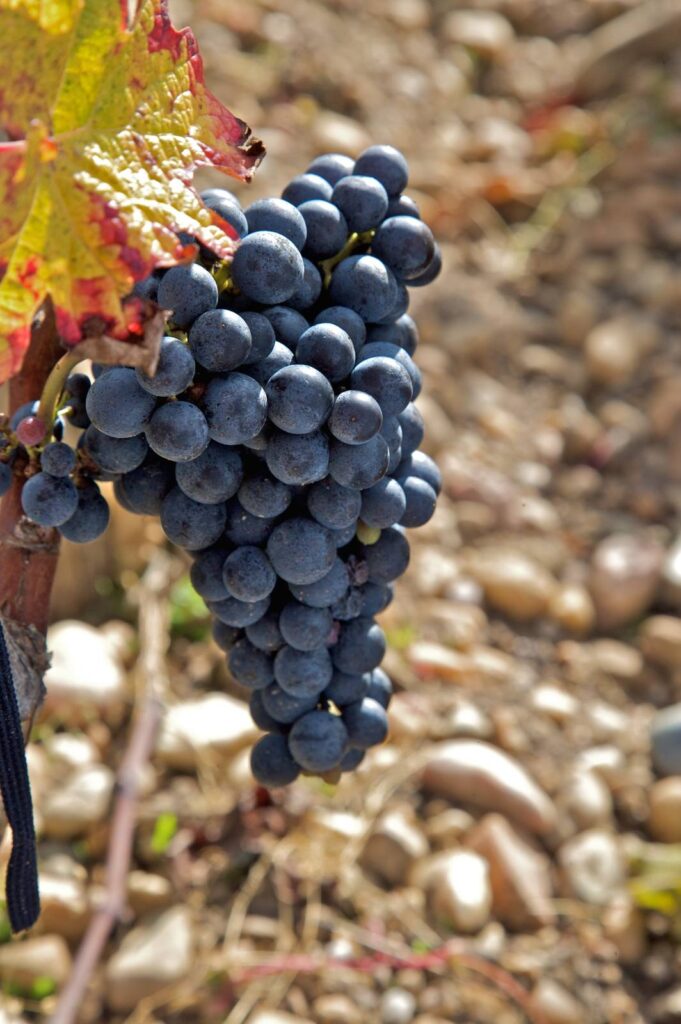
Bordeaux’s terroir is a mosaic of diverse soils, climates, and topographies that contribute to the distinct characteristics of its wines. The region is blessed with a temperate maritime climate, moderated by its proximity to the Atlantic Ocean, ensuring mild winters and warm summers. This ideal climate fosters the optimal ripening of grapes, creating a balance between acidity and sugar levels, crucial for producing high-quality wines. The geographical diversity of Bordeaux, spanning from the Médoc to the Graves, offers a rich variety of microclimates, each influencing the flavor profiles of the wines produced.
The soil composition in Bordeaux is equally varied, ranging from gravelly soils in the Médoc and Graves to clay-limestone in Saint-Émilion and Pomerol. The gravelly soils, rich in minerals, provide excellent drainage and reflect heat, promoting the ripening of Cabernet Sauvignon, which thrives in these conditions. On the other hand, the clay-limestone soils retain moisture and nutrients, favoring the growth of Merlot and Cabernet Franc, resulting in wines with softer tannins and complex aromas. These diverse soil types are meticulously matched with the grape varietals that best suit them, a practice perfected over centuries by Bordeaux’s winemakers.
The terroir of Bordeaux is not just about soil and climate; it also encompasses the human element—the traditions, expertise, and passion of the vintners. The region’s wine-making heritage dates back to Roman times, and over the centuries, Bordeaux’s winemakers have honed their craft, adapting to changing climates and technological advancements while preserving time-honored methods. The dedication to quality and innovation is evident in every bottle, making Bordeaux a benchmark for fine wines globally. Understanding the terroir is the first step in appreciating the depth and complexity of Bordeaux wines, setting the stage for an unforgettable tasting experience.
Bordeaux is predominantly known for its red wines, which account for about 90% of the region’s production. These reds are renowned for their depth, complexity, and aging potential, with the most famous appellations including Médoc, Saint-Émilion, Pomerol, and Graves. The primary grape varieties used in Bordeaux reds are Cabernet Sauvignon, Merlot, Cabernet Franc, Petit Verdot, and Malbec. Cabernet Sauvignon imparts structure and tannins, Merlot adds softness and fruitiness, while Cabernet Franc contributes aromatic complexity. The art of blending these varietals creates wines with balanced flavors, long finishes, and remarkable elegance.

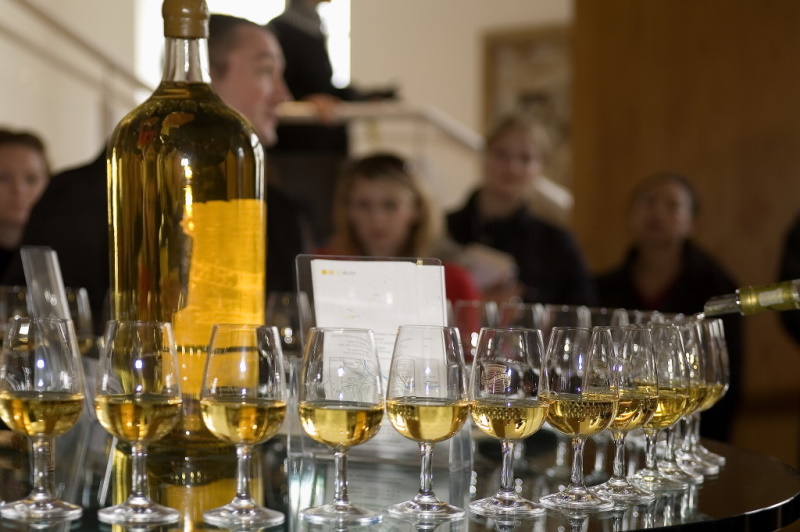
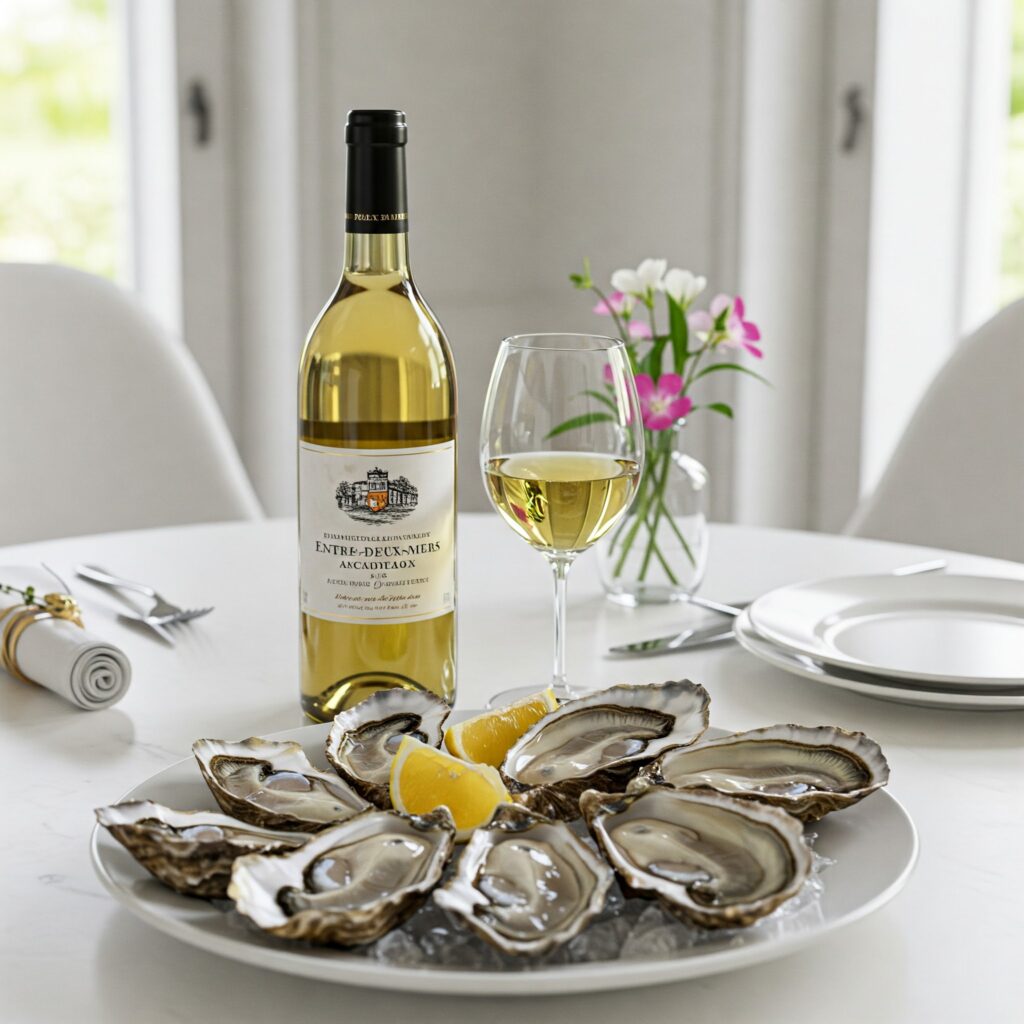
While red wines dominate, Bordeaux also produces exquisite white wines that deserve equal recognition. The region’s white wines are primarily crafted from Sauvignon Blanc, Sémillon, and Muscadelle grapes. Bordeaux offers two main styles of white wines: dry and sweet. Dry whites, such as those from Graves and Pessac-Léognan, are crisp, vibrant, and aromatic, perfect for pairing with seafood and poultry. On the other hand, sweet whites, epitomized by the legendary Sauternes and Barsac, are rich, luscious, and honeyed, often enjoyed as dessert wines. These sweet wines are made from grapes affected by noble rot, which concentrates sugars and flavors, resulting in wines with extraordinary depth and complexity.
Rosé wines, though less prominent, are also part of Bordeaux’s diverse wine portfolio. These refreshing and versatile wines are made primarily from Merlot and Cabernet Sauvignon grapes. Bordeaux rosés are typically dry, with bright acidity and flavors of red berries and citrus. They are perfect for warm summer days and pair wonderfully with light dishes like salads, grilled fish, and Mediterranean cuisine. The variety of Bordeaux wines—red, white, sweet, and rosé—ensures that there is something to suit every palate and occasion, making the region a treasure trove for wine lovers.
Planning a wine tasting trip to Bordeaux involves considering the best times to visit to fully experience the region’s offerings. Bordeaux’s wine tourism season generally peaks during spring and summer, from April to October. Springtime in Bordeaux is idyllic, with vineyards coming to life, mild temperatures, and fewer crowds. This season offers an excellent opportunity to explore the vineyards, witness the budding vines, and enjoy outdoor activities like cycling and picnicking amidst beautiful landscapes. Moreover, spring is when many châteaux start their new vintages, providing visitors with a chance to taste wines fresh from the barrels.
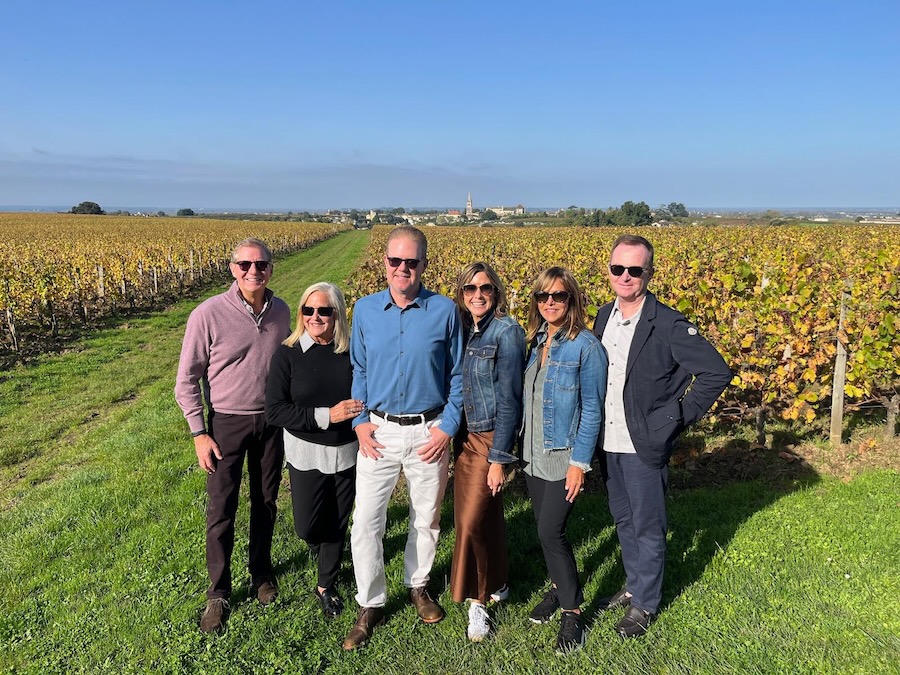
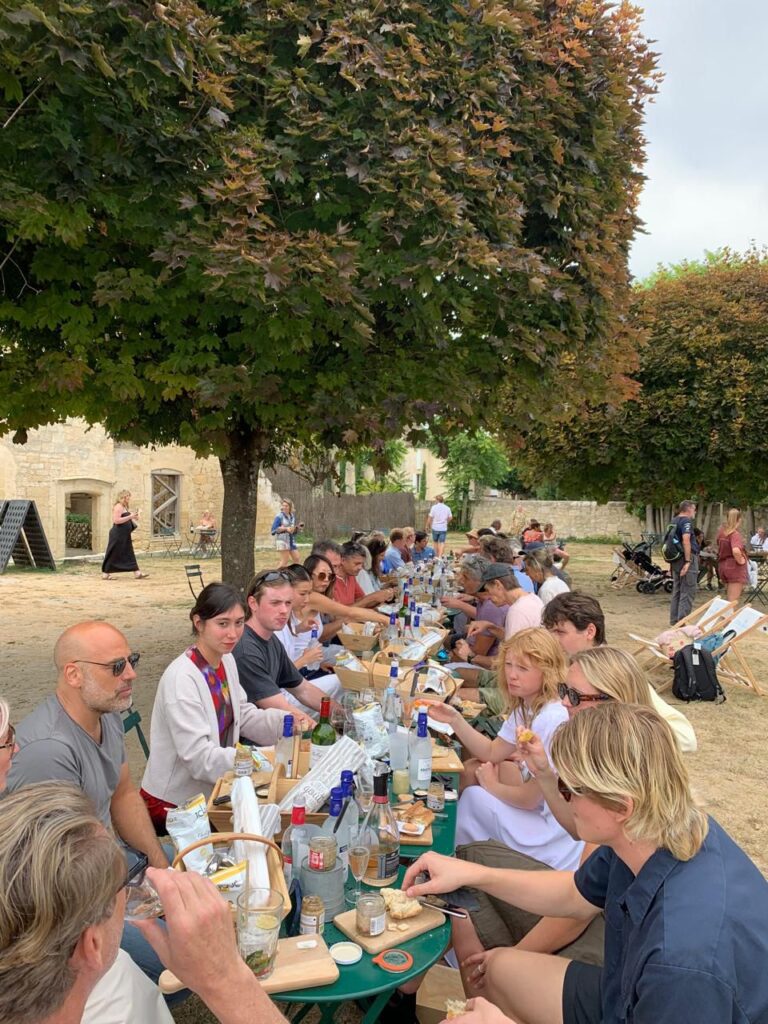
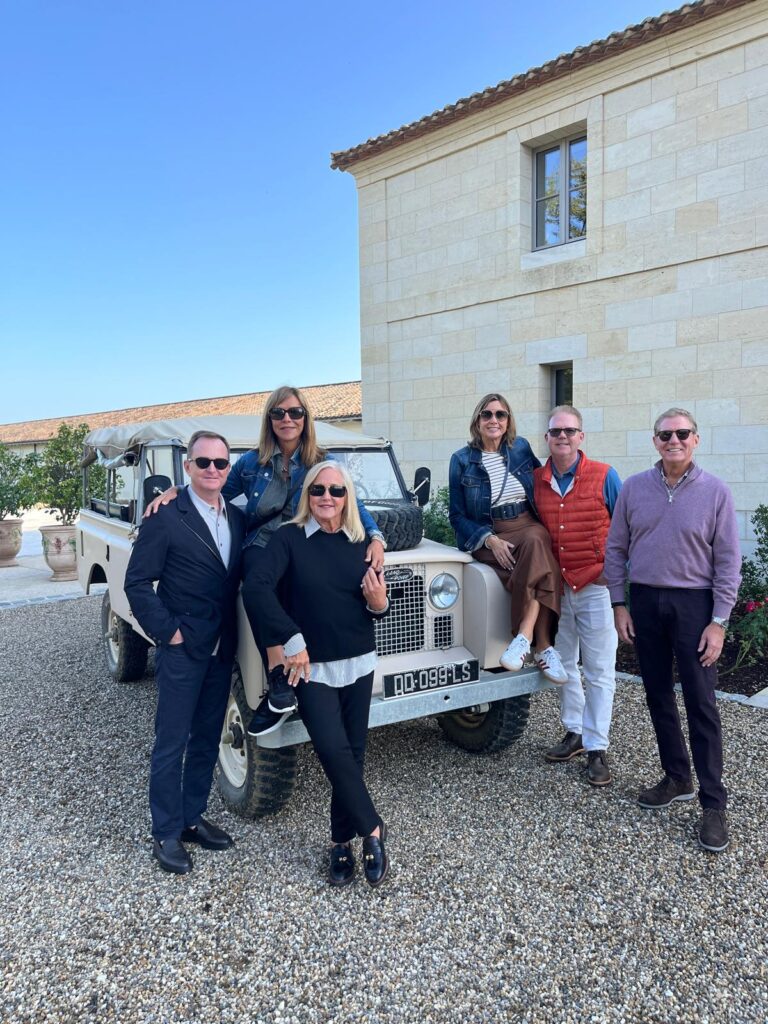
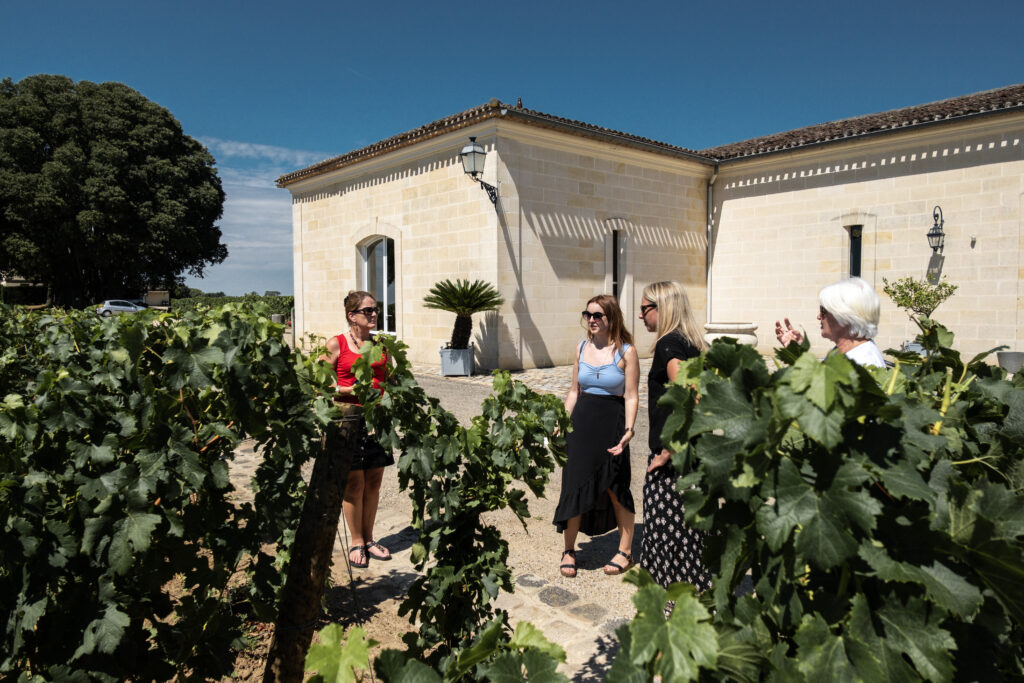
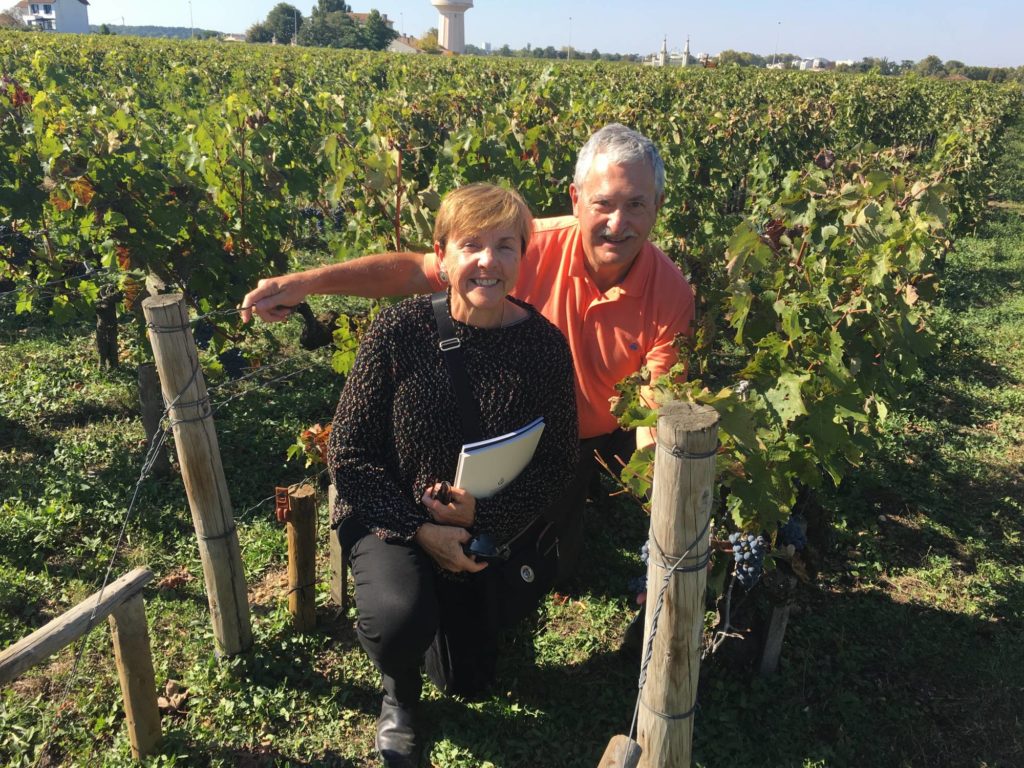
Summer in Bordeaux is vibrant and bustling, with numerous wine festivals, events, and tours in full swing. The warm weather is perfect for vineyard tours, outdoor tastings, and exploring the picturesque villages and historic sites. The Bordeaux Wine Festival, held biennially in June, is a highlight, featuring wine tastings, workshops, and cultural events along the scenic Garonne River. However, summer also attracts larger crowds, so booking tours and accommodations in advance is recommended. Despite the busy season, the charm and excitement of Bordeaux in summer are unmatched, offering a festive atmosphere for wine enthusiasts.
Autumn, from September to October, is another excellent time to visit Bordeaux, coinciding with the grape harvest season. The vineyards are bustling with activity as winemakers and workers gather grapes, and the air is filled with the aroma of fermenting wine. This period provides a unique opportunity to observe the harvest process, participate in grape-picking activities, and taste freshly pressed juices. The fall foliage adds to the region’s beauty, creating a picturesque backdrop for vineyard tours and wine tastings. Visiting Bordeaux during the harvest season offers an immersive experience into the heart of winemaking, making it a memorable time for any wine lover.
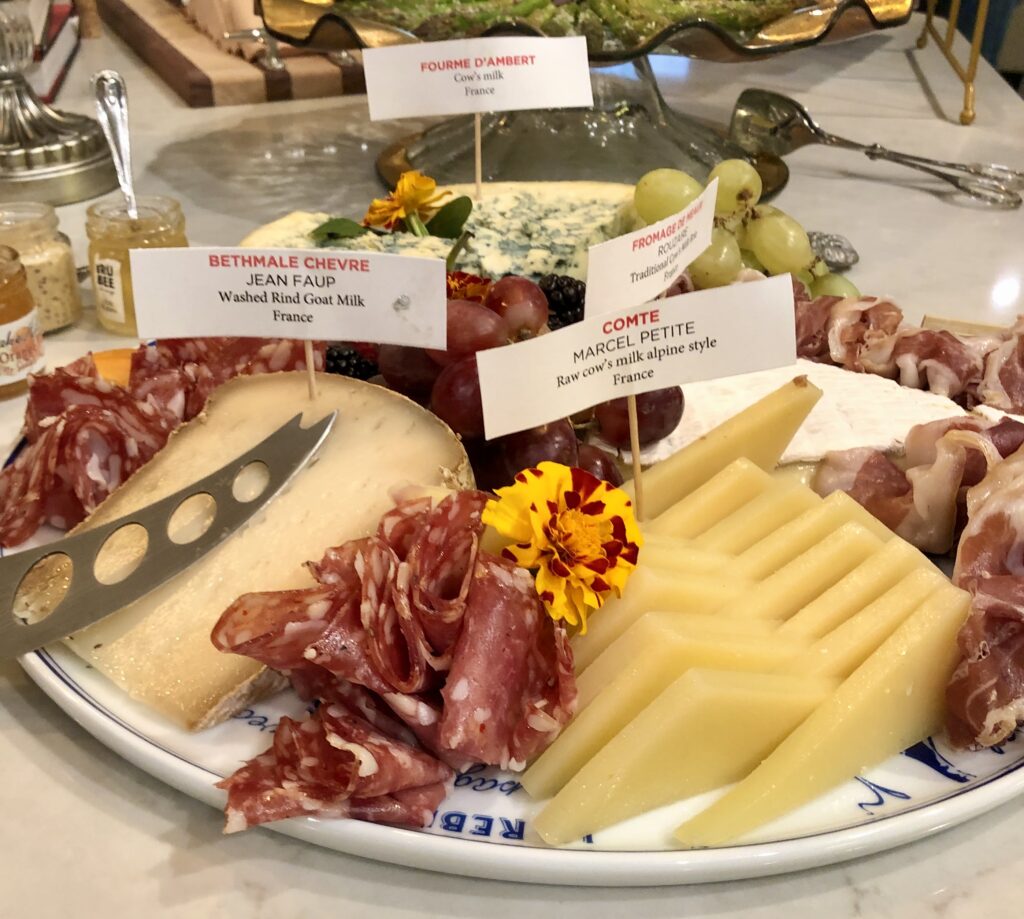
Pairing Bordeaux wines with food is an art that enhances the enjoyment of both the wine and the culinary experience. Bordeaux’s diverse wine styles offer a plethora of pairing options, making it possible to complement a wide range of dishes. For red Bordeaux wines, particularly those from Médoc and Saint-Émilion, rich and hearty dishes like beef, lamb, and game are ideal. The tannins and structure of Cabernet Sauvignon-based wines balance well with the protein and fat in these meats, creating a harmonious and satisfying pairing. Try a classic Bordeaux red with a succulent ribeye steak or a slow-cooked lamb shank to experience the perfect synergy. The reds from the Graves are lighter and often easier to pair with chicken and fish. Yes, I said red wine with fish!
White Bordeaux wines, especially those from Graves and Pessac-Léognan, are versatile and pair beautifully with lighter fare. Sauvignon Blanc’s bright acidity and aromatic qualities make it an excellent match for seafood, salads, and goat cheese. Sémillon-based whites, with their fuller body and subtle complexity, complement dishes like roast chicken, creamy pasta, and grilled vegetables. For a delightful pairing, serve a chilled dry white Bordeaux with fresh oysters or a seafood platter, allowing the wine’s crispness to enhance the flavors of the ocean.

Sweet Bordeaux wines, such as Sauternes and Barsac, are often though of only for dessert pairings but they offer intriguing combinations with savory dishes too. These wines’ rich sweetness and complexity make them ideal for foie gras, blue cheese, grilled honey roast chicken, or spicy Asian cuisine. The honeyed notes of Sauternes beautifully balance the salty and pungent flavors of blue cheese, creating an exquisite tasting experience. For a unique pairing, try a glass of sweet Bordeaux with spicy Thai or Indian dishes, where the wine’s sweetness can counterbalance the heat and bring out the dish’s intricate flavors.
To truly immerse yourself in Bordeaux’s wine culture, participating in wine tours and experiences is essential. Having someone show you the ropes is essential. Not only because securing visits is often very tricky but also because of the inside information that can be gleaned from having a local lead the way. Decanter Tours offer a plethora of guided tours, each tailored to different interests and levels of expertise. Whether you prefer intimate visits to boutique wineries or grand tours of historic châteaux, there’s something for everyone. All of our tours include guided tastings, vineyard walks, and educational sessions on wine production, allowing visitors to gain a deeper understanding of Bordeaux’s winemaking traditions and techniques. Booking a tour with our competent and knowledgeable guides ensures a comprehensive and enriching experience, providing insights that you will definitely miss on a self-guided visit.
For a more immersive experience, consider staying at a wine estate or château. Many Bordeaux vineyards offer accommodations, ranging from luxurious rooms in historic châteaux to charming cottages amidst the vines. Staying on-site allows you to explore the vineyards at your leisure, participate in exclusive tastings, and interact with the winemakers. Some estates offer hands-on activities like grape picking, blending sessions, and cooking classes, enhancing your understanding of the wine-making process. Waking up to the sight of sunlit vineyards and ending the day with a glass of estate-produced wine is an experience that encapsulates the essence of Bordeaux. Decanter Tours has many partner chateaus that are just perfect for overnight stays.
Beyond traditional tours, Bordeaux also offers a range of unique wine experiences. For adventure seekers, hot air balloon rides over the vineyards provide breathtaking views and a unique perspective on the landscape. Cycling tours through the vineyards combine physical activity with wine tasting, perfect for those who enjoy an active lifestyle. A white wine and oyster tasting on a traditional boat on the Bay of Arcachon provides a different look at the French life-style in Bordeaux. Wine and food pairing workshops, wine blending sessions, and vertical tastings of different vintages offer deeper insights into the intricacies of Bordeaux wines. These experiences, coupled with the region’s stunning scenery and rich history, ensure that your visit to Bordeaux is both memorable and enlightening.
As you conclude your journey through Bordeaux, it’s evident that this region offers more than just exceptional wines; it provides an immersive experience that engages all the senses. From understanding the terroir to exploring the diverse wine styles, every aspect of Bordeaux enriches your appreciation for its wine heritage. Whether you’re savoring a robust red with a hearty meal, enjoying a crisp white on a sunny day, or indulging in a sweet Sauternes with dessert, Bordeaux wines elevate every moment, creating memories that linger long after the last sip.
Decanter Tours offers curated experiences that encapsulate the essence of Bordeaux, ensuring that your visit is both informative and enjoyable. Their expertise in wine tourism and connections with local winemakers provide access to exclusive tours and tastings, allowing you to discover hidden gems and renowned estates alike. Whether you’re a novice eager to learn or a seasoned connoisseur seeking deeper insights, Decanter Tours tailors each experience to your preferences, making your Bordeaux adventure truly unforgettable.
Embracing the Bordeaux wine experience with Decanter Tours is more than a journey through vineyards; it’s an invitation to connect with the soul of the region. Every glass of wine tells a story of passion, tradition, and craftsmanship, inviting you to become part of Bordeaux’s rich tapestry. As you uncork each bottle, you uncork a piece of history, savoring the flavors that have made Bordeaux a legend in the world of wine. So raise your glass, toast to new adventures, and let the magic of Bordeaux inspire and delight you.
Contact us to know more.
Q: What makes Bordeaux wines different from other French wines? A: Bordeaux wines are distinguished by their unique terroir—a combination of maritime climate, diverse soils (gravel, clay-limestone), and centuries-old winemaking traditions. The region's signature blending of grape varieties (particularly Cabernet Sauvignon and Merlot for reds) creates wines with exceptional complexity and aging potential that set them apart from single-varietal wines from other regions.
Q: I'm a complete beginner—which Bordeaux wines should I try first? A: Start with a medium-bodied red from Graves or a Bordeaux Supérieur, as these tend to be more approachable with softer tannins. For whites, try a dry Bordeaux Blanc or Graves white wine. These wines offer classic Bordeaux characteristics without being overwhelming for new wine drinkers.
Q: What's the difference between Left Bank and Right Bank Bordeaux wines? A: Left Bank wines (Médoc, Haut-Médoc) are predominantly Cabernet Sauvignon-based, grown in gravelly soils, resulting in structured, tannic wines with excellent aging potential. Right Bank wines (Saint-Émilion, Pomerol) are mainly Merlot-based, grown in clay-limestone soils, producing softer, more fruit-forward wines that are often more accessible when young.
Q: How far in advance should I book wine tours in Bordeaux? A: Book at least 2-4 months in advance is a good estimate if not more, especially during peak season (May-October). Many prestigious châteaux require advance reservations and some only accept visitors through tour operators like Decanter Tours. Harvest season (September-October) and May are particularly popular and fill up quickly.
Q: What should I expect to pay for wine tastings in Bordeaux? A: Tasting fees vary widely. Basic tastings at smaller châteaux may be €15 - 50, while prestigious estates can charge €95-150 or more. We include all tastings in our itineraries, which provides better value.
Q: Can I buy wines directly from the châteaux? A: Yes, most but not all châteaux sell wines directly to visitors, often at competitive prices. This is an excellent way to acquire wines not available in your home country. Ask about shipping options if we often can arrange delivery for our clients.
Q: What's the best way to get around Bordeaux wine country? A: Guided tours are highly recommended for first-time visitors as they handle transportation, appointments, lunch reservations and provide expert knowledge. If you prefer independence, renting a car is possible, but designate a driver. Some areas are accessible by bike, and there are train connections to certain wine towns but these are not too practical.
Q: Do I need to speak French to enjoy Bordeaux wine tours? A: While French is helpful, we cater to international visitors with English-speaking guides. We provide expert English-speaking guides who can translate and explain nuances that might be lost in language barriers.
Q: What should I wear for vineyard visits? A: Dress smart-casual and wear comfortable walking shoes suitable for outdoor terrain. Avoid strong perfumes or scents that might interfere with wine tasting. In summer, bring sun protection; in cooler months, layer clothing as cellar temperatures can be quite cool.
Q: Is it appropriate to spit wine during tastings? A: Absolutely! Professional tasters routinely spit wine to avoid intoxication, especially when tasting multiple wines. Spittoons are provided at all professional tastings, and it's considered perfectly normal and responsible.
Welcome to the enchanting world of Bordeaux, France, where vineyards stretch as far as the eye can see, and each bottle tells a captivating story. If you’ve ever dreamed of sipping the finest wines while surrounded by picturesque landscapes and rich history, you’re in the right place! In this ultimate guide to Bordeaux, we’ll take you on a journey through the best wine tours Bordeaux has to offer, highlighting unforgettable vineyard visits and tastings that ignite your senses. From rustic châteaux to innovative wineries, Bordeaux is not just a region, its not just a wine; it’s an experience waiting to happen. Whether you're a seasoned connoisseur or a curious beginner, we'll help you discover the hidden gems and must-visit spots that will make your trip extraordinary. With Decanter Tours' expertise and 20 years of experience in crafting custom private Bordeaux wine tours, you are sure to discover the Best Bordeaux has to offer. So get ready and let’s dive into the rich world of Bordeaux’s wine culture, where every sip is a step into a legacy of tradition art and refinement.
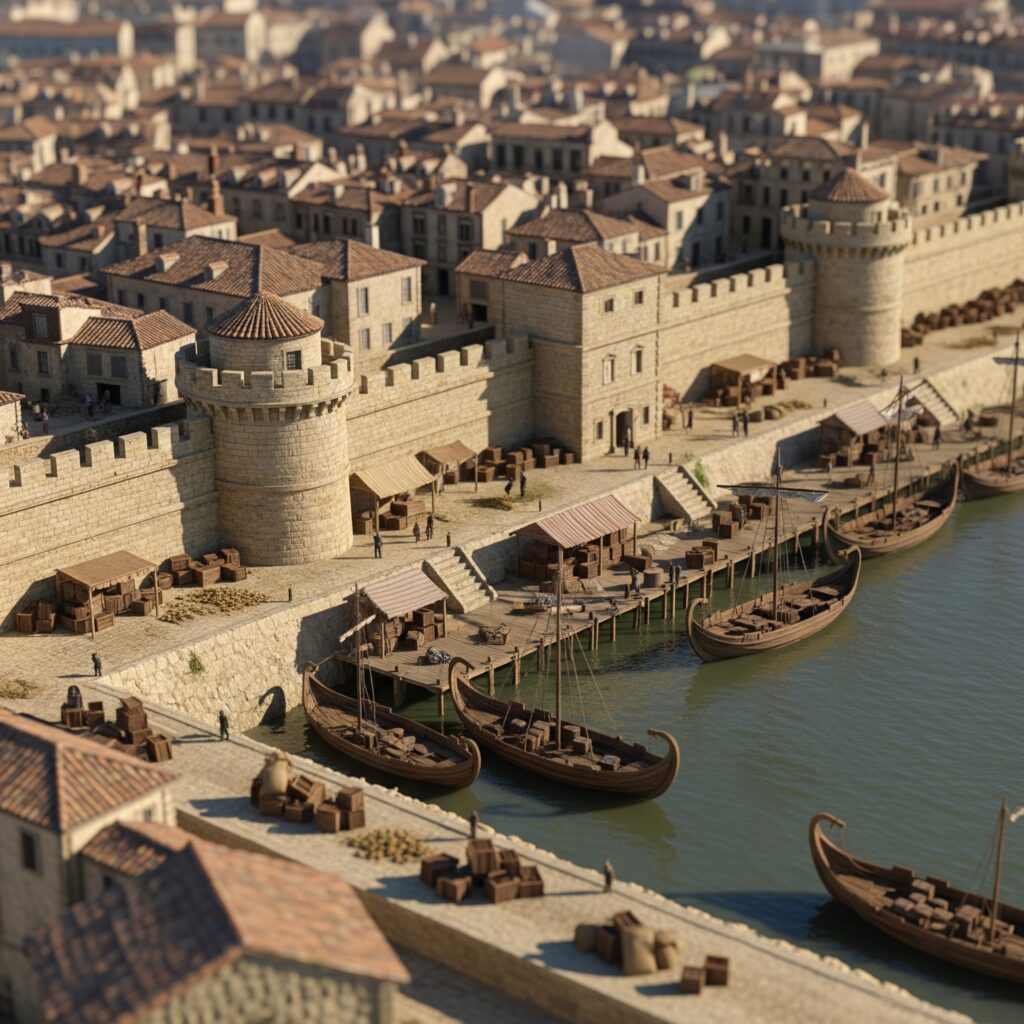
Bordeaux's wine history dates back to the Roman era, around the 1st century AD, when the Romans planted the first vines in the region. The fertile soil and favorable climate made Bordeaux an ideal location for viticulture. Over the centuries, the region's winemaking techniques evolved, influenced by the various cultures and civilizations that passed through. The Middle Ages saw the growth of Bordeaux as an important trading port, with wine becoming one of its primary exports. Traders from England, the Netherlands, and other parts of Europe helped to spread the reputation of Bordeaux wines far and wide.
The 17th and 18th centuries marked a significant period of growth and refinement for Bordeaux wines. The introduction of new grape varieties and the development of sophisticated winemaking techniques led to the creation of the region's renowned wine estates, or châteaux. During this time, Bordeaux established itself as a leader in the global wine market, with its wines becoming highly sought after by royalty, nobility, and wealthy merchants. The classification of Bordeaux wines in 1855, commissioned by Emperor Napoleon III, further solidified the region's status, with the top estates being designated as "Grand Cru Classé."
Today, Bordeaux continues to be a symbol of excellence in the wine world. The region is home to over 7,000 wine producers and more than 120,000 hectares of vineyards. Its wines are celebrated for their complexity, elegance, and ability to age gracefully. Bordeaux's winemaking tradition is deeply rooted in its history, and each bottle tells a story of the land, the people, and the passion that goes into creating these exceptional wines. Whether you are exploring the historic châteaux or discovering new, innovative wineries, the legacy of Bordeaux's wine history is ever-present.
Bordeaux is renowned for its diverse range of wines, which are predominantly blends of different grape varieties. The region is divided into two main areas: the Left Bank and the Right Bank, each with its unique terroir and wine styles. On the Left Bank, the Médoc and Graves appellations are famous for their red wines, which are primarily made from Cabernet Sauvignon, Merlot, and Cabernet Franc. These wines are known for their deep color, robust tannins, and complex flavors, often featuring notes of blackcurrant, cedar, and tobacco.
The Right Bank, which includes the prestigious appellations of Saint-Émilion and Pomerol, is known for its Merlot-dominant blends as well as Cabernet Franc and a little bit of Malbec. These wines tend to be softer, rounder, and more approachable in their youth compared to their Left Bank counterparts. The clay and limestone soils of the Right Bank contribute to the rich, velvety texture and luscious fruit flavors, with hints of plum, chocolate, and spice. Both the Left Bank and Right Bank have their own unique characteristics, but together they represent the epitome of Bordeaux's red wine excellence.
Bordeaux is not just about red wine; the region also produces exceptional white wines. The dry white wines of Bordeaux, primarily from the Pessac-Léognan and Graves appellations, are made from Sauvignon Blanc, Sémillon, and Muscadelle. These wines are known for their crisp acidity, vibrant fruit flavors, and mineral complexity. Bordeaux's sweet white wines, particularly those from Sauternes and Barsac, are world-famous for their luscious sweetness and botrytis (noble rot) character. Made from Sémillon, Sauvignon Blanc, and Muscadelle, these golden-hued wines offer rich flavors of honey, apricot, and marmalade, with a remarkable balance of sweetness and acidity.

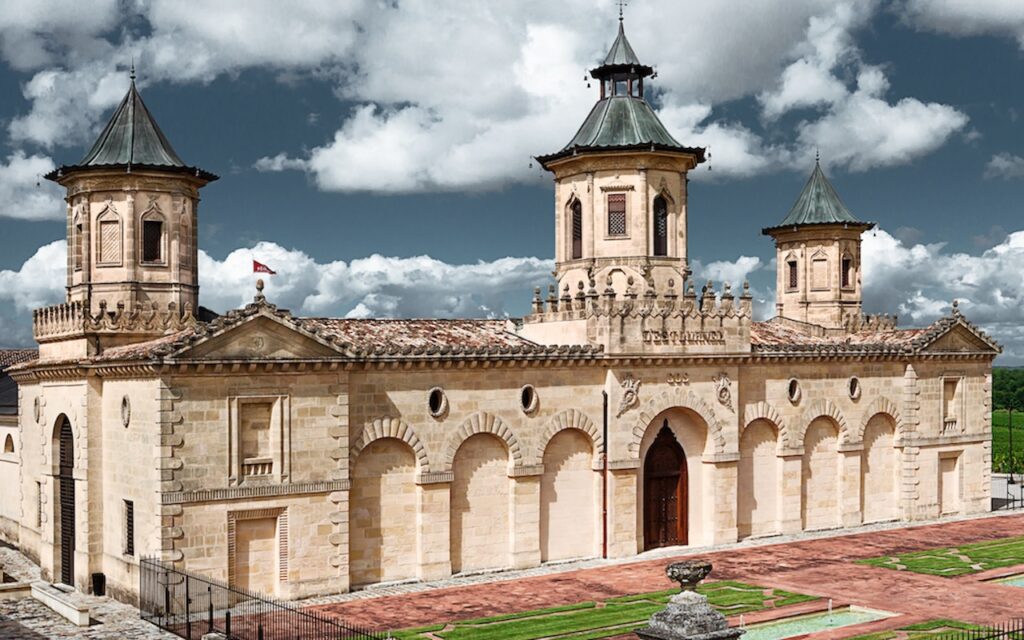
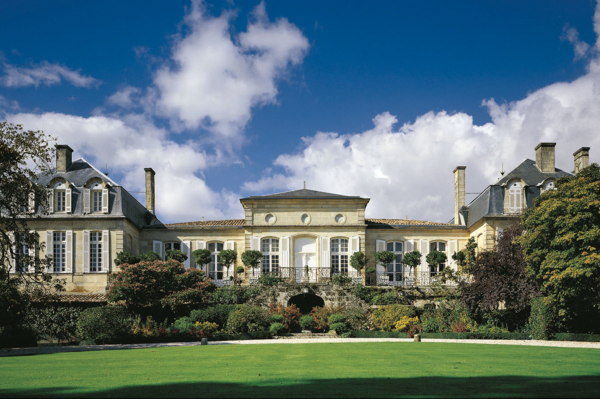
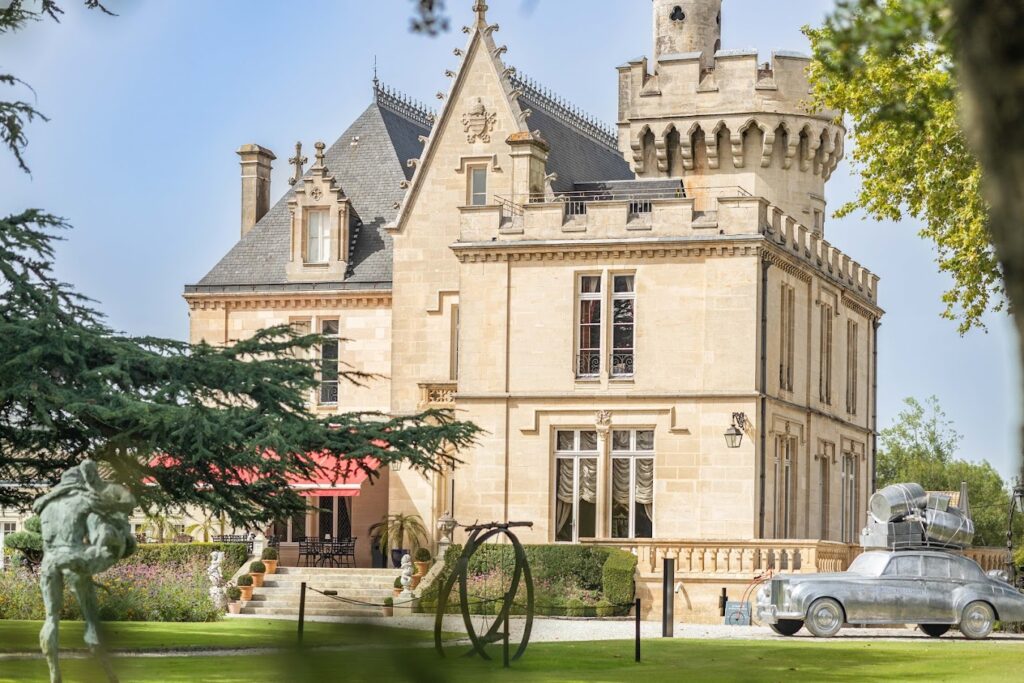
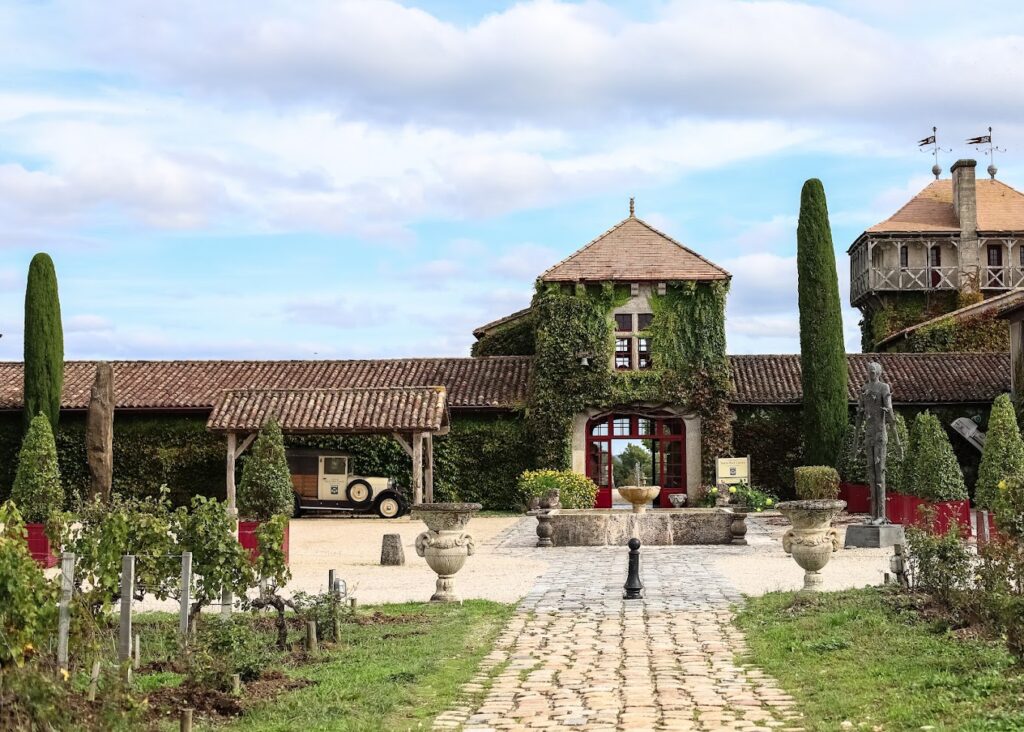
Bordeaux is home to some of the most prestigious vineyards in the world, each offering a unique and unforgettable experience. During a Decanter Tours wine tour you may visit several different chateaux. One of the must-visit estates is Château Margaux, located in the Médoc region on the Left Bank. Known for its elegant and powerful wines, Château Margaux is a symbol of Bordeaux's winemaking excellence. The estate's stunning architecture, beautiful gardens, and historic cellars provide a captivating backdrop for wine tastings and tours. The cellars were recently renovated by Norman Foster. Visitors can explore the vineyards, learn about the winemaking process, and sample the estate's renowned Grand Vin, Pavillon Rouge, and Pavillon Blanc wines.
Another iconic vineyard is Château Latour, also in the Médoc region. Château Latour is revered for its exceptional Cabernet Sauvignon-dominant wines, which are known for their depth, structure, and longevity. The estate's impressive tower, La Tour de Saint-Lambert, is a prominent feature of the landscape and a symbol of the vineyard's rich history. A visit to Château Latour offers a deep dive into the art of winemaking, with guided tours of the vineyards, cellars, and tasting rooms, where visitors can savor some of the finest wines Bordeaux has to offer.
On the Right Bank, Château Cheval Blanc in Saint-Émilion is a must-visit destination. This prestigious estate is renowned for its Merlot and Cabernet Franc blends, which are celebrated for their elegance, complexity, and aging potential. The modern winery, designed by architect Christian de Portzamparc, is a striking contrast to the historic vineyards and offers state-of-the-art facilities for wine production. A visit to Château Cheval Blanc includes a tour of the vineyards, a glimpse into the winemaking process, and a tasting of the estate's exceptional wines, providing a comprehensive and memorable experience for wine enthusiasts.
Château Marquis d'Alesme stands as a hidden gem in the Margaux appellation, offering an intimate and personalized experience that Decanter Tours has carefully cultivated over several years of partnership. This Third Growth estate, with its charming 18th-century château surrounded by meticulously maintained gardens, provides visitors with an unique glimpse into traditional Bordeaux winemaking. What makes this vineyard particularly special with Decanter Tours is the exclusive access to private cellars and the opportunity to taste rare vintages not available to the general public. The estate's commitment to sustainable viticulture and their innovative approach to blending Cabernet Sauvignon, Merlot, and Petit Verdot creates wines of exceptional finesse and complexity that perfectly represent the elegance of Margaux.
Château Palmer, one of the most prestigious estates in the Margaux appellation, offers Decanter Tours guests an unparalleled experience combining art, architecture, and exceptional winemaking. The estate's striking contemporary tasting room, designed by renowned architects, creates a dramatic contrast to the historic vineyards, while their commitment to biodynamic practices demonstrates a forward-thinking approach to viticulture. Through Decanter Tours' exclusive relationships, visitors enjoy private access to the estate's legendary cellars, where they can taste the renowned Palmer blend alongside rare vintages dating back decades. The château's unique approach to incorporating Cabernet Sauvignon, Merlot, and Petit Verdot, combined with their philosophical approach to winemaking that views each vintage as a work of art, creates an unforgettable tasting experience that showcases why Palmer is considered one of Bordeaux's most innovative producers.
Château Beauregard in Pomerol represents the epitome of Right Bank elegance, and Decanter Tours provides exclusive access to this family-owned estate that has been producing exceptional wines for over two centuries. Set amidst Pomerol's famous clay and gravel soils, the château's 17th-century manor house and manicured gardens create an intimate setting for wine lovers seeking to understand the nuances of Merlot-dominant blends. The estate's commitment to traditional winemaking methods, combined with their limited production of around 5,000 cases annually, ensures that each bottle represents the pinnacle of Pomerol craftsmanship.
Château Cos d'Estournel, with its distinctive Oriental-inspired architecture overlooking the Gironde estuary, offers Decanter Tours guests one of Bordeaux's most dramatic and memorable experiences. This Second Growth estate's pagoda-style château, complete with carved wooden doors from the Sultan of Zanzibar's palace, creates an exotic backdrop for tasting some of Saint-Estèphe's most powerful and age-worthy wines. Decanter Tours' long-standing relationship with the estate provides access to exclusive experiences, including private tastings in the estate's historic cellars of these legendary Cabernet Sauvignon-dominant blends. The château's unique microclimate, influenced by its proximity to the estuary, combined with their innovative approach to blending traditional and modern winemaking techniques, creates wines of exceptional depth and complexity that showcase the true potential of Saint-Estèphe terroir.
Château Smith Haut Lafitte in Pessac-Léognan represents the perfect marriage of tradition and innovation, offering Decanter Tours guests an immersive experience in both exceptional red and white wine production. This historic estate, owned by the Cathiard family since 1990, has become a model for sustainable viticulture and luxury wine tourism. With Decanter Tours, visitors can explore the estate's remarkable barrel cooperage, where they craft their own barrels on-site, and experience the unique underground cellars carved into limestone. The château's commitment to producing both world-class reds from Cabernet Sauvignon and Merlot, and exceptional whites from Sauvignon Blanc and Sémillon, provides a comprehensive understanding of Graves terroir. The estate's luxury spa, vineyard hotel, and Michelin-starred restaurant create an all-encompassing wine country experience that Decanter Tours seamlessly integrates into personalized itineraries.
Château Haut-Bailly, one of Pessac-Léognan's most elegant producers, offers Decanter Tours guests an intimate encounter with Bordeaux's winemaking artistry in a setting that perfectly balances tradition with modernity. This historic estate, dating back to the 16th century, focuses exclusively on red wine production, allowing them to perfect their craft with Cabernet Sauvignon, Merlot, and Cabernet Franc blends that exemplify the finesse and complexity of Graves terroir. The team of Haut Bailly shares insights into their philosophy of minimal intervention and respect for the vineyard's natural expression. The château's beautiful gardens, historic cellars, and commitment to producing wines that age gracefully for decades create an atmosphere where visitors can truly appreciate the patience and dedication required to create exceptional Bordeaux wines.
Château d'Yquem, the legendary Premier Cru Supérieur of Sauternes, represents the pinnacle of sweet wine production and offers Decanter Tours guests an once-in-a-lifetime experience at the world's most prestigious dessert wine estate. This historic château owned by the LVMH group, with its distinctive architecture and commanding views over the Sauternes appellation, produces wines that are considered among the greatest in the world. With Decanter Tours, visitors can explore the estate's unique winemaking process, including the painstaking selection of botrytis-affected grapes and the traditional methods used to create these golden, honeyed masterpieces. The opportunity to taste multiple vintages of Yquem, some dating back decades, provides an understanding of how these extraordinary wines evolve and develop complexity over time. The estate's commitment to producing only the finest quality, even in challenging vintages when they may declassify their entire production, demonstrates the uncompromising standards that have made Yquem synonymous with perfection in the wine world.
These highlighted châteaux showcase the caliber of our exclusive partnerships throughout Bordeaux. Let our team create your bespoke wine journey from our extensive network of premier estates.

Bordeaux offers a plethora of wine tours and experiences tailored to suit every wine lover's preferences. One of the most popular options is the Médoc Wine Tour, which takes you through the heart of the Médoc region, home to some of the world's most famous wine estates. This tour typically includes visits to several Grand Cru Classé châteaux, where you can explore the vineyards, learn about the winemaking process, and enjoy guided tastings of the estate's finest wines. The Médoc Wine Tour is an excellent way to immerse yourself in the history and traditions of Bordeaux's Left Bank.
For those looking to explore the Right Bank, the Saint-Émilion Wine Tour is a fantastic choice. This tour takes you to the charming medieval village of Saint-Émilion, a UNESCO World Heritage site known for its picturesque streets and historic monuments. The tour includes visits to some of the top châteaux in the region, where you can taste the rich, velvety wines that Saint-Émilion is famous for. Additionally, you can explore the village's underground cellars, ancient churches, and scenic vineyards, making the Saint-Émilion Wine Tour a truly immersive experience.
For a personalized experience, Decanter Tours only offer private wine tours in Bordeaux with a local wine experts. Our private tours offer the flexibility to customize your itinerary based on your interests and preferences. You can choose to visit specific châteaux, explore lesser-known estates, or even include gourmet dining experiences. A private tour allows you to delve deeper into Bordeaux's wine culture, with personalized attention and insights from knowledgeable guides. Whether you are a seasoned wine connoisseur or a curious beginner, a private tour offers an exclusive and tailored experience that is sure to be memorable.
Planning a wine tour in Bordeaux requires some preparation to ensure you make the most of your visit. One of the first things to consider is the timing of your trip. The best time to visit Bordeaux is during the spring (April to June) or fall (September to October) when the weather is pleasant, and the vineyards are at their most beautiful. These seasons also coincide with key events in the winemaking calendar, such as the flowering (June) and harvesting (September) of the grapes, providing a unique glimpse into the viticulture process. However it is good to note that some chateaux do not allow visits during harvest time.
The key to an exceptional Bordeaux wine tour lies in early planning. We recommend booking your château visits 6-9 months ahead, as Bordeaux's most prestigious estates maintain limited availability and fill their tasting schedules rapidly during high season.
Share your wishlist of preferred vineyards with our team, and we'll craft a seamless itinerary that maximizes your time in this legendary wine region. Our expertise in coordinating château visits ensures perfect timing and logistics—we understand that each estate has specific scheduling requirements and capacity constraints. By entrusting us with your itinerary planning, you'll experience Bordeaux's finest wines without the stress of managing complex reservations and travel logistics yourself.
This approach transforms what could be a logistical challenge into an effortless journey through Bordeaux's most celebrated wine estates.
Transportation is another key aspect to consider when planning your Bordeaux wine tour. While renting a car gives you the flexibility to explore at your own pace, it also means you'll need to navigate the region's roads and find parking at each vineyard. With our guided tours transportation is always included, which allows you to relax and focus on enjoying the experience. Some of our tours can even offer bike or e-bike options for a more active and eco-friendly way to explore the vineyards.
Bordeaux is a vibrant region with a rich cultural calendar, offering numerous events and festivals that celebrate its winemaking heritage. One of the most anticipated events is the Bordeaux Wine Festival (Bordeaux Fête le Vin), held every two years in June. This four-day festival transforms the city's quays into a bustling celebration of wine, with dozens of wine producers offering tastings, workshops, and masterclasses. Visitors can purchase a tasting pass, which includes a souvenir glass and access to the various wine pavilions. The festival also features live music, fireworks, and a grand parade of wine brotherhoods, making it a must-visit event for wine enthusiasts.
Another highlight is the Médoc Marathon (Marathon du Médoc), an annual event held in September that combines running with wine tasting. This unique marathon takes participants through the scenic vineyards and châteaux of the Médoc region, with wine and food stations along the route. Runners often dress in costumes, and the event has a festive and convivial atmosphere. The Médoc Marathon is a fantastic way to experience the beauty of the vineyards while enjoying the region's world-famous wines and local delicacies.
Wine tasting in Bordeaux is an art form, and understanding the proper etiquette can enhance your experience and appreciation of the wines. But there's no need to be intimidated by a high profile tasting. One of the key aspects of wine tasting etiquette is to approach each tasting with an open mind and a willingness to learn. Bordeaux's winemakers take great pride in their craft, and showing respect for their expertise and heritage is important. Afterall we all learn something new every day. Listen attentively to the explanations provided by the guides or winemakers, and don't hesitate to ask questions about the wines, the vineyard, or the winemaking process.
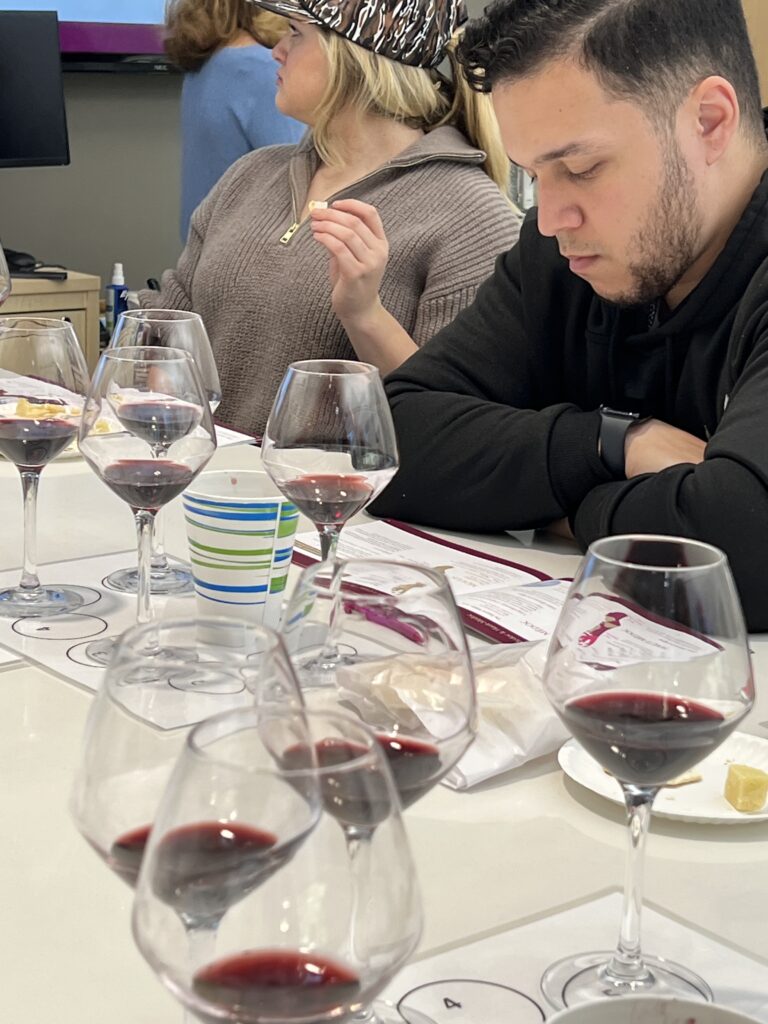
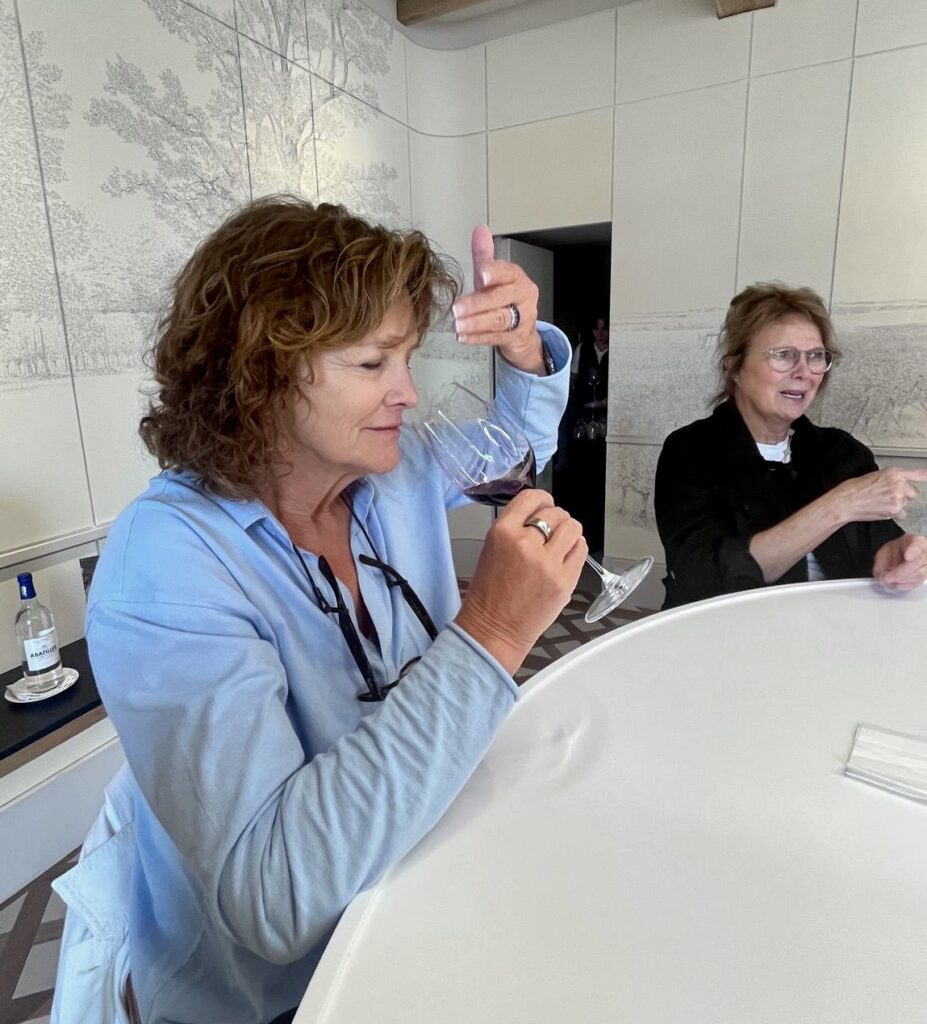

When tasting a lot of wine at once, it's customary to start with lighter wines and progress to fuller-bodied ones. Begin with dry white wines, followed by rosés, light reds, and then move on to more robust red wines. If sweet wines are offered, save them for the end. This progression allows your palate to adjust and fully appreciate the nuances of each wine. However when visiting the chateau in Bordeaux, you will normally have 2 - 3 wines at a time. And the pours are less than you would expect. Typically 2-3 ozs.
There is a simple three step process to wine tasting that may help you be a better wine expert.
Begin by examining the wine's visual character. Hold your glass against a white background and note the color's intensity and hue. A young red wine might display vibrant purple tones, while mature wines often reveal brick or garnet shades. The wine's opacity offers clues too—if you can't read the hands of your wristwatch through the glass, you're likely holding a full-bodied, concentrated wine.
First smell the wine before you swirl it. The aromas will be the most volatile. Next, awaken the wine's aromatic potential with a gentle swirl, releasing the complex bouquet trapped within. Take a moment to inhale deeply and identify the layers of scent. It will be very different from the first "nose". Professional tasters categorize aromas into families: fruit (citrus, stone fruit, or berries), floral (rose, violet, jasmine), spice (pepper, cinnamon, clove), wood (oak, cedar), or earthy notes (leather, tobacco, mineral). Challenge yourself to be specific—is that citrus aroma more like fresh lemon zest or candied orange peel?
Finally, taste thoughtfully. Let the wine coat your palate and pay attention to its weight and texture—is it light and delicate or rich and velvety? Notice how the flavors evolve from the initial taste through to the finish, that lingering impression that remains after you swallow. Each element tells part of the wine's unique story.
Spitting is a common practice in wine tasting, especially when visiting multiple vineyards in one day. It allows you to taste a variety of wines without becoming too light headed. Most all tasting rooms provide spittoons for this purpose, and it's perfectly acceptable to use them. If you prefer not to spit, consider taking small sips and pacing yourself throughout the day. Additionally, it's polite to express your appreciation for the wines you enjoy and provide feedback to the winemakers. Whether you are a seasoned wine connoisseur or a novice taster, following these etiquette guidelines will help you make the most of your Bordeaux wine experience. But just a pointer if you'd like to return, never say its awful!
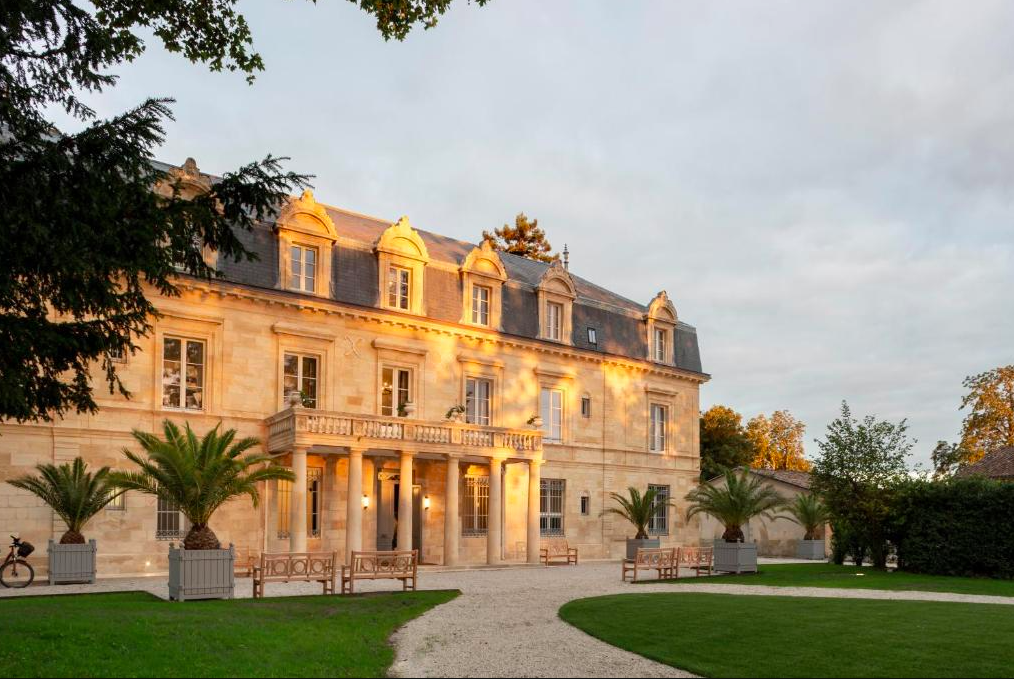
Your choice of accommodation can transform your Bordeaux wine journey from memorable to extraordinary. At Decanter Tours, we've cultivated exclusive partnerships with some of the region's most prestigious château properties, offering our guests unparalleled access to intimate vineyard stays that few travelers ever experience.
Through our privileged relationships, we can arrange stays at exceptional properties like Troplong Mondot, where you'll wake up surrounded by world-renowned vineyards, or the American-owned Maison du Breuil and Château Haut-Bailly, each offering their own distinctive charm and wine heritage. These aren't simply hotel stays—they're immersive experiences where you become part of the château's daily rhythm. We handle every detail, from coordinating private wine tastings with the estate's winemaker to arranging personal chefs who create exquisite meals paired perfectly with the property's wines. These exclusive accommodations provide intimate access to private cellars, behind-the-scenes vineyard tours, and dining experiences that extend far beyond what's available to the general public.
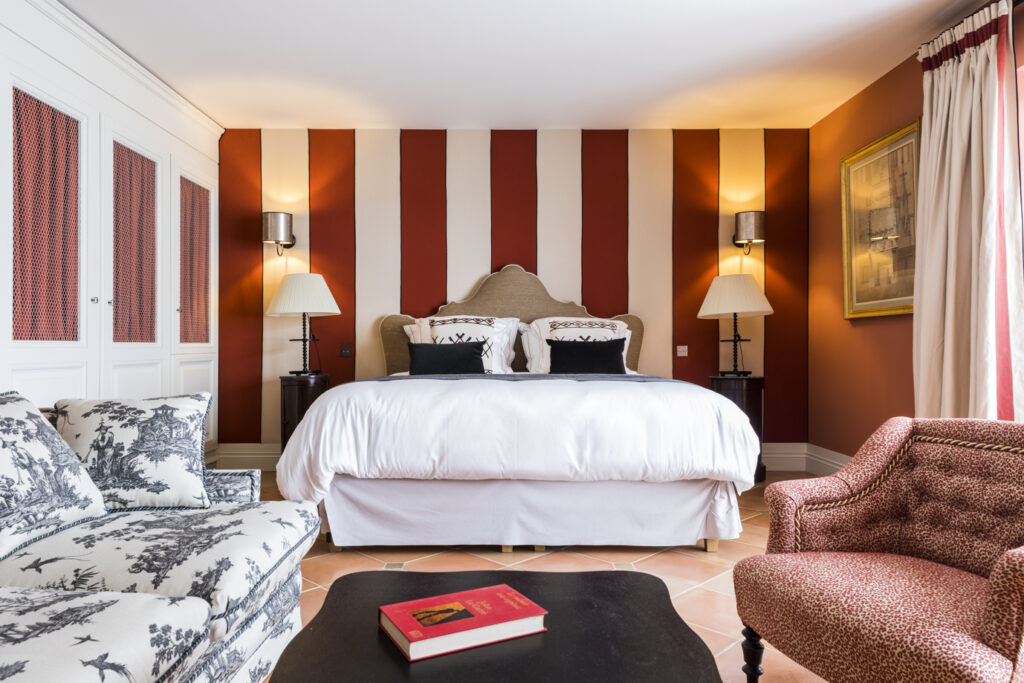
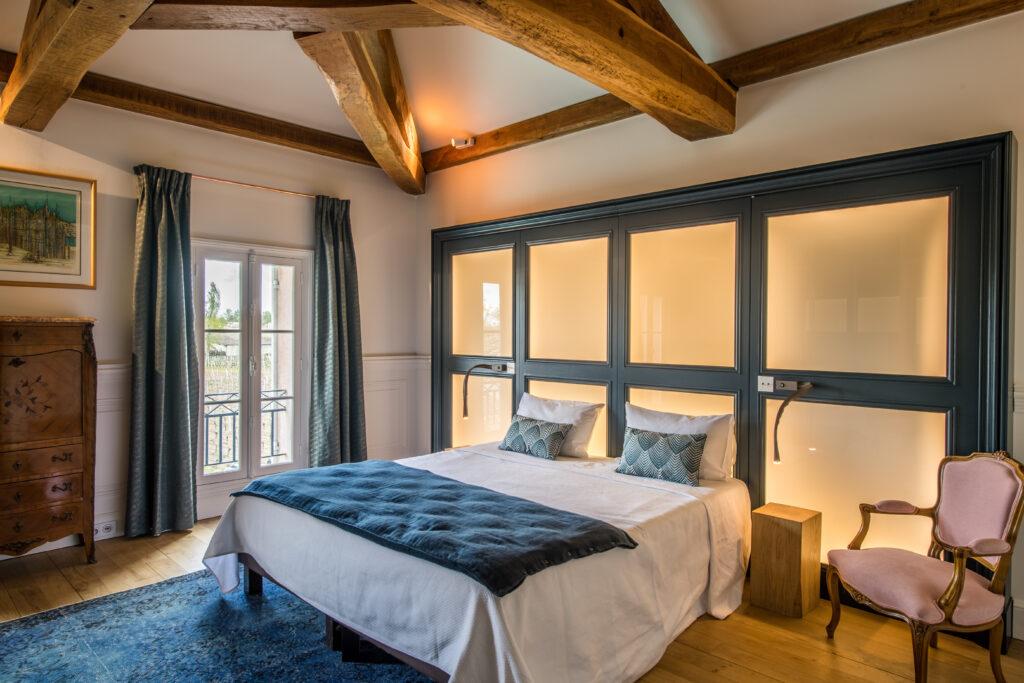
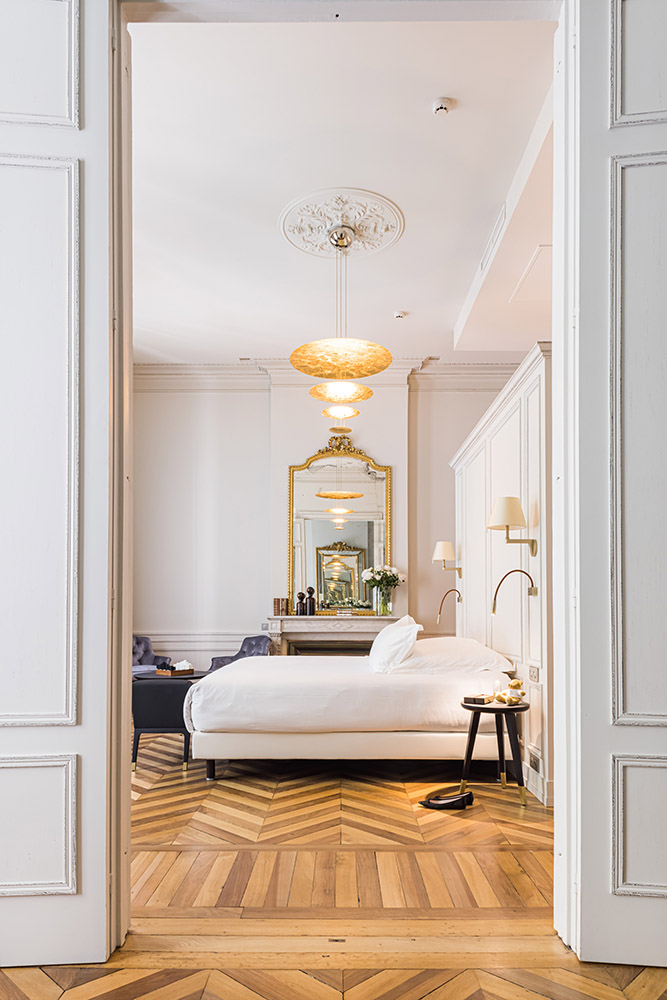
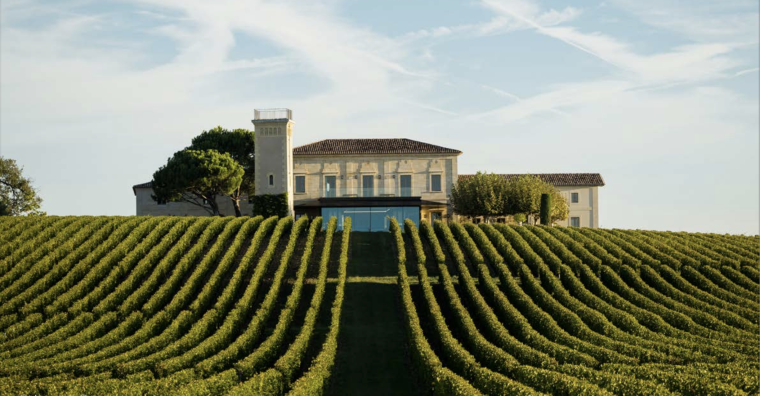
For those who prefer the sophistication of Bordeaux's urban center, our preferred partners include the Grand Hotel Bordeaux and Villa Tourny—properties that perfectly complement our commitment to exceptional service and insider access. These elegant establishments serve as ideal bases for exploring both the city's cultural treasures and the surrounding wine regions.
Contact Decanter Tours directly to learn more about these exclusive accommodation options and other hidden gems throughout Bordeaux's wine country. Our insider relationships unlock experiences that simply aren't available through traditional booking channels.
A wine tour in Bordeaux is a journey through one of the most celebrated wine regions in the world, offering a unique blend of history, culture, and exceptional wines. From the prestigious châteaux of the Left Bank to the charming vineyards of the Right Bank, Bordeaux's diverse terroir and rich winemaking traditions provide endless opportunities for discovery. Whether you are exploring the grand estates, participating in wine festivals, or enjoying intimate tastings, each experience adds to the tapestry of your Bordeaux adventure.
To make the most of your Bordeaux wine tour, take the time to plan your itinerary carefully, book your vineyard visits in advance, and consider the timing of your trip to coincide with key events and festivals. Embrace the local culture, follow wine tasting etiquette, and approach each tasting with an open mind and a sense of curiosity. By doing so, you will not only deepen your appreciation for Bordeaux's wines but also create lasting memories of an extraordinary journey through this enchanting region.
Whether you are a seasoned wine connoisseur or a curious beginner, Bordeaux offers something for everyone. Its stunning landscapes, historic vineyards, and world-class wines provide a captivating backdrop for an unforgettable experience. So raise your glass and toast to the magic of Bordeaux, where every sip is a step into a legacy of tradition and art, and every moment is a celebration of wine and culture. Cheers to your ultimate Bordeaux wine tour! Contact Decanter Tours for a detailed quote.


The best restaurants in St Emilion offer an extraordinary culinary experience that perfectly complements the world-renowned wines of this enchanting UNESCO World Heritage Site. Nestled amidst rolling vineyards in southwest France, St Emilion is celebrated not only for its exceptional Grand Cru wines but also for its diverse and sophisticated dining scene. From rustic bistros serving traditional French fare to elegant Michelin-starred establishments, this medieval gem promises gastronomic delights for every palate. In this guide, we'll explore the best restaurants in St Emilion that showcase the region's rich culinary heritage and innovative approach to food, focusing exclusively on the most outstanding dining establishments that deserve a spot on your itinerary.

The culinary landscape of St Emilion is deeply rooted in the terroir that produces some of the world's most coveted wines. Local chefs embrace the farm-to-table philosophy, sourcing seasonal ingredients from nearby farms and markets to create dishes that harmonize perfectly with the region's celebrated Merlot and Cabernet Franc blends.
What truly sets the best restaurants in St Emilion apart is their masterful integration of wine culture into the dining experience. Many establishments are housed in centuries-old stone buildings or within working châteaux, where sommeliers expertly guide diners through wine pairings that elevate each course. The gastronomic scene beautifully balances respect for traditional Bordelaise cuisine with contemporary techniques and global influences, creating memorable meals that capture the essence of this historic wine region.
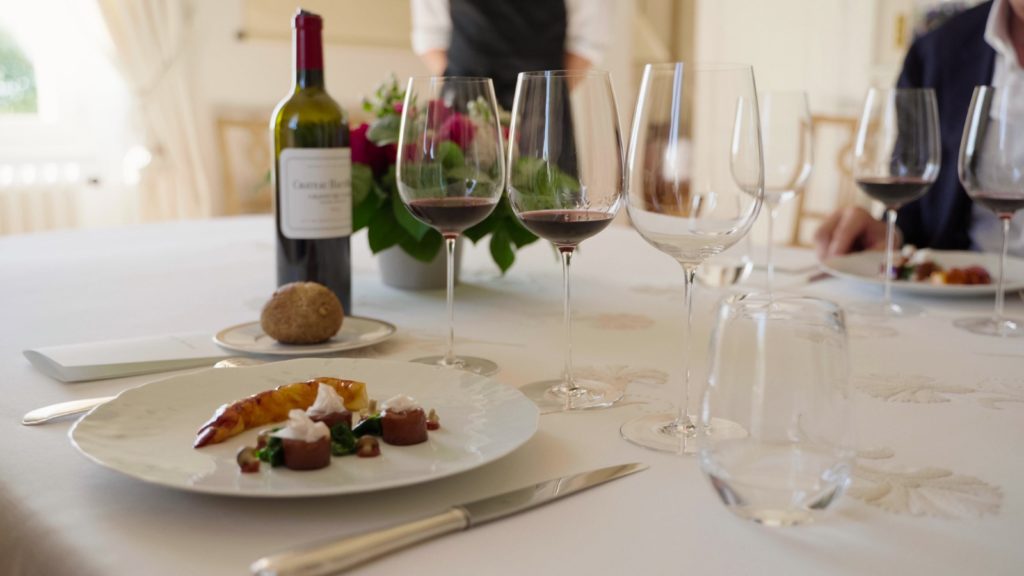
From hidden gems tucked away in cobblestone alleys to grand dining rooms overlooking the vineyards, here are our top recommendations for the best restaurants in St Emilion that promise unforgettable culinary experiences:
A beloved institution among locals and visitors alike, L'Envers du Décor combines casual charm with sophisticated cuisine. Housed in a 19th-century building near the main square, this bistro-style restaurant offers a relaxed setting with exposed stone walls and wooden beams.

Owned by the prestigious Perse family—who also own the Relais & Châteaux Hôtel de Pavie and the legendary Château Pavie—L'Envers du Décor benefits from the family's commitment to excellence in both wine and gastronomy. The menu features creative interpretations of French classics, with standout dishes including foie gras terrine with fig compote and perfectly executed duck confit. Their wine list is particularly impressive, featuring an extensive selection of St Emilion wines alongside other Bordeaux treasures. Many regulars consider this among the best restaurants in St Emilion for those seeking excellent food without pretension.
Cheese enthusiasts will find their paradise at Le Bis By Baud et Millet, a charming restaurant specializing in artisanal cheese pairings. The rustic yet elegant interior sets the stage for a unique dining experience centered around France's dairy heritage.

The restaurant's cave houses over 100 varieties of carefully aged cheeses, which are thoughtfully paired with local wines. Their signature cheese boards feature selections from small producers throughout France, while hot dishes like truffle-infused Camembert or Comté fondue showcase cheese in its most indulgent forms. The knowledgeable staff excel at recommending wine pairings to complement your cheese selections, making this a standout among the best restaurants in St Emilion for immersive food experiences.
For those seeking a break from traditional French cuisine, Café Saigon offers a refreshing alternative in the heart of wine country. This stylish restaurant blends Vietnamese culinary traditions with French techniques, resulting in a unique fusion experience that has earned it a loyal following—particularly among local winemakers and château owners who frequently dine here.
The restaurant's intimate layout features a tiny open kitchen downstairs where you can watch the chefs at work, while a short climb upstairs reveals a cozy dining room with just a dozen tables, creating an atmosphere of exclusivity and charm. Fresh spring rolls, aromatic pho, and lemongrass-infused seafood dishes provide a welcome contrast to the region's typically rich fare. The restaurant even incorporates local Bordeaux wines into some of its sauces and marinades, creating unexpected flavor combinations. The elegant yet relaxed atmosphere makes Café Saigon one of the best restaurants in St Emilion for diners seeking culinary diversity.
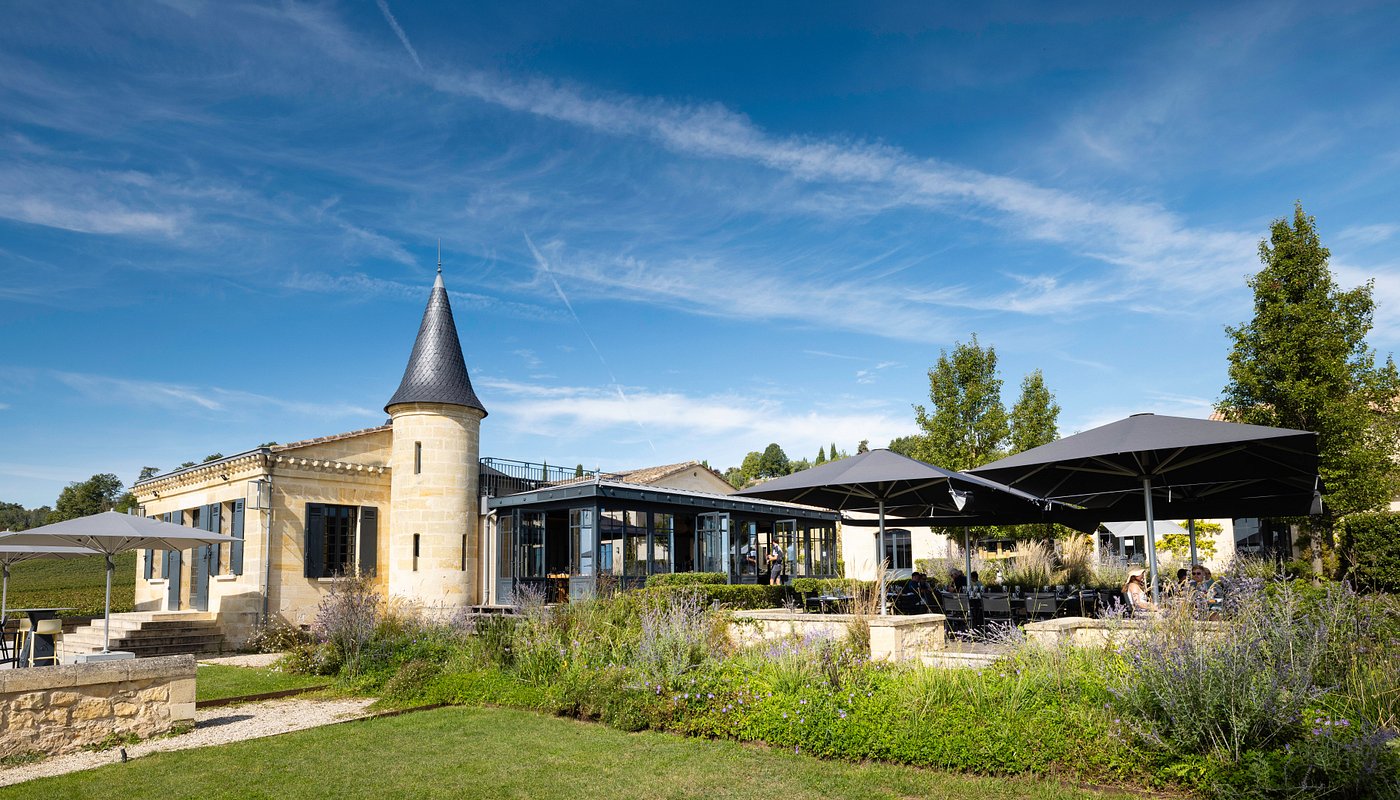
Set within a working wine estate just outside the village center, Atelier de Candale embodies the seamless marriage of viticulture and gastronomy. The restaurant's modern dining room features panoramic windows overlooking the estate's vineyards, creating a stunning backdrop for an exceptional meal.
The seasonal menu celebrates the bounty of southwestern France with sophisticated dishes that complement the château's wines. Signature offerings include seared scallops with truffle risotto and perfectly aged beef from local farms. Wine lovers consider this one of the best restaurants in St Emilion for understanding the relationship between food and wine, as each course can be paired with vintages produced just steps from your table.
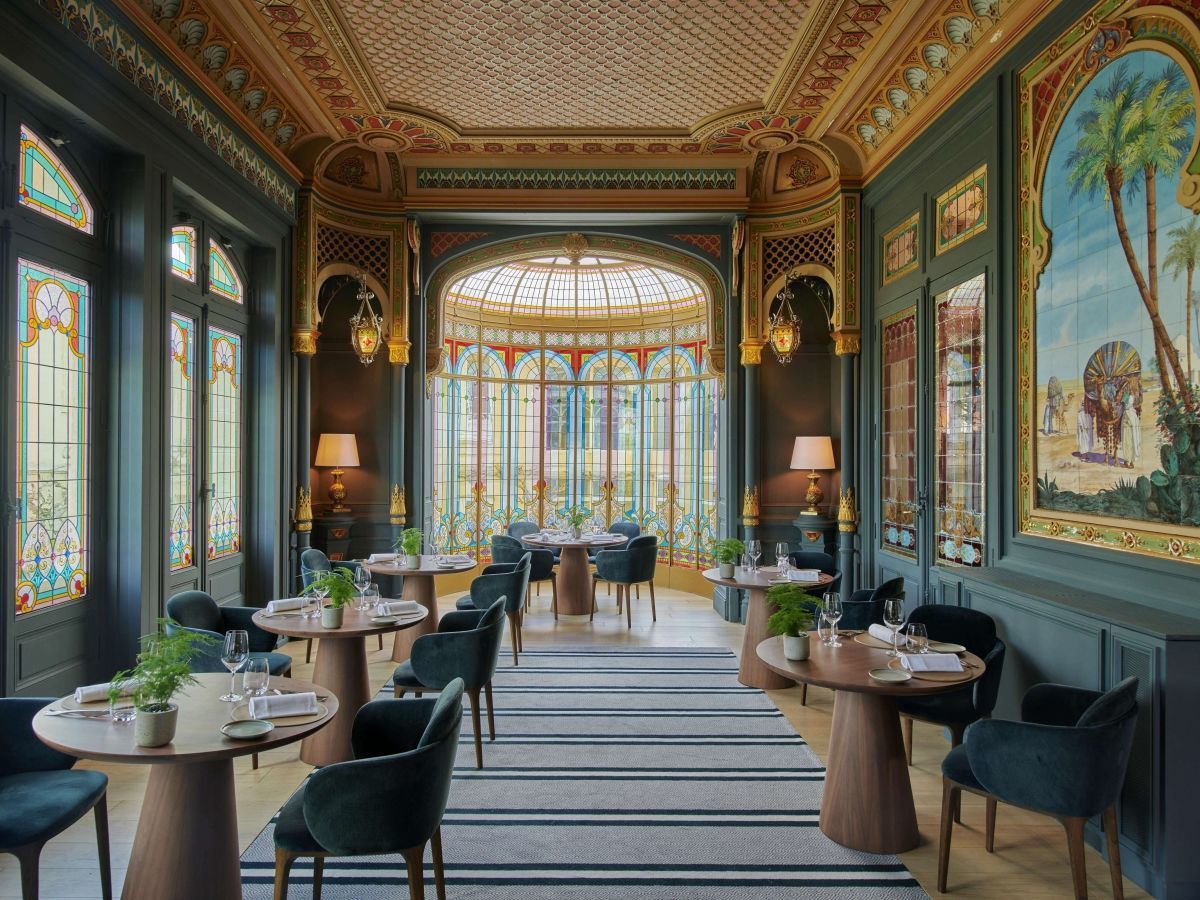
Located in a magnificent 19th-century château hotel, the restaurant at Grand Barrail offers a truly luxurious dining experience. The elegant dining room, with its crystal chandeliers and ornate moldings, sets the stage for refined cuisine that has earned critical acclaim.
The chef's tasting menu showcases technical precision and artistic presentation, featuring delicacies like butter-poached lobster and truffle-infused foie gras. The sommelier expertly guides diners through both prestigious labels and hidden gems from the region. With impeccable service and breathtaking views of the surrounding vineyards, Château Grand Barrail ranks among the best restaurants in St Emilion for special celebrations and romantic occasions.
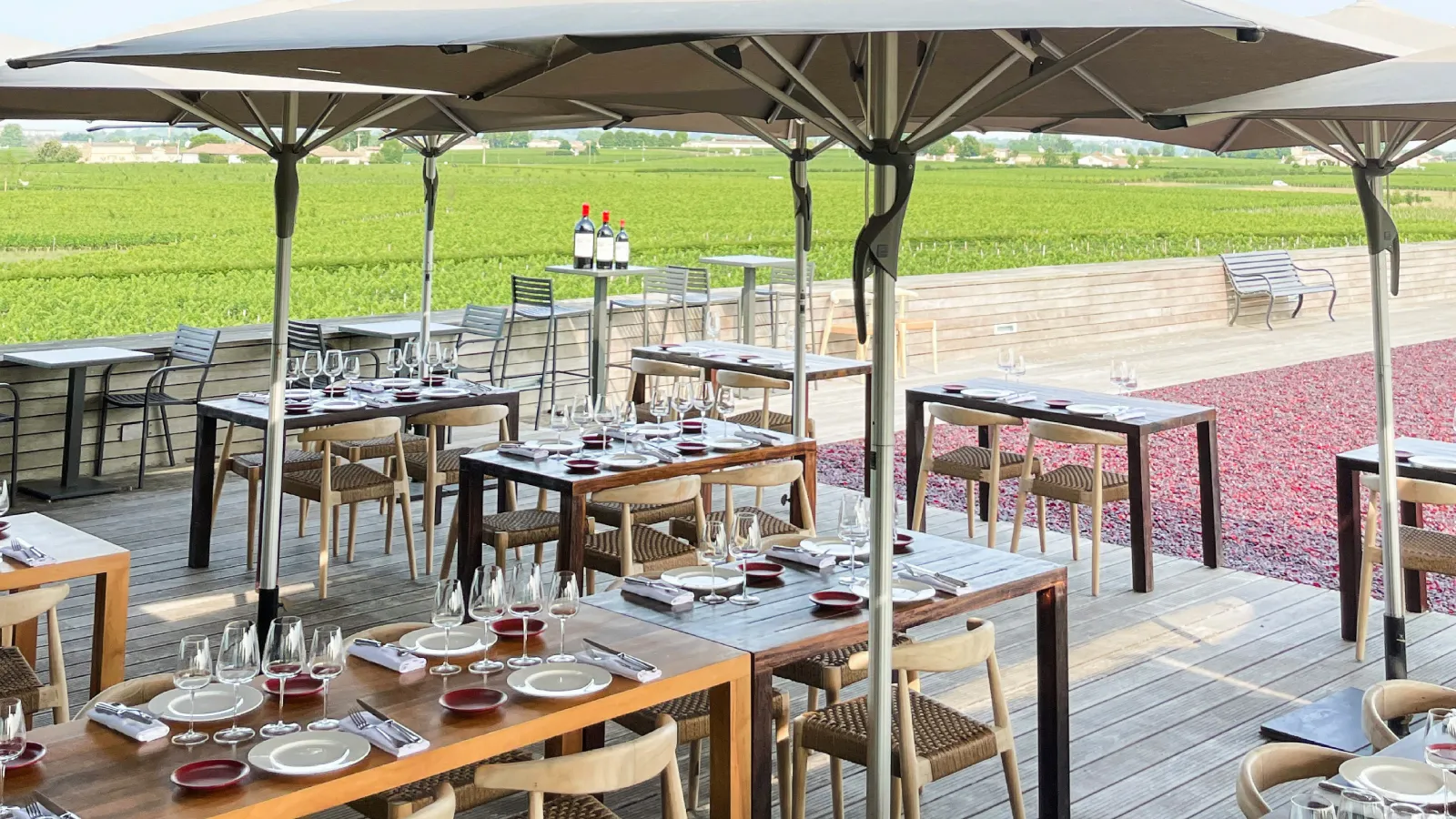
Perhaps the most visually striking of all dining venues in the region, La Terrasse Rouge is perched atop Château La Dominique with its distinctive red rooftop terrace designed by architect Jean Nouvel. This contemporary space offers 360-degree views of the vineyards stretching toward the horizon, including the neighboring legendary Château Cheval Blanc owned by luxury giant LVMH.
The cuisine matches the modern setting with innovative presentations and bold flavor combinations. The menu changes frequently but often features sea bass ceviche, perfectly seared duck breast, and creative vegetable-forward dishes. Their wine list naturally highlights the château's own production alongside other notable St Emilion offerings. For those seeking cutting-edge cuisine in a dramatic setting, this ranks among the best restaurants in St Emilion for memorable dining experiences.

The crown jewel of St Emilion's dining scene, La Table de Pavie represents the pinnacle of gastronomic excellence with its two Michelin stars. Located within the luxurious Hostellerie de Plaisance hotel, this restaurant offers a transcendent dining experience worthy of a special journey.
The Perse family entrusted acclaimed chef Yannick Alléno, in place since 2020, to become the interpreter of the terroir that surrounds the restaurant. With the desire to create a dialogue between the vineyard of Château Pavie and La Table de Pavie, while also supporting local artisans and producers, Alléno has crafted a distinctive great Bordeaux cuisine. The products of the South-West serve as an inexhaustible source of inspiration for the Chef and his teams, particularly for their innovative pairings with regional wines.
Alléno emphasizes that the success of La Table de Pavie is above all an excellent team effort. He relies on a strong brigade led by Executive Chef Sébastien Faramond and Pastry Chef Sébastien Nabaile to create exquisite dishes that balance technical mastery with emotional connection, transforming local ingredients into works of culinary art. The tasting menu might include langoustine with caviar, pigeon with black truffle, and intricate desserts featuring seasonal fruits. The wine pairing option is highly recommended, as the sommelier's selections showcase both legendary producers and emerging talents from the region. For gastronomes seeking the very best restaurants in St Emilion, La Table de Pavie delivers an unforgettable experience that justifies its prestigious recognition.
Situated in a picturesque spot between St Emilion and neighboring Pomerol, La Table de Catusseau charms visitors with its intimate atmosphere and commitment to authentic southwestern French cuisine. The converted farmhouse creates a cozy setting with just a handful of tables, ensuring personalized attention.
This understated gem has become another favored haunt for local winemakers, who appreciate its unpretentious atmosphere and consistently excellent food. The menu focuses on regional specialties executed with precision, including confit duck leg, entrecôte bordelaise, and seasonal mushroom dishes when available. Family-owned and operated, this hidden gem represents the warm hospitality that makes dining in wine country so special. For those exploring the broader region, this counts among the best restaurants in St Emilion and its environs for experiencing genuine local cuisine.
The best restaurants in St Emilion often book up weeks or even months in advance, particularly during the high season from May through October. Here are some essential tips for securing your desired dining experiences:
Decanter Tours specializes in creating bespoke culinary experiences that go beyond traditional restaurant dining in St Emilion. Their expert-led food and wine experiences include:
These curated experiences complement visits to the best restaurants in St Emilion by providing insider access to the region's food culture and traditions. Decanter Tours can also arrange priority reservations at sought-after dining establishments as part of comprehensive wine country itineraries.
While the best restaurants in St Emilion operate year-round, each season offers unique culinary experiences. Spring (April-June) brings fresh vegetables and asparagus to menus, while summer (July-August) offers outdoor dining amid the vines. Fall (September-October) coincides with harvest and features truffle and game dishes, while winter (November-March) provides a quieter experience with heartier cuisine. September through October generally offers the ideal combination of pleasant weather, seasonal ingredients, and vineyard activity.
Traditionally meat-centric, the culinary scene has evolved to accommodate diverse dietary preferences. Many of the best restaurants in St Emilion now offer vegetarian options, particularly those with more contemporary menus like La Terrasse Rouge. Vegan options remain more limited but are increasingly available with advance notice. Restaurants connected to luxury hotels and Michelin-starred establishments are typically most accommodating to specific dietary requirements when notified during reservation.
Absolutely—wine pairing is fundamental to dining culture in this renowned wine region. All of the best restaurants in St Emilion offer extensive wine lists featuring local producers, from village wines to prestigious Grand Cru Classé. Many establishments offer guided pairing options where sommeliers select appropriate wines for each course. Some restaurants also allow guests to bring their own bottle for a corkage fee, which is ideal if you've purchased a special wine during château visits.
The level of family-friendliness varies among the best restaurants in St Emilion. More casual establishments like L'Envers du Décor welcome children and may offer simplified menu options. Fine dining venues such as La Table de Pavie can accommodate well-behaved older children but may not be suitable for very young ones. Many vineyard restaurants with outdoor spaces provide a more relaxed environment where families can dine comfortably. It's always advisable to inquire about family-friendliness when making reservations.
While Bordeaux wine may be world-famous for its prestigious red wines, the region's white wines offer an equally compelling story of elegance, diversity, and exceptional quality. Often overshadowed by their red counterparts, white Bordeaux wines represent some of the most versatile and complex white wines in the world, offering distinctive character and exceptional quality despite receiving less attention than the region's famous reds.
From crisp, zesty dry styles to lusciously sweet nectars, white Bordeaux delivers a remarkable range of expressions that deserve the attention of wine enthusiasts everywhere. Join us as we explore this lesser-known treasure of the world's most famous wine region.
White Bordeaux wine refers to any white wine produced within the Bordeaux wine region of southwestern France. Despite accounting for only about 10% of Bordeaux's total wine production, these whites encompass an impressive diversity of styles.

White Bordeaux exists in two primary expressions:
The production of white Bordeaux involves several key steps that contribute to its distinctive character:
White Bordeaux wines derive their character from a small selection of complementary grape varieties, each contributing distinct qualities to the final blend:
Sauvignon Blanc: Provides aromatic intensity, crisp acidity, and vibrant citrus and herbal notes. It forms the backbone of many dry white Bordeaux blends, particularly in Entre-Deux-Mers and Graves.
Sémillon: Offers body, richness, texture, and aging potential with subtle notes of beeswax, lanolin, and stone fruits. It's the dominant grape in sweet Sauternes and Barsac, and plays a crucial supporting role in many dry whites.

Muscadelle: Though used in smaller proportions, it contributes delicate floral aromas and hints of muscat-like character to both dry and sweet blends. Less common varieties also permitted include Sauvignon Gris, Colombard, and Ugni Blanc, though these appear primarily in more affordable, everyday wines.
The grape composition varies significantly between dry and sweet styles:
Dry White Bordeaux typically features:
Premium dry whites from Pessac-Léognan often contain higher proportions of Sémillon (sometimes 50% or more) for greater complexity and aging potential.
Sweet White Bordeaux reverses this formula with:
This higher proportion of Sémillon in sweet wines provides the necessary structure and concentration to balance the intense sweetness, while still allowing for remarkable longevity.
White Bordeaux presents a fascinating spectrum of flavors, from vibrant and refreshing to rich and honeyed. Let's explore the main style categories:
Entry-level dry white Bordeaux, often from regions like Entre-Deux-Mers or labeled simply as Bordeaux Blanc, offers an accessible and refreshing experience:
These wines are best enjoyed young, typically within 1-3 years of release, when their fruit expression is at its most vibrant. They make excellent aperitifs or pairings with seafood and light salads.
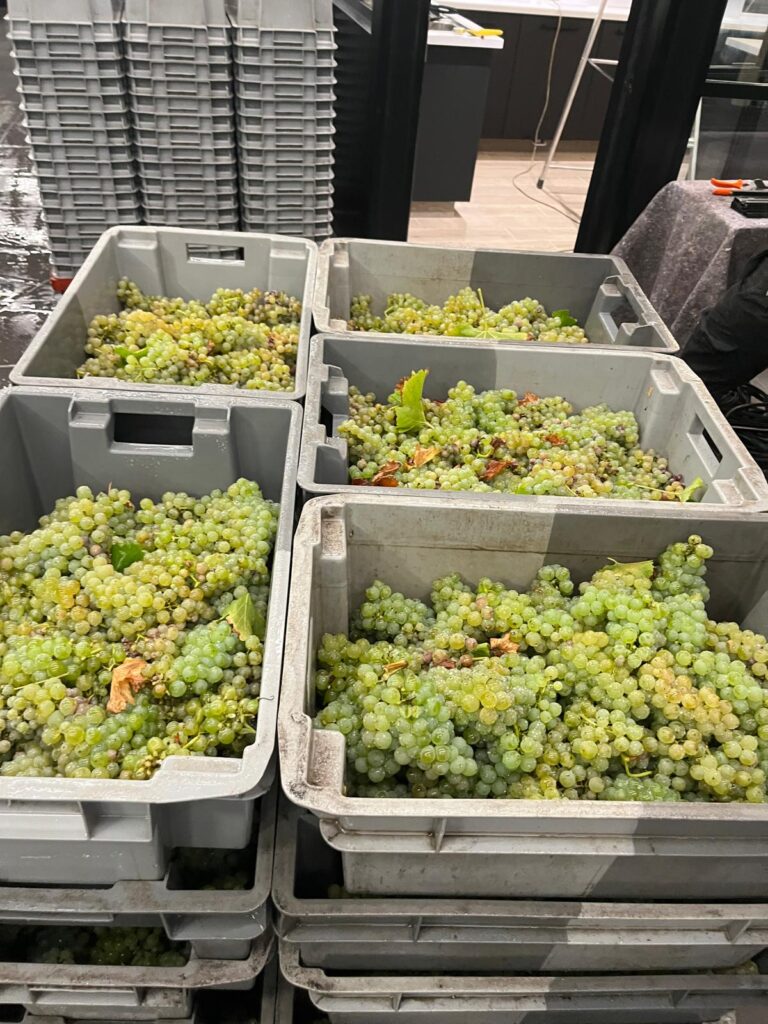
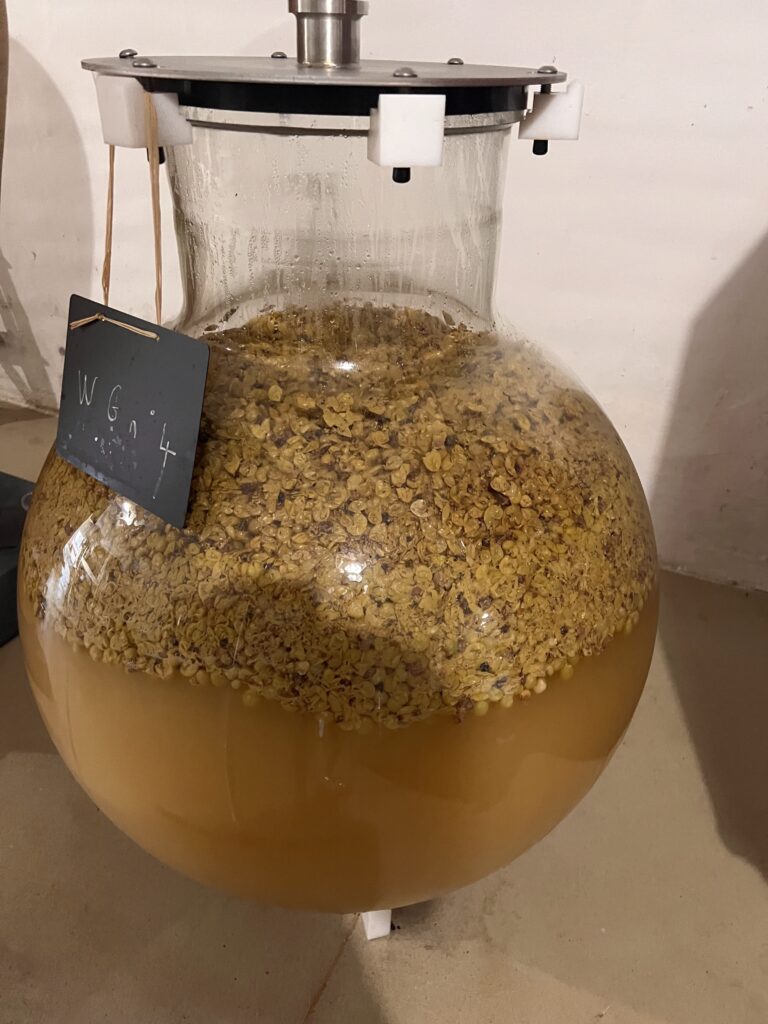

Premium dry white Bordeaux, particularly from regions like Pessac-Léognan and classified growths of Graves, reveal considerably more complexity:
These sophisticated whites can age beautifully for 10-20 years or more, developing remarkable complexity while maintaining freshness. They shine alongside richer seafood dishes, poultry, and soft cheeses.
Sweet white Bordeaux represents one of wine's most profound expressions:
These remarkable wines can age for decades—even centuries in exceptional vintages. Despite their sweetness, they possess a remarkable freshness that prevents them from becoming cloying. They can be enjoyed with foie gras, blue cheeses, fruit-based desserts, or simply on their own as a meditative experience.
Bordeaux's white wines come from several distinct appellations, each lending its unique character to the wines produced there:
Carved out of the northern Graves region in 1987, Pessac-Léognan produces Bordeaux's most prestigious dry white wines, including the legendary Château Haut-Brion Blanc and Château Laville Haut-Brion (now La Mission Haut-Brion Blanc).
The appellation's gravelly soils impart a distinctive minerality and smoky character to the wines, while the relatively high proportion of Sémillon in the blends contributes richness and aging potential. The finest examples combine power and elegance in a way that few white wines in the world can match.
Key producers include Château Smith Haut Lafitte, Domaine de Chevalier, Château Carbonnieux, and Château Pape Clément, alongside the Haut-Brion estates.
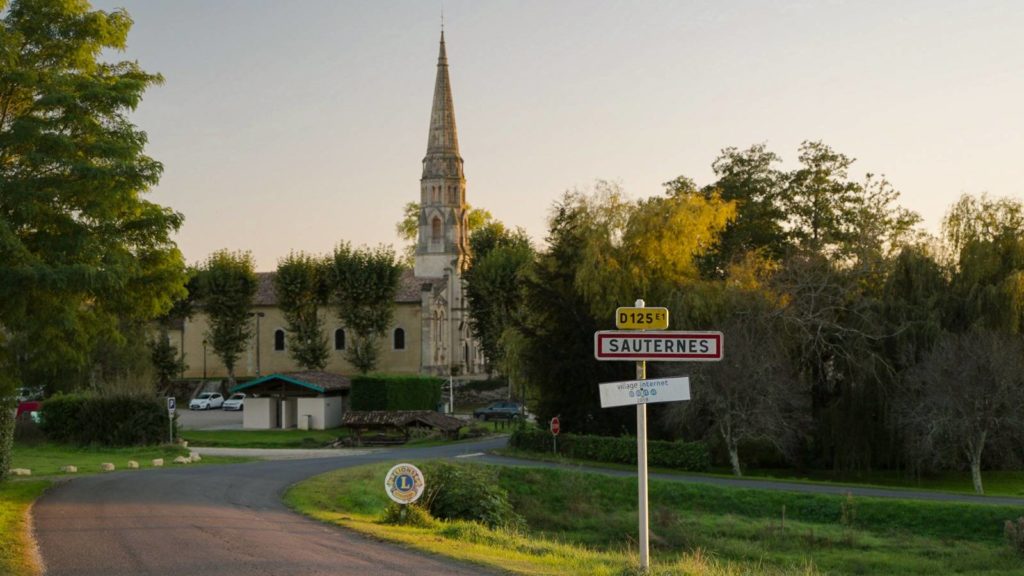
These adjacent appellations south of Graves produce the world's most celebrated botrytized sweet wines. Their unique microclimate—created by the convergence of the cool Ciron tributary with the warmer Garonne River—generates the morning mists that encourage noble rot development.
Sauternes tends to produce slightly richer, more opulent wines, while Barsac wines often show a touch more freshness and minerality due to their limestone-rich soils. Both create wines of extraordinary concentration, complexity, and aging potential.
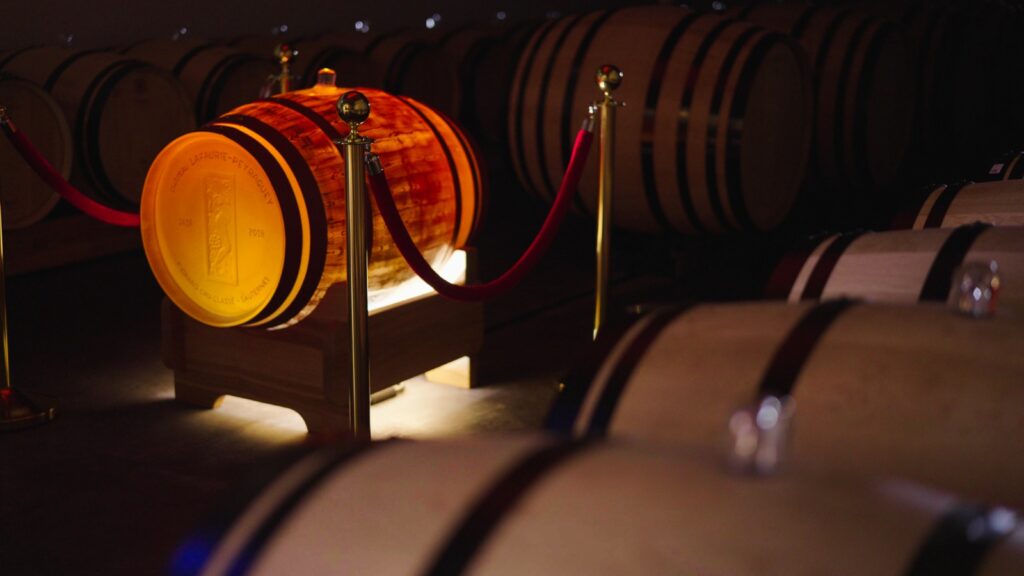
Iconic producers include Château d'Yquem (the region's only Premier Cru Supérieur), Château Climens, Château Suduiraut, Château Coutet, and Château Rieussec.
Other notable white Bordeaux appellations include:
White Bordeaux occupies a unique position in the world of white wine:
Compared to Loire Valley Sauvignon Blanc (Sancerre, Pouilly-Fumé):
Compared to White Burgundy (Chardonnay):
Compared to Alsace or German whites:
Few wine regions can match the sweet white Bordeaux for concentration, complexity, and longevity, though Hungarian Tokaji Aszú and German Trockenbeerenauslese offer fascinating parallels.
At Decanter Tours, we specialize in providing extraordinary access to Bordeaux's white wine treasures through our curated luxury experiences.
Our white Bordeaux focused tours include:
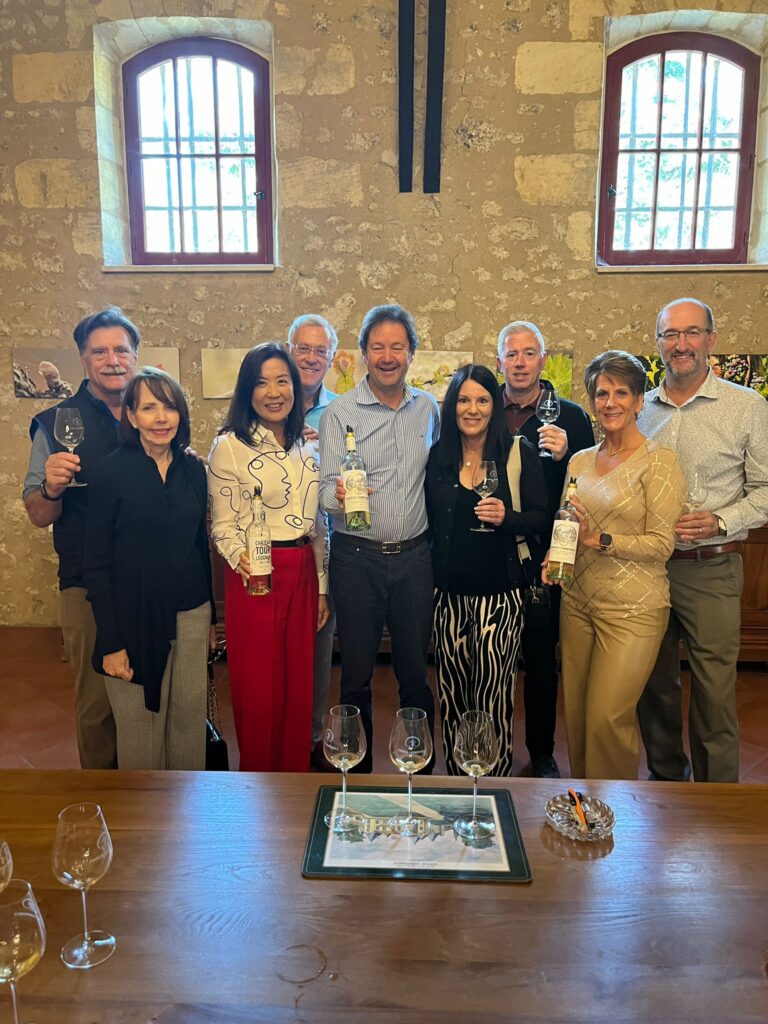
Our expert guides bring deep knowledge and personal connections throughout the region, opening doors to exclusive experiences beyond the reach of ordinary visitors. Whether you're a serious collector or simply curious about these magnificent wines, we tailor each tour to your specific interests and knowledge level.
Dry white Bordeaux contains minimal residual sugar and features crisp acidity with citrus, white fruit, and herbal flavors. It's typically dominated by Sauvignon Blanc. Sweet white Bordeaux, most famously from Sauternes and Barsac, contains significant residual sugar from botrytized grapes, predominantly Sémillon. These wines exhibit concentrated honey, apricot, and exotic fruit flavors balanced by refreshing acidity.
Yes, premium white Bordeaux can age beautifully. Top dry whites from Pessac-Léognan can develop wonderfully for 10-20 years or more, while the finest sweet Bordeaux wines from Sauternes and Barsac can evolve positively for decades—even a century or more in exceptional vintages. The Sémillon component, along with thoughtful oak aging, contributes significantly to this age-worthiness.
Absolutely. While Bordeaux is better known for its red wines, the region produces some of the world's most distinctive and age-worthy white wines. Both the dry whites from areas like Pessac-Léognan and the sweet wines from Sauternes represent pinnacles of white wine excellence, with a unique character derived from the region's signature grape blends and terroir.
Yes, Decanter Tours specializes in curated experiences focusing on Bordeaux's exceptional white wines. We arrange private visits to prestigious estates in Pessac-Léognan, Sauternes, and other key white wine appellations. Our exclusive relationships with producers provide access to tastings, vineyard tours, and educational experiences not available to the general public. Contact us to arrange your custom white Bordeaux discovery tour.
Article Summary
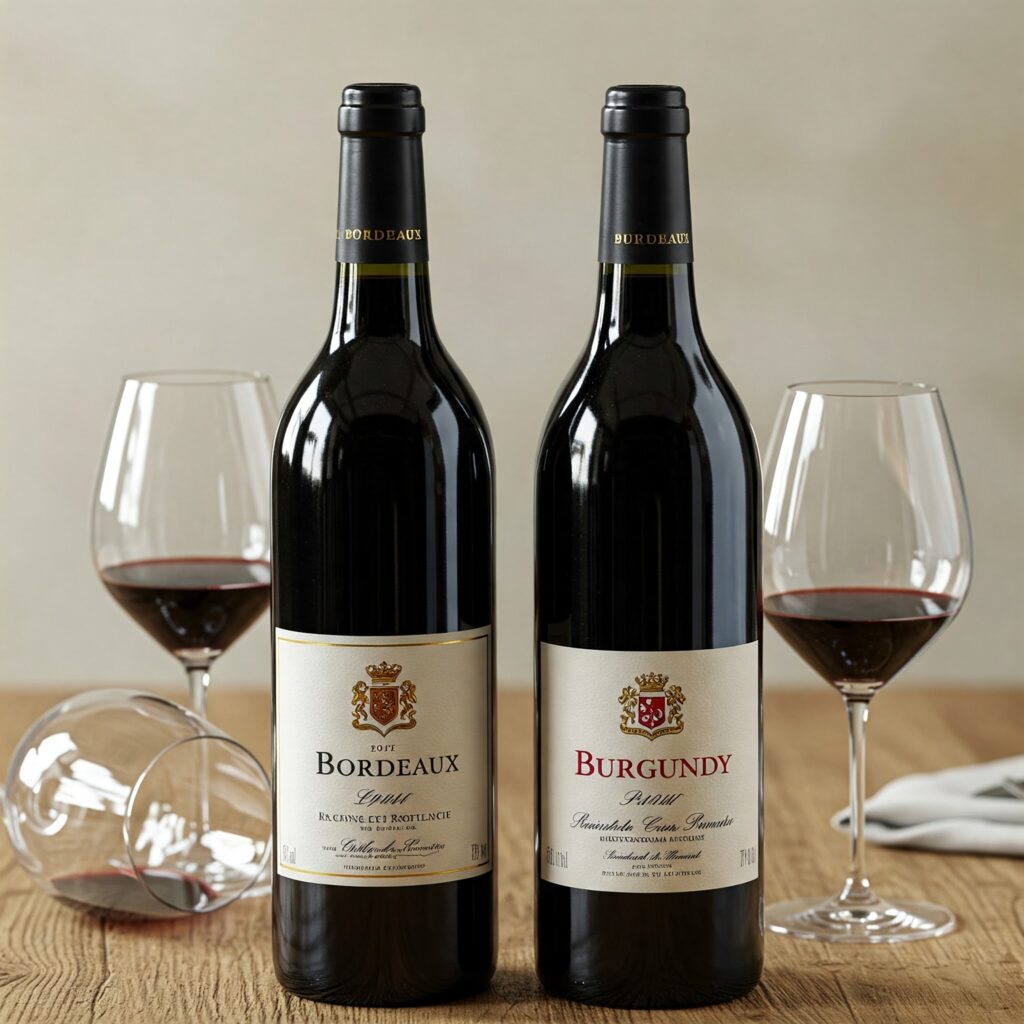
Burgundy vs Bordeaux wine: whats the difference?
When it comes to fine wine, few names evoke as much prestige and passion as Burgundy and Bordeaux. These two legendary French wine regions have shaped the world of viticulture for centuries, each carving out a distinctive identity that continues to captivate oenophiles around the globe. While both regions produce exceptional wines, their approaches to winemaking could not be more different—from the grapes they cultivate to the philosophies that guide their production.
Whether you're a seasoned collector or a curious newcomer to the world of fine wine, understanding the nuances between these iconic regions will enhance your appreciation and enjoyment of their liquid treasures. Join us as we uncork the fascinating distinctions that make Burgundy and Bordeaux unique yet equally compelling destinations for wine lovers.
The rivalry between Burgundy and Bordeaux spans centuries, with each region championing distinct approaches to winemaking. At their core, these differences can be summarized in a few essential contrasts:
Wine Philosophy: Burgundy celebrates terroir above all else, focusing on single vineyards and expressing the pure essence of place through predominantly single-varietal wines. Bordeaux, by contrast, embraces the art of blending multiple grape varieties to create balanced, complex wines that reflect both terroir and human craftsmanship.
Scale of Production: While Bordeaux operates on a grander scale with larger estates producing significant volumes, Burgundy consists of a patchwork of small family domains producing limited quantities of highly sought-after wines.
Wine Structure: Burgundian wines are known for their ethereal elegance, subtlety, and silky textures. Bordeaux wines typically offer more structure, power, and tannic backbone, designed for extended aging.
Classification Systems: Bordeaux follows a château-based classification system established in 1855 that ranks producers, while Burgundy's hierarchical system focuses on classifying specific vineyard plots based on their quality potential.
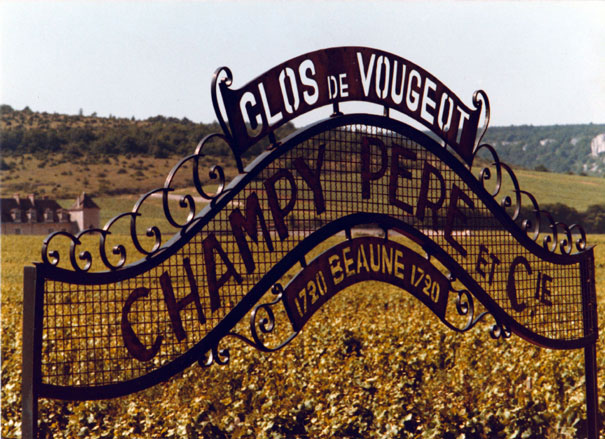
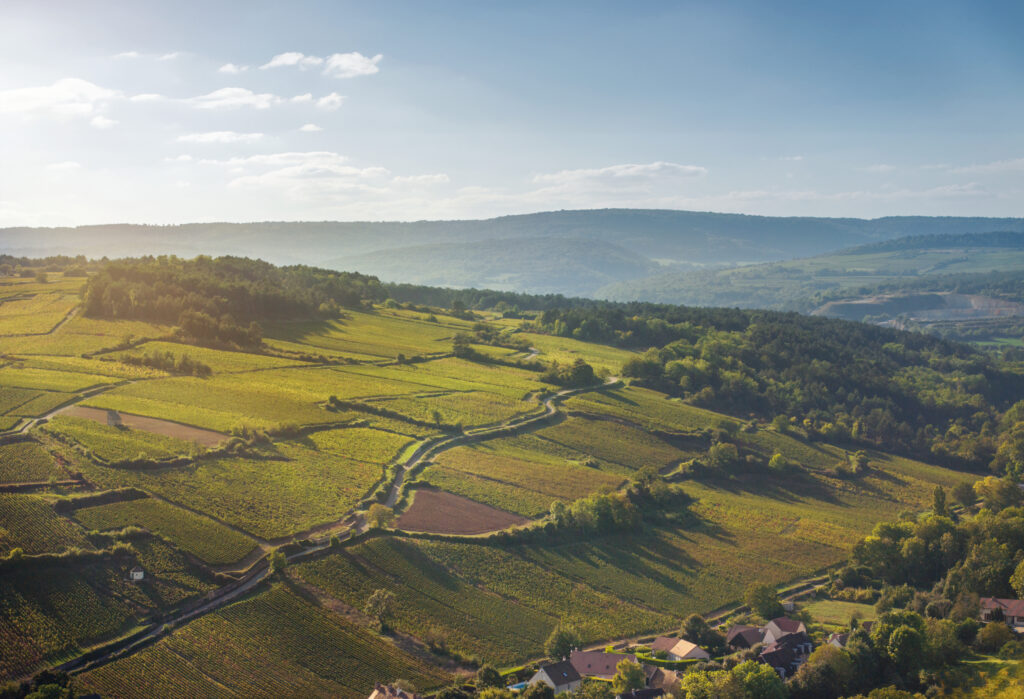
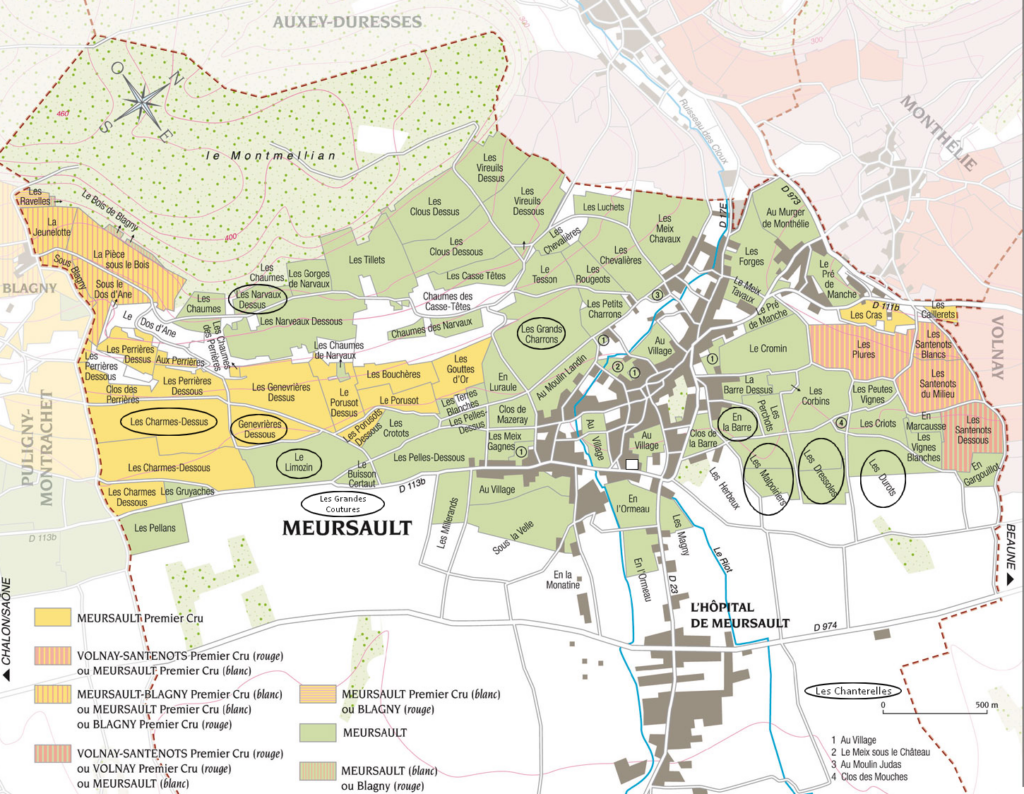
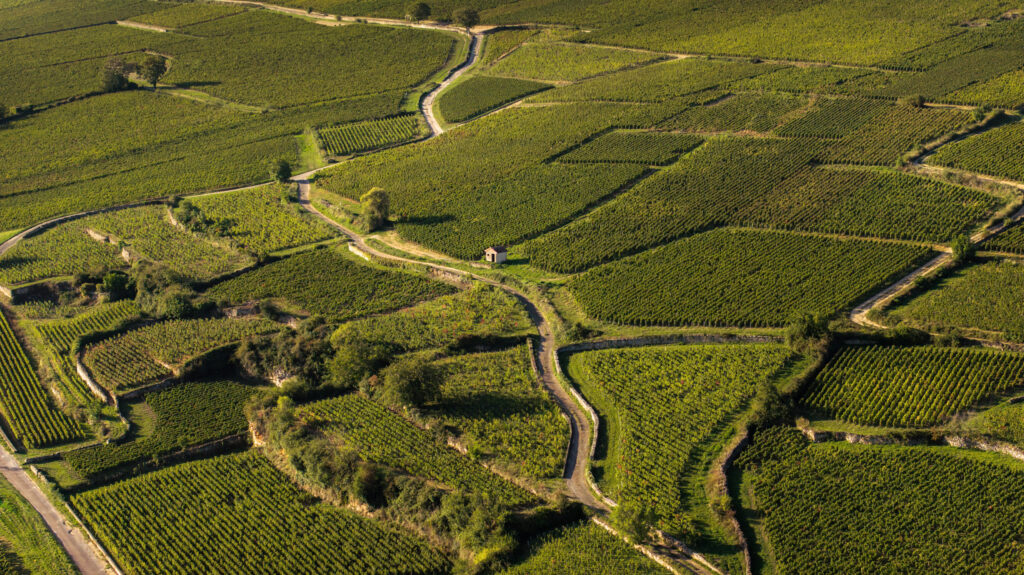
The concept of terroir—that magical combination of soil, climate, topography, and human influence—finds perhaps its purest expression in these two regions, albeit in dramatically different ways.
Burgundy's Terroir: Burgundy's narrow strip of vineyards along the eastern edge of France features a mosaic of microclimates and soil types, primarily limestone and clay in varying proportions. This incredible geological diversity can change dramatically within meters, explaining why adjacent vineyards often produce remarkably different wines. Burgundy's continental climate brings cold winters and warm summers, with spring frost presenting a constant threat to vine development.
The region's winemaking philosophy centers on allowing each tiny vineyard plot to express its distinctive character through minimal intervention. This meticulous focus on site-specificity has culminated in the identification of hundreds of individual climats (named vineyard sites), each with its own personality.
Bordeaux's Terroir: Spread across a much larger area in southwestern France, Bordeaux benefits from a maritime climate moderated by the Atlantic Ocean and the Gironde Estuary, which divides the region into Left Bank and Right Bank. The Left Bank features well-drained gravel soils perfect for Cabernet Sauvignon, while the Right Bank's clay and limestone soils favor Merlot.
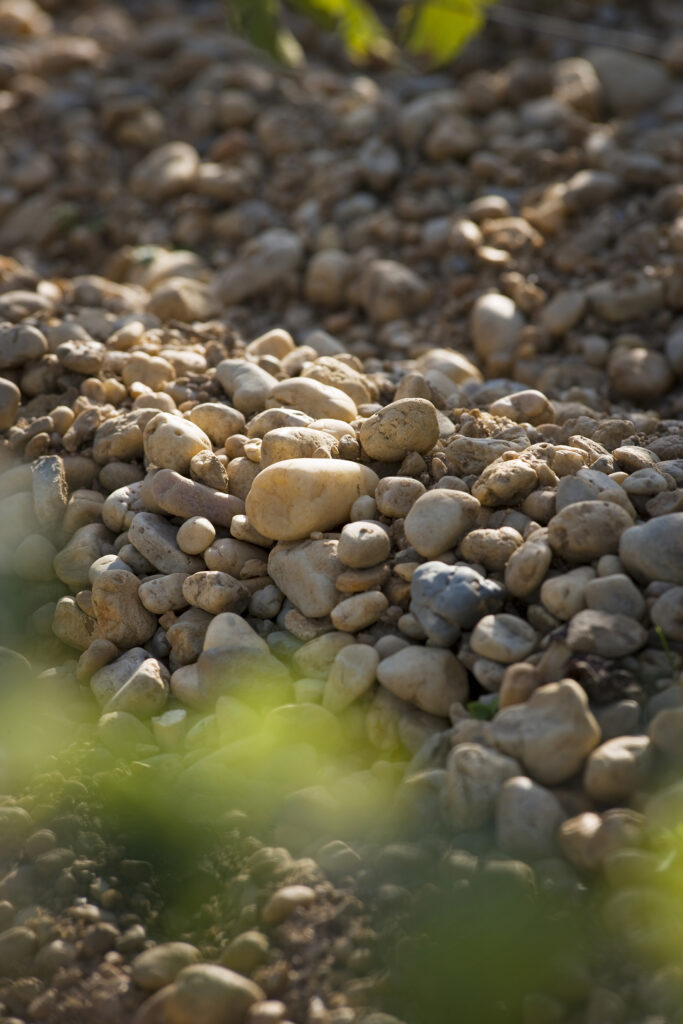

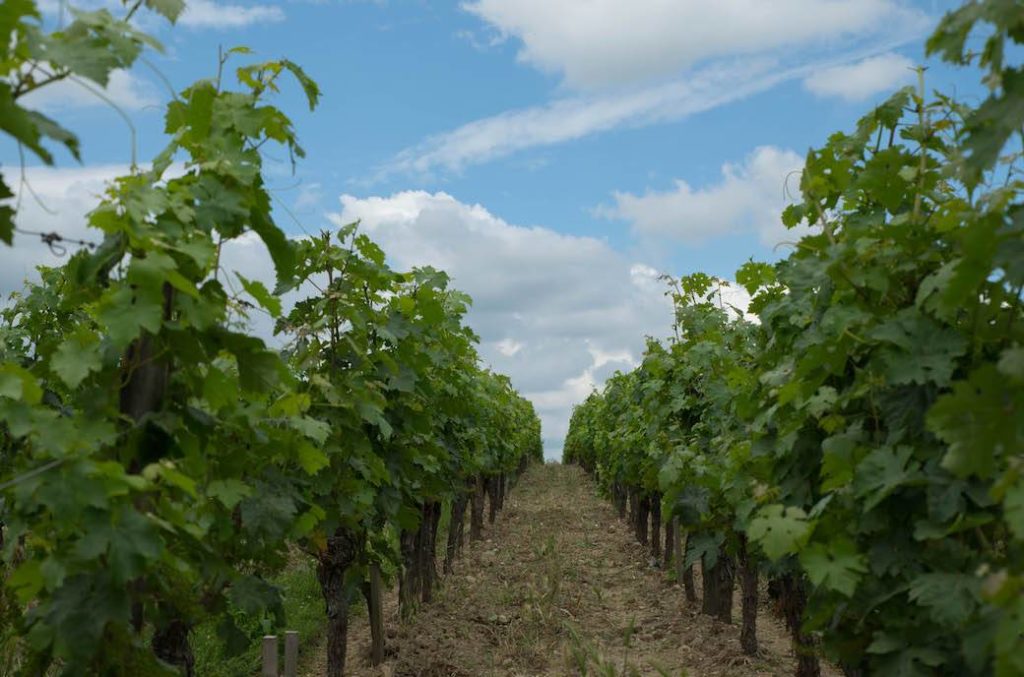

Rather than the extreme fragmentation seen in Burgundy, Bordeaux's terroir expression comes through larger appellations with more consistent characteristics. The region's château system, where estates control substantial vineyard holdings, allows for more consistent production levels and enables winemakers to craft balanced blends by selecting from various parcels.
Perhaps no contrast between these regions is more striking than their approach to grape varieties.
Burgundy's Grapes: Burgundy embraces radical simplicity, focusing almost exclusively on two grape varieties:
- Pinot Noir: The temperamental red grape that produces ethereal, silky wines with red fruit flavors, floral notes, and an ability to express terroir with unparalleled transparency.
- Chardonnay: The versatile white grape capable of producing everything from crisp, mineral-driven Chablis to rich, opulent wines from the Côte de Beaune.
This laser focus on two varieties allows Burgundian winemakers to become true specialists, dedicating generations to understanding how these grapes express each specific vineyard site.
Bordeaux's Grapes: Bordeaux thrives on the art of blending, primarily using five key varieties for red wines:
- Cabernet Sauvignon: Providing structure, tannin, and aging potential, particularly dominating Left Bank blends.
- Merlot: Contributing roundness, plushness, and accessibility, forming the backbone of Right Bank wines.
- Cabernet Franc: Adding aromatic complexity, finesse, and sometimes herbaceous notes.
- Petit Verdot: Bringing color, tannin, and spice notes in small proportions.
- Malbec: Historically important but now used sparingly for color and fruit.
For white wines, Bordeaux primarily uses:
- Sauvignon Blanc: Contributing freshness, acidity, and aromatic lift.
- Sémillon: Providing body, texture, and honeyed richness, especially in sweet Sauternes.
This diversity of grape varieties gives Bordeaux winemakers a broader palette from which to craft their wines, allowing them to adapt to vintage variations by adjusting their blends.
The contrast between these regions extends deeply into their production philosophies and structures.
Burgundy's production landscape reflects its historical fragmentation under Napoleonic inheritance laws, where vineyards were continually divided among heirs. Today, most Burgundian producers are small, family-owned operations, many farming just a few hectares spread across multiple vineyards. This small-scale approach necessitates hands-on viticulture and encourages meticulous attention to detail.
Production quantities are inherently limited, creating the scarcity that drives Burgundy's often astronomical prices. The winemaking typically emphasizes minimal intervention to preserve site expression, with judicious use of oak to complement rather than overpower the wine's natural character.
Bordeaux operates on a significantly larger scale, with estates often controlling dozens or even hundreds of hectares. The château system, where a single entity owns and manages substantial contiguous vineyards, allows for greater economies of scale and more consistent production volumes. Large, temperature-controlled cellars enable precise fermentation and aging, while dedicated sales teams manage global distribution networks.
This larger scale has historically made Bordeaux more accessible to consumers, though top-tier châteaux now command prices rivaling or exceeding Burgundy's finest offerings. The region's greater production capacity has also enabled it to establish a strong global presence, with Bordeaux often serving as many wine enthusiasts' introduction to fine French wine.
The classification systems employed by these regions reveal fundamentally different philosophies about what constitutes wine quality.
Bordeaux's Classification: Bordeaux's most famous classification system, established for the 1855 Paris Exhibition, ranked châteaux from the Médoc region into five growths or "crus" based primarily on their market prices and reputations at that time. This producer-based system essentially classified the estates themselves rather than specific vineyard sites. With few exceptions (most notably Château Mouton Rothschild's promotion to First Growth in 1973), this classification has remained largely unchanged for over 165 years.
Other Bordeaux sub-regions like Saint-Émilion have established their own classification systems with periodic revisions. These classifications have become powerful marketing tools that significantly influence wine pricing and global perception.
Burgundy's Classification: Burgundy's four-tiered hierarchy, formalized in the mid-20th century but based on centuries of observation, focuses entirely on specific vineyard sites rather than producers:
1. Grand Cru: The pinnacle of quality, representing just 2% of production from exceptionally situated vineyards.
2. Premier Cru: Outstanding vineyards comprising about 12% of production.
3. Village: Wines from specific communes, making up approximately 36% of production.
4. Regional: Basic wines from the broader Burgundy region.
This means that multiple producers can make wine from the same classified vineyard, with quality varying based on each winemaker's skill and approach. The emphasis remains firmly on the land itself rather than who owns it, reflecting Burgundy's belief that great wine begins with great terroir.
While both regions produce exceptional wines, their sensory profiles differ dramatically, offering wine lovers distinct pleasures.
Burgundian wines are often described as ethereal and sensual, prized for their aromatic complexity, silky textures, and ability to transmit terroir with remarkable transparency. Their moderate alcohol levels and balanced acidity make them exceptionally food-friendly and approachable in their youth, though the finest examples can age gracefully for decades.
Bordeaux wines, particularly from top châteaux, are typically more structured and powerful, with firm tannins that require time to soften. They often display greater uniformity within their appellations but can show tremendous complexity as they age, gradually revealing layers of secondary and tertiary aromas beyond their initial fruit-forward profiles.
Both regions produce wines with exceptional aging potential, though through different mechanisms. Burgundy's longevity stems from its perfect balance and concentrated fruit essence, while Bordeaux's ageability comes from its structured tannins and higher acidity.
Red Burgundy (Pinot Noir) offers an intoxicating aromatic profile that can include red cherries, wild strawberries, raspberries, and cranberries in youth, developing more complex notes of forest floor, mushrooms, game, and dried flowers with age. The mouthfeel is typically silky and refined, with bright acidity and fine-grained tannins that provide structure without aggressive grip.
Regional differences are pronounced, with Côte de Nuits generally producing more structured, powerful wines, and Côte de Beaune offering more aromatic, delicate expressions. Within these sub-regions, each village and vineyard imparts its distinctive character—Gevrey-Chambertin's wines tend toward muscularity and earthiness, while Chambolle-Musigny offers ethereal perfume and silky textures.
White Burgundy (Chardonnay) ranges dramatically in style from the steely, mineral-driven wines of Chablis to the rich, opulent expressions from Meursault and Puligny-Montrachet. Aroma profiles can include citrus fruits, green apples, and white flowers in cooler regions, trending toward riper stone fruits, honey, and hazelnut notes in warmer sites. Oak influence varies widely, from the unoaked purity of Chablis to the judicious barrel aging of Côte de Beaune whites.
The finest white Burgundies combine richness with precision, offering complex interplays between fruit intensity, mineral tension, and textural depth. As they age, they develop captivating notes of brioche, mushroom, and beeswax while maintaining vibrant acidity.
Red Bordeaux displays distinct characteristics depending on its bank of origin and blend composition. Left Bank wines, dominated by Cabernet Sauvignon, typically show firmer structure and notes of blackcurrant, cedar, graphite, and tobacco. Right Bank wines, led by Merlot, offer more immediate plushness with plum, chocolate, and truffle aromas.
Young Bordeaux often presents robust tannins and primary fruit flavors that require time to integrate and develop. With proper aging, these wines evolve magnificently, developing complex bouquets of leather, cigar box, dried fruits, and earthy undertones while maintaining remarkable freshness. The best examples can improve for decades, sometimes a century or more.
White Bordeaux, comprising primarily Sauvignon Blanc and Sémillon, can range from crisp, herbaceous styles to rich, honeyed expressions, particularly in sweet Sauternes. Dry whites offer citrus, gooseberry, and sometimes tropical fruit notes, often with subtle smokiness from oak aging. Sweet Bordeaux presents a luxurious profile of apricot, honey, marmalade, and botrytis-induced complexity.
Selecting between these two great regions often comes down to personal preference and the specific occasion:
Choose Burgundy if you:
- Appreciate subtlety, elegance, and nuance over power
- Enjoy wines that express a specific place with minimal winemaker intervention
- Prefer single-varietal wines that showcase the pure essence of Pinot Noir or Chardonnay
- Are seeking wines with silky textures and ethereal aromatics
Choose Bordeaux if you:
- Prefer more structured, powerful wines with firm tannins
- Appreciate the artistry of blending multiple grape varieties
- Enjoy wines that develop slowly and reward patience
- Are looking for more consistent styles within price categories
Of course, the true wine lover need not choose exclusively between these regions—each offers unique pleasures that complement rather than compete with one another.
Both regions produce exceptionally food-friendly wines, though their ideal pairings differ based on their inherent characteristics.
Burgundy's Food Affinities: The bright acidity and moderate tannins of red Burgundy make these wines remarkably versatile companions at the table. They pair beautifully with poultry (the classic coq au vin), game birds, mushroom dishes, and salmon. Their elegance complements rather than overwhelms delicate flavors.
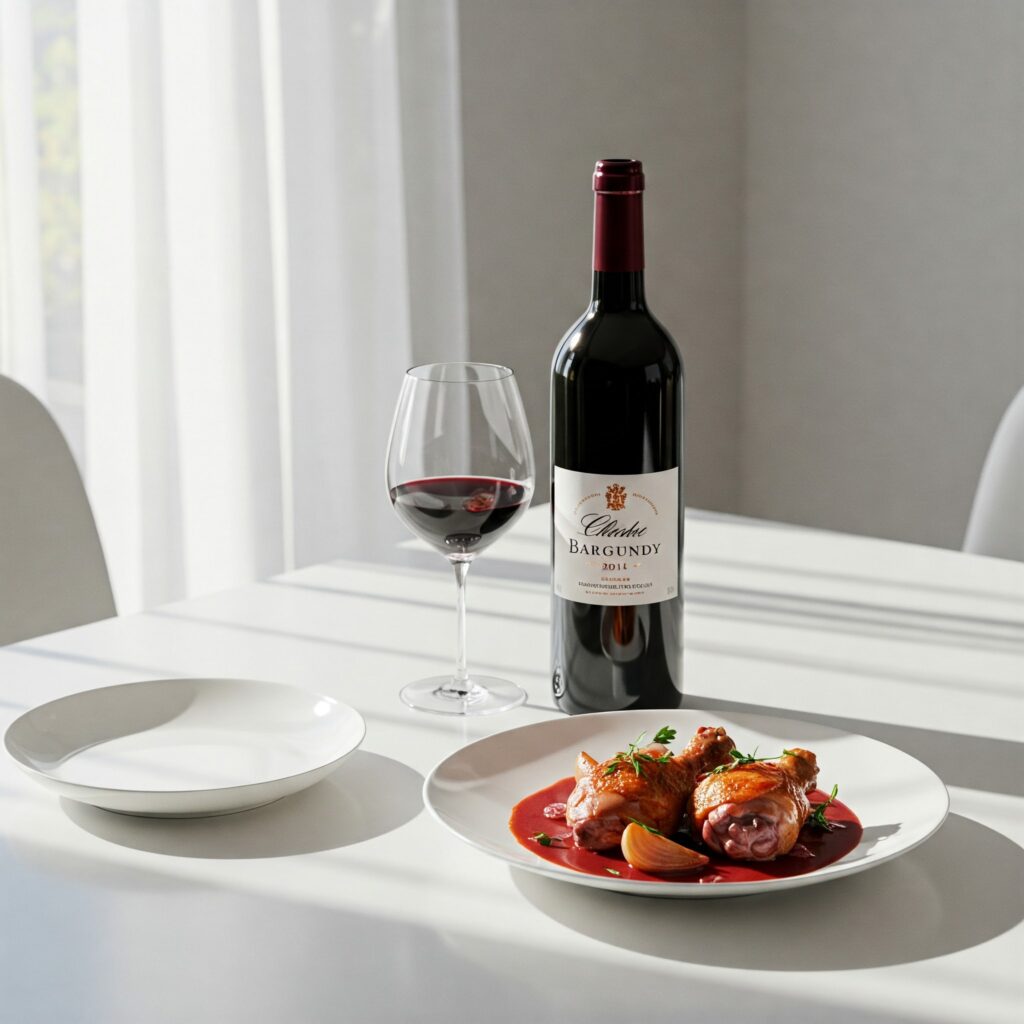
White Burgundy shines alongside seafood, from the classic pairing of Chablis with oysters to richer whites that complement lobster and creamy sauces. The wines' combination of acidity and body makes them ideal partners for a wide range of cuisines, from traditional French to modern Asian fusion.
Bordeaux's Food Affinities: Red Bordeaux's structure and robust tannins call for proteins and fats that can stand up to its powerful profile. Classic pairings include lamb, beef (particularly aged steaks), venison, and hard cheeses. The wines' firm structure helps cut through rich, fatty dishes.

White Bordeaux pairs wonderfully with seafood, particularly when prepared with herbs or in butter sauces. Sweet Sauternes creates magical combinations with foie gras, blue cheeses like Roquefort, and fruit-based desserts. Keep it local with oysters coming from the bay of Arcachon and an crisp Entre-deux-Mers white wine.
Visiting these regions offers distinct yet equally rewarding experiences for the wine traveler, each reflecting the character of their wines and traditions.
Burgundy welcomes visitors with a tapestry of picturesque villages, ancient stone walls, and a palpable sense of history etched into the landscape. The region's charm lies in its intimate scale and refined aesthetic, with narrow country roads winding through the famous Côte d'Or ("Golden Slope") that houses some of the world's most coveted vineyard land.
A typical Burgundy visit centers around small, family-run domaines where tastings often take place in centuries-old cellars with the winemakers themselves. These boutique experiences offer rare insights into traditional winemaking methods and the meticulous attention to detail that defines Burgundian viticulture.
The medieval town of Beaune, with its iconic Hospices de Beaune and vibrant Saturday market, serves as the region's cultural heart. Nearby villages like Gevrey-Chambertin, Vosne-Romanée, and Puligny-Montrachet—names revered by wine lovers worldwide—invite leisurely exploration with their timeless stone buildings and surrounding vineyards.
Dining in Burgundy emphasizes local, seasonal ingredients prepared with classic techniques that highlight rather than overwhelm the region's refined wines. From casual bistros serving perfect coq au vin to Michelin-starred establishments offering contemporary interpretations of Burgundian cuisine, the food scene complements the wine culture perfectly.
Bordeaux offers a more majestic wine tourism experience, centered around impressive châteaux that dot the landscape like architectural jewels. These iconic estates, project the power and global influence that has defined Bordeaux for centuries.
Visits to premier Bordeaux estates often include tours of state-of-the-art winemaking facilities, historic barrel rooms, and carefully curated tasting experiences that showcase vertical vintages. The scale is grander, the presentation more polished, reflecting Bordeaux's long history of international trade and sophisticated marketing. Bordeaux has been receiving visitors far longer than Burgundy and their hospitality sections are well oiled machines today.
The city of Bordeaux itself has undergone a remarkable renaissance in recent decades, transforming from a somewhat sleepy port into a vibrant cultural destination. Its UNESCO-listed center features elegant 18th-century architecture, world-class museums, and a sophisticated dining scene that rivals Paris. The spectacular La Cité du Vin wine museum offers an immersive introduction to wine culture from around the world. With their state of the art tram system, getting around the town is simple. Bicycles can be rented and dropped off anywhere in town and walking around the center is a very safe option.
The surrounding wine regions, from the prestigious Médoc peninsula with its powerful Cabernet-based wines to the charming medieval town of Saint-Émilion with its limestone caves and cobblestone streets, provide diverse experiences for visitors. Each wine region takes a minimun of 45 minutes to an hour to reach from Bordeaux city center. Luxury accommodations, including châteaux-turned-hotels and bed and breakfasts, offer opulent bases for exploring this prestigious wine region.
At Decanter Tours, we understand that truly experiencing these legendary wine regions requires insider knowledge and exclusive access that goes beyond standard tourist routes. Our bespoke wine journeys in Burgundy and Bordeaux are crafted to reveal the soul of these regions through immersive, authentic experiences.
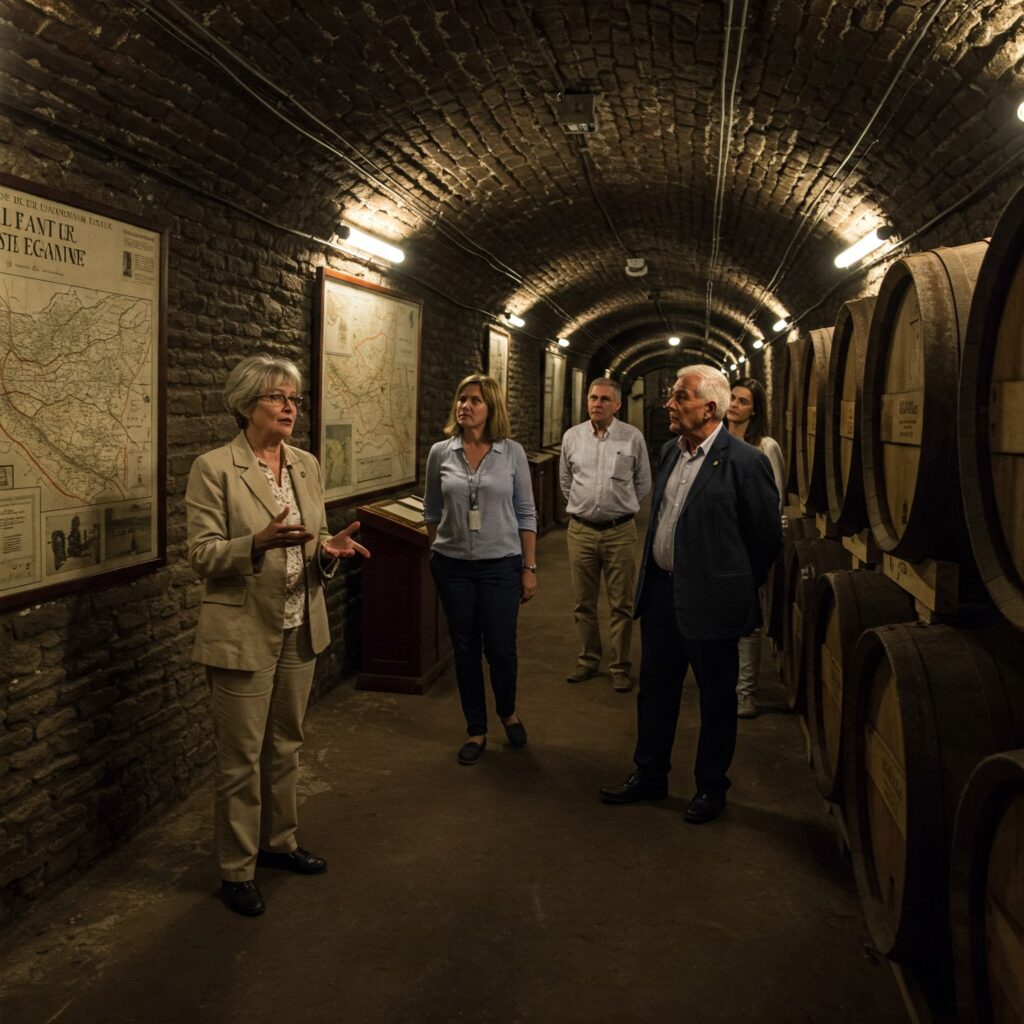
Our deep-rooted relationships with prestigious domains and châteaux open doors typically closed to the public, allowing our guests to taste rare vintages and meet the visionaries behind the wines. In Burgundy, this might mean a private tasting with a fifth-generation winemaker in their family cellar or a private wine and war focused visit: explore the historic cellars connected to the Hospices de Beaune via secret tunnels, once used by owners seeking refuge during WWII.
In Bordeaux, we provide unprecedented access to classified growth châteaux, including behind-the-scenes tours of their state-of-the-art facilities and vertical tastings of exceptional vintages, wine and food pairings and comparative tastings. Our expertly guided explorations of both regions balance iconic estates with hidden gems, ensuring a comprehensive understanding of each region's unique character.
Decanter Tours' luxury experiences extend beyond wine to encompass the finest regional gastronomy, from intimate dinners at Michelin-starred restaurants to cooking classes with celebrated local chefs. Our carefully selected accommodations—whether boutique hotels in historic Beaune or luxurious château stays in Bordeaux—provide the perfect complement to days spent exploring vineyards.
Most importantly, our knowledgeable guides bring these experiences to life with contextual insights that deepen your appreciation of every wine you taste and every landscape you traverse. Whether you're a seasoned collector or an enthusiastic newcomer, Decanter Tours crafts journeys that will forever enhance your understanding and enjoyment of these incomparable wine regions.
Contact us today for your Bordeaux to Burgundy experience.
This age-old debate has no definitive answer, as "better" depends entirely on personal preference. Burgundy produces ethereal, terroir-expressive Pinot Noir wines valued for their aromatic complexity and silky textures. Bordeaux creates more structured, powerful blends (primarily Cabernet Sauvignon and Merlot) prized for their aging potential and consistent quality. Rather than declaring one superior, wine enthusiasts should explore both regions to discover which style resonates more with their individual palate.
While both regions produce wines across various price points, Burgundy's top wines have generally reached higher price levels in recent years due to extremely limited production and growing global demand. The fragmented nature of Burgundy's vineyards, where top producers might make just a few barrels of their finest wines, creates scarcity that drives prices upward. Bordeaux produces larger quantities, even of its most prestigious wines, though First Growth Bordeaux and other top châteaux still command very significant prices. For everyday drinking, both regions offer excellent options at more accessible price points through lesser-known producers and entry-level appellations.
While geographically separated by about 500 kilometers (310 miles), it is certainly possible to experience both Burgundy and Bordeaux in a single trip with proper planning. A high-speed train connects Paris to Dijon (Burgundy) in about 1.5 hours and Paris to Bordeaux in about 2 hours. Alternatively, a direct flight from Lyon (near Burgundy) to Bordeaux takes approximately one hour. Decanter Tours specializes in creating seamless multi-region itineraries that maximize your time in the vineyards rather than in transit, allowing you to compare and contrast these iconic wine destinations in a single luxurious journey. We recommend allowing at least three days in each region to truly absorb their distinctive characters and experience their diverse appellations.
In the hierarchy of fine wines, Second Growth Bordeaux occupies a coveted position that perfectly balances exceptional quality with relative accessibility. These prestigious estates represent the pinnacle of winemaking tradition, offering connoisseurs a taste of Bordeaux's storied legacy without the often prohibitive prices of their First Growth counterparts. As ambassadors of French viticulture excellence, Second Growth Bordeaux wines continue to captivate enthusiasts and collectors worldwide, combining historical significance with uncompromising quality.
Second Growth (Deuxième Cru) Bordeaux wines represent an elite classification of estates that has endured for over 165 years. These distinguished châteaux produce some of the world's most sought-after wines, embodying the perfect marriage of terroir expression, winemaking expertise, and historical prestige.
The story of Second Growth Bordeaux begins with the famous 1855 Classification, created at the request of Emperor Napoleon III for the Exposition Universelle de Paris. This revolutionary ranking system categorized the finest Bordeaux estates from the Médoc region (with the exception of Château Haut-Brion from Graves) into five "growths" or "crus" based on their market prices and reputations at the time.
The classification ranked 61 châteaux in total, with only four estates (later five with the promotion of Château Mouton Rothschild in 1973) achieving the coveted First Growth status. The 15 estates designated as Second Growths represented the next tier of excellence—wines that approached First Growth quality while often offering more favorable value.
This hierarchical system remains largely unchanged today, making it one of the most enduring quality classifications in the world of fine wine.

Second Growth status confers tremendous prestige upon an estate, signaling to consumers that these wines represent the upper echelon of Bordeaux quality. This classification has profound implications:
For wine enthusiasts seeking to explore the pinnacle of Bordeaux without venturing into the often stratospheric pricing of First Growths, the Second Growth classification serves as an invaluable guide to exceptional quality.

The fifteen prestigious estates that comprise the Second Growth classification include some of the most celebrated names in the world of fine wine. Each brings its unique character and contribution to this elite category.
Here's the complete list of the current Second Growth (Deuxième Cru) châteaux from the 1855 Classification, along with their appellations:
Distribution by appellation:
Often referred to as the "Palace of Cos," Château Cos d'Estournel stands as one of the most architecturally distinctive and historically significant of all the Second Growths. Located in Saint-Estèphe, this iconic estate was established by Louis Gaspard d'Estournel in 1811 and quickly gained fame for its exotic, Eastern-inspired architecture—featuring elaborate pagodas, ornate doors from the Sultan of Zanzibar's palace, and distinctive Chinese influences.
The château's founder was nicknamed the "Maharajah of Saint-Estèphe" due to his passion for Eastern culture and his practice of exporting wines to India and other exotic markets. This cosmopolitan approach to winemaking and marketing set Cos d'Estournel apart from its neighbors from the very beginning.
The wines of Cos d'Estournel are known for their powerful structure, spicy complexity, and remarkable longevity. Predominantly composed of Cabernet Sauvignon (often around 65%) with significant Merlot (approximately 35%) and smaller amounts of Cabernet Franc and Petit Verdot, they perfectly embody the muscular yet refined character that makes Saint-Estèphe wines so distinctive.
Recent vintages under the ownership of Michel Reybier and the direction of technical director Dominique Arangoits have received exceptional critical acclaim, with many considering Cos d'Estournel to be producing wines that rival First Growth quality in outstanding years.
Decanter Tours' tip: This is one of our all time favorite visits. Although not inexpensive it is well worth the price tag. And yes, bizarely we pronounce the s in COS.
The Second Growth classification includes several other legendary estates that have shaped Bordeaux's reputation for excellence:
Château Ducru-Beaucaillou (Saint-Julien): Known for its elegant, aromatic wines that perfectly balance power and finesse. The name "beaucaillou" (beautiful stones) refers to the distinctive large quartz stones that cover the vineyard, providing excellent drainage and heat retention. Under the stewardship of the Borie family since 1941, Ducru-Beaucaillou has established itself as one of the most consistent performers among the Second Growths.
Château Montrose (Saint-Estèphe): A powerful, tannic wine built for long aging, Montrose is often considered the most masculine of the Second Growths. Its vineyards benefit from a prime location on a gravelly outcrop overlooking the Gironde estuary, creating a unique microclimate. Montrose has made tremendous quality strides in recent years following substantial investment by its current owners, the Bouygues family.
Château Léoville Las Cases (Saint-Julien): Often referred to as the "First of the Seconds," Léoville Las Cases consistently produces wines of First Growth quality. The estate was once part of the vast Léoville property before being divided in the 19th century. Its Grand Vin comes predominantly from the walled "Grand Clos" vineyard adjacent to Château Latour, and the wines are characterized by their remarkable concentration, structure, and aging potential.
Château Léoville Poyferré (Saint-Julien): Another esteemed property from the divided Léoville estate, Léoville Poyferré has seen remarkable quality improvements since the 1990s under the Cuvelier family's ownership. The château is known for producing opulent, velvety wines with exceptional depth and concentration. With Michel Rolland as consulting oenologist, the wines typically showcase ripe, plush fruit character balanced by Saint-Julien's classic structure and refinement.
Château Gruaud-Larose (Saint-Julien): With its motto "The King of Wines, the Wine of Kings," this historic Saint-Julien property has a reputation for producing powerful, distinctive wines with excellent aging potential. The estate's 82 hectares of vineyards sit on a prominent gravel plateau that provides ideal drainage and sun exposure. Gruaud-Larose wines are characterized by their aromatic complexity, firm tannic structure, and distinctive spice notes that develop beautiful tertiary characteristics with age.

Château Pichon Baron and Château Pichon Comtesse de Lalande (Pauillac): These neighboring estates, once united as a single property, produce distinctly different expressions of Pauillac terroir. Pichon Baron typically crafts more muscular, Cabernet-dominant wines, while Pichon Comtesse often incorporates more Merlot, resulting in a more supple, approachable style with equal aging potential.
Experiencing these estates firsthand on a private Médoc wine tour offers wine lovers an unparalleled opportunity to understand the nuances that make each Second Growth unique.
The exceptional quality and distinctive character of Second Growth Bordeaux wines stem from a combination of geographic fortune, historical expertise, and unwavering commitment to excellence.
Central to the identity of Second Growth Bordeaux is the concept of terroir—that magical combination of soil, climate, topography, and human influence that gives wines their sense of place.
The Médoc peninsula, home to most Second Growth estates, features a patchwork of gravel-dominated soils laid down over millennia by the Garonne and Dordogne rivers. These gravel beds provide perfect growing conditions for Cabernet Sauvignon, the dominant grape variety in most Second Growth blends, by offering:
Each appellation within the Médoc offers subtle variations in soil composition that influence the character of its wines:

When visiting the region with Decanter Tours, guests can witness firsthand how these seemingly subtle terroir variations translate into profoundly different wine styles across neighboring estates.
While terroir provides the foundation, it's the meticulous winemaking practices employed by Second Growth estates that transform exceptional fruit into some of the world's most coveted wines.
These châteaux combine centuries-old traditions with cutting-edge technology to create wines that honor their heritage while continuously elevating quality. Key aspects of their approach include:
Each Second Growth château maintains its distinctive house style while adapting to the unique characteristics of each vintage—a delicate balancing act that requires both scientific precision and artistic sensibility.
Second Growth Bordeaux wines offer a sensory experience that captivates from the moment they're poured into the glass. While each château maintains its distinctive personality, certain common threads unite these exceptional wines.
Young Second Growths typically present with deep ruby to purple coloration, gradually developing garnet and brick hues as they age. On the nose, expect a complex interplay of ripe black fruits (cassis, blackberry), often accented by cedar, pencil shavings, tobacco, and subtle spice notes. Many display a distinctive graphite or gravelly minerality that speaks directly to their terroir.
On the palate, these wines showcase remarkable structural integrity—firm yet refined tannins balanced by precise acidity—providing the framework for concentrated flavors that can include:
The finish is invariably long and complex, with great examples lingering on the palate for minutes. Most importantly, Second Growth Bordeaux wines display remarkable balance—that elusive harmony where fruit, acidity, tannin, and alcohol exist in perfect proportion.
While approachable after 5-10 years in bottle, these wines often reach their peak drinking window between 15-30 years after the vintage, with exceptional years capable of developing beautifully for 50+ years.
Experiencing Second Growth Bordeaux in its natural habitat—amid the historic châteaux and expansive vineyards of the Médoc—offers wine enthusiasts an unparalleled opportunity to deepen their appreciation of these legendary wines.
Decanter Tours specializes in creating bespoke luxury experiences centered around Bordeaux's most prestigious estates, with particular expertise in navigating the often exclusive world of Second Growth châteaux. Our deep relationships with these properties allow us to arrange private visits and tastings not typically available to the general public.
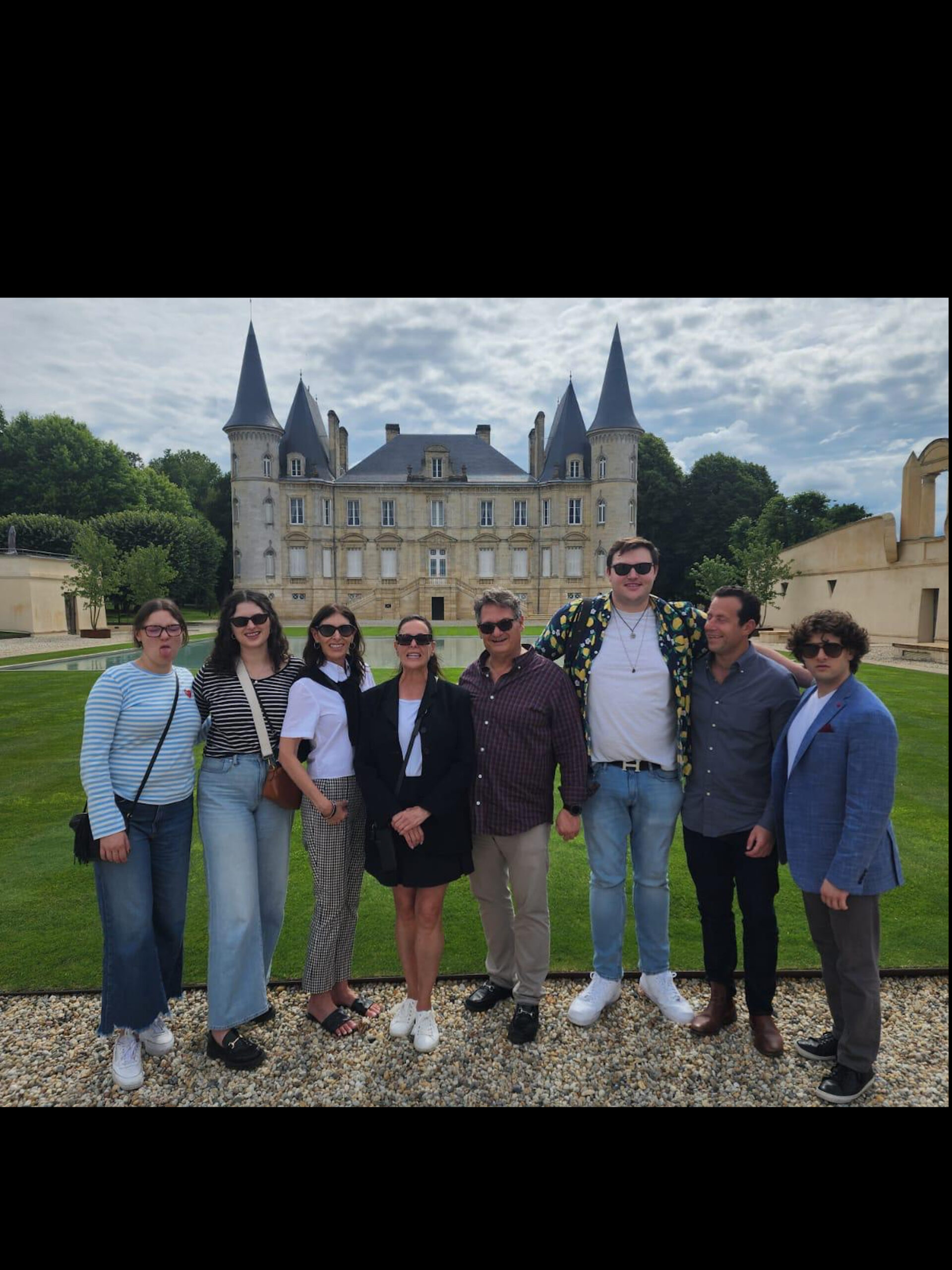
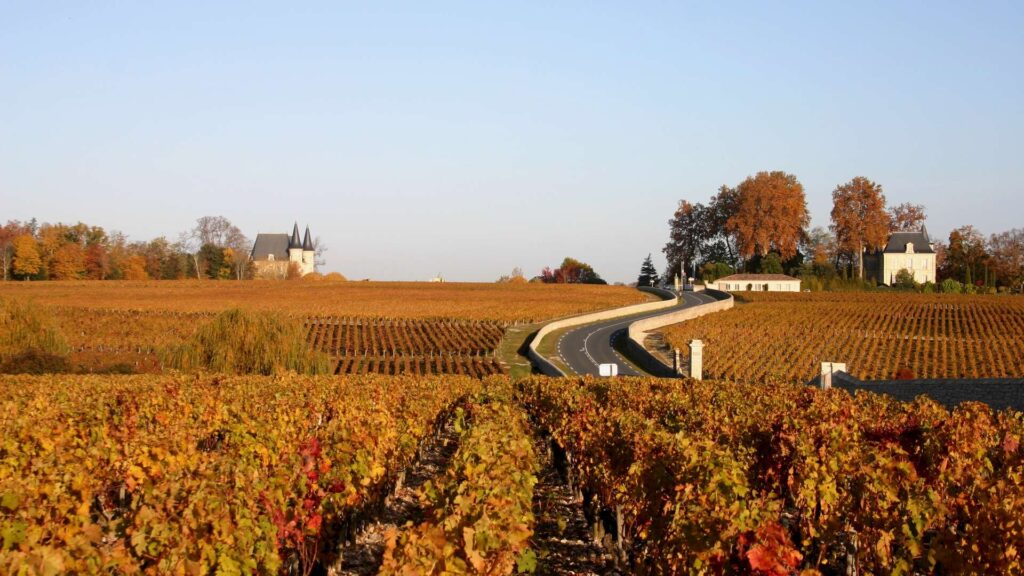
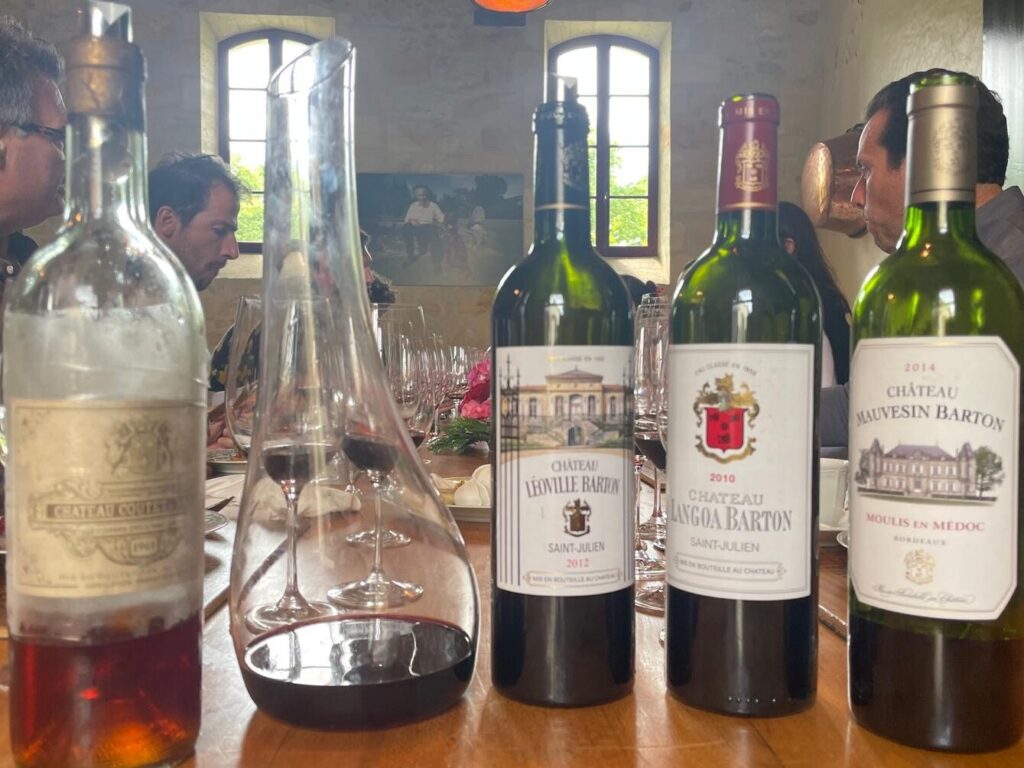
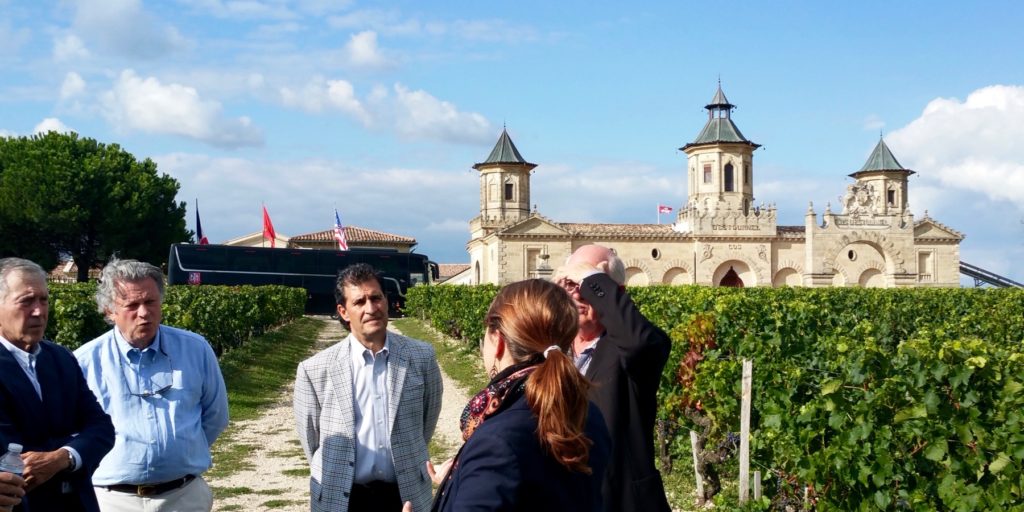
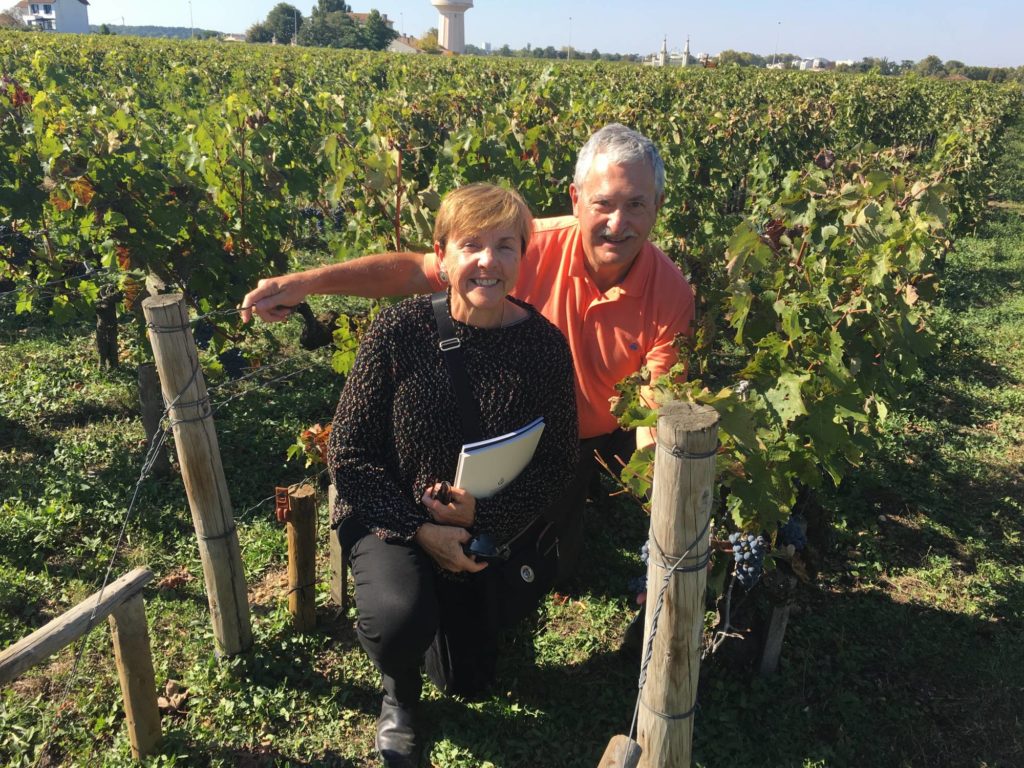
Understanding that each client brings unique interests and preferences, we tailor every aspect of your Second Growth journey:
Whether you're a serious collector seeking investment-grade acquisitions or simply a passionate enthusiast eager to deepen your understanding of fine wine, our Médoc wine tours provide the perfect blend of education, enjoyment, and exclusive access.
First Growth (Premier Cru) and Second Growth (Deuxième Cru) Bordeaux wines represent the two highest tiers in the 1855 Classification. The primary differences include:
Many wine experts and collectors note that in excellent vintages, top Second Growths can approach or occasionally match First Growth quality, often representing superior value for discerning buyers.
Second Growth Bordeaux wines have historically provided solid investment returns while offering greater accessibility than First Growths. Several factors make them attractive to collectors and investors:
However, as with any fine wine investment, purchasing from reputable sources, ensuring proper storage, and focusing on top vintages remains essential for maximizing potential returns.
Yes, many Second Growth châteaux welcome visitors, though typically by appointment only. The accessibility varies significantly between estates:
Working with a specialized tour operator like Decanter Tours provides the advantage of established relationships with these prestigious estates, often enabling access to private tours and tastings not available to independent travelers. Our expertise ensures your Second Growth experience extends beyond the standard visitor offering to include truly memorable and exclusive moments.
The Champagne region of France stands as a testament to centuries of winemaking excellence and innovation. Nestled amidst rolling hills and picturesque landscapes, this iconic region has given the world its most celebrated sparkling wine. Beyond the effervescent bubbles that have become synonymous with celebration worldwide, Champagne offers a rich tapestry of history, culture, and meticulous craftsmanship that has shaped not only France's viticultural heritage but also defined luxury in a glass. From its distinctive chalky soils to its prestigious houses with centuries of tradition, the Champagne region invites exploration into a world where terroir and human ingenuity combine to create liquid magic.
The Champagne wine region is located approximately 90 miles (145 kilometers) northeast of Paris in the historical province of Champagne in the northeast of France. Unlike the common misconception that it's situated in the Charente department (which is actually where Cognac is produced), Champagne primarily spans across five departments: Marne, Aube, Aisne, Haute-Marne, and Seine-et-Marne.
This proximity to Paris proved historically advantageous, allowing for relatively easy transport of wines to the capital and contributing significantly to Champagne's early commercial success. The region covers approximately 34,300 hectares of vineyards and is divided into different growing areas, each contributing unique characteristics to the wines produced there. It is also very handy for a day trip from Paris. The TGV fast train reaches Reims in only 45 minutes.
The Champagne region enjoys a cool continental climate. Average annual temperatures hover around 11°C (52°F), making it one of the most northerly wine regions in France. This cooler climate is actually ideal for producing the high-acidity base wines necessary for premium sparkling wine production.
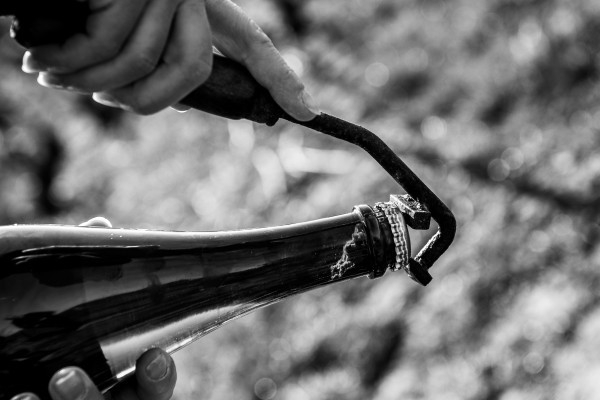
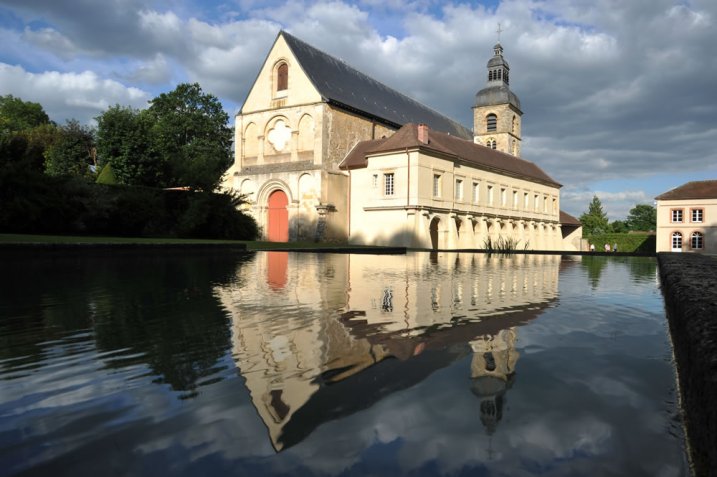
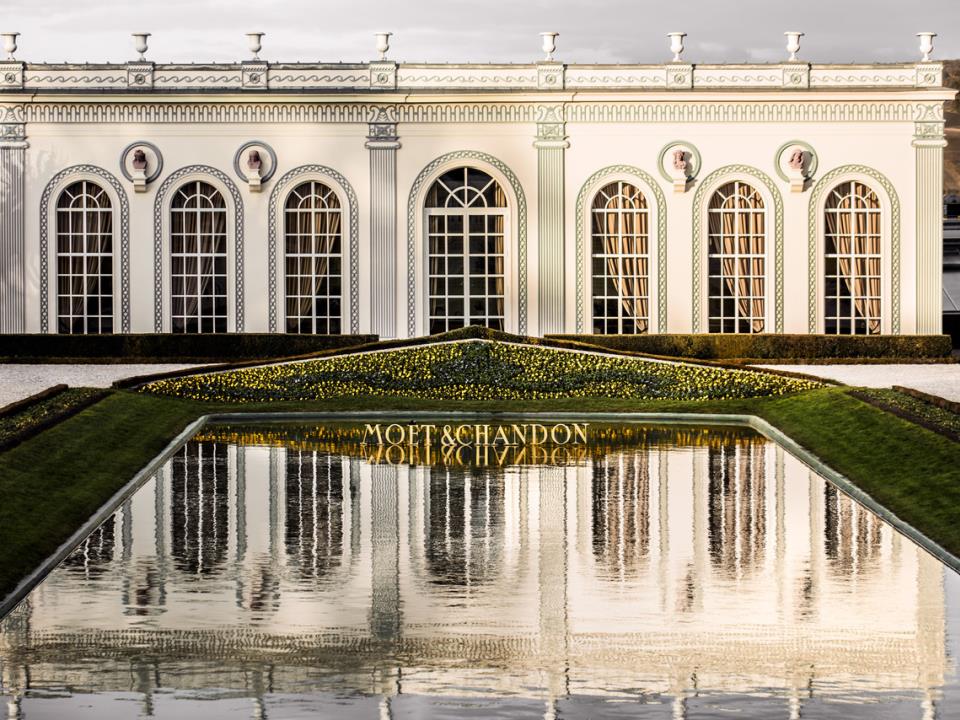
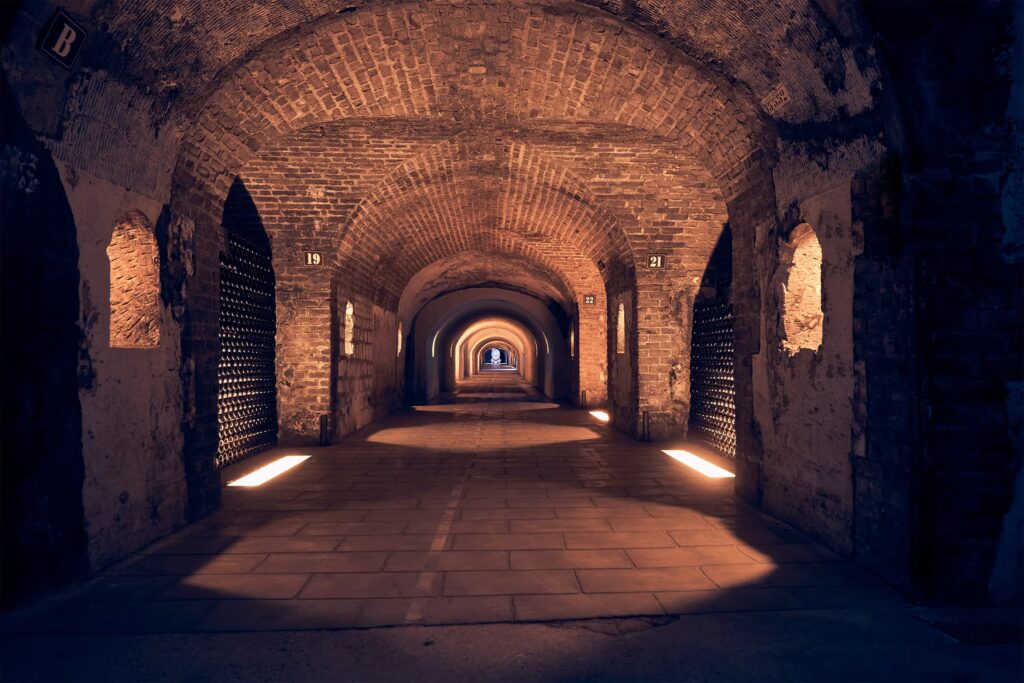
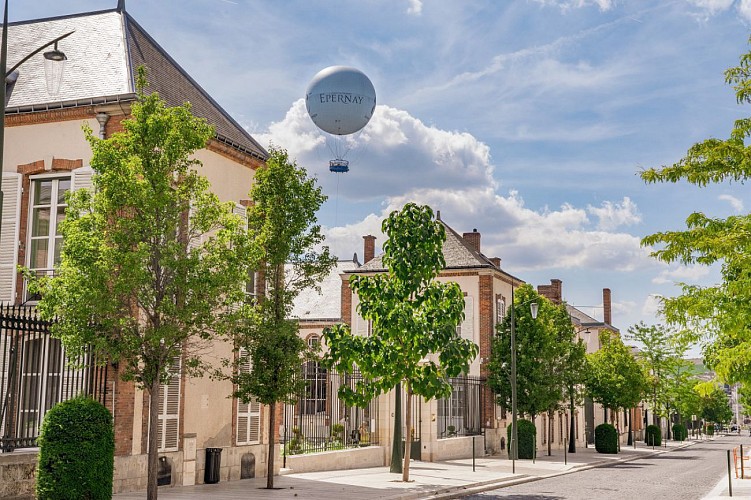
The terroir of Champagne is truly exceptional and plays a crucial role in the distinctive character of its wines. At the heart of this uniqueness is the region's chalky soil, formed millions of years ago from the fossilized remains of marine organisms when the area was covered by a warm, shallow sea.
This chalky subsoil offers several significant advantages for viticulture:
The region's topography of gentle slopes also provides ideal sun exposure and natural drainage, while the cool climate preserves crucial acidity in the grapes. This perfect combination of soil, climate, and topography creates the ideal environment for growing Chardonnay, Pinot Noir, and Pinot Meunier – the three primary grape varieties used in Champagne production.
The viticultural history of Champagne dates back to the Roman era, with the first vineyards planted around the 5th century. For centuries, the region produced still wines that were highly regarded but quite different from today's sparkling Champagne.
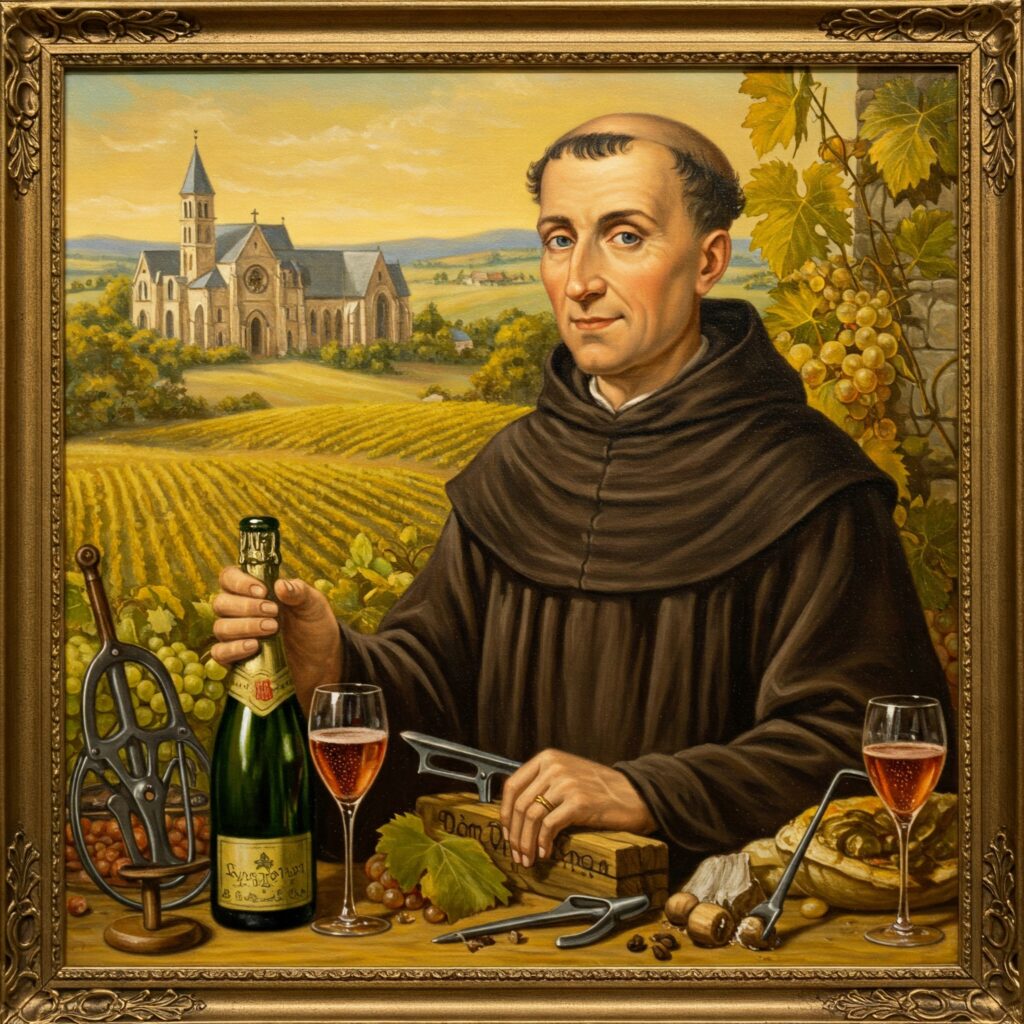
The transformation began in the 17th century. Contrary to popular belief, Dom Pérignon (1638-1715), a Benedictine monk and cellar master at the Abbey of Hautvillers, did not "invent" Champagne. However, he did make significant contributions to improving production methods, including blending grapes from different vineyards and adopting stronger bottles that could withstand the pressure of secondary fermentation.
The sparkling nature of Champagne was initially considered a fault in winemaking. The cold winters in the region would halt fermentation, which would then restart in spring when temperatures warmed, creating carbon dioxide and pressure in the bottles. English scientist Christopher Merret documented the deliberate addition of sugar to create a secondary fermentation in 1662, predating Dom Pérignon's alleged "discovery."
By the 18th century, the deliberate production of sparkling wine gained popularity, especially among the aristocracy and royal courts of Europe. The 19th century saw the establishment of many grand Champagne houses we know today, with improvements in production methods, including riddling racks (invented by Madame Clicquot) and dosage techniques.
Champagne's journey to global fame began with its association with French royalty, particularly during the reign of Louis XIV, whose court at Versailles helped popularize the wine. The coronation of French kings took place in Reims Cathedral in the heart of Champagne, further cementing the wine's prestigious status.
The marketing genius of the early Champagne houses cannot be overstated. They cleverly positioned their product as the beverage of celebration, luxury, and success. By the 19th century, Champagne had become firmly established as the drink of choice for marking significant occasions:
This association with life's most joyous moments, combined with strict production standards and protection of the name "Champagne" through appellation laws, has secured its place as one of France's most prestigious and recognized exports.
The Champagne region is home to hundreds of producers, from small grower-producers to internationally renowned grand houses. Among the most prestigious Champagne houses are:
Ruinart: Founded in 1729, Ruinart is the oldest established Champagne house. Known for its distinctive bottle shape and Chardonnay-focused style, it's renowned for its elegant Blanc de Blancs champagnes and its historic chalk cellars, which are UNESCO World Heritage listed.
Moët & Chandon: Established in 1743, it's one of the world's largest Champagne producers. Moët is known for its consistent house style and its Impérial range. The company owns over 1,000 hectares of vineyards and produces millions of bottles annually.
Dom Pérignon: While technically a prestige cuvée of Moët & Chandon rather than a separate house, Dom Pérignon produces only vintage champagnes of exceptional quality. Named after the famed monk, it represents the pinnacle of luxury in the Champagne world.
Veuve Clicquot: Founded in 1772, the house rose to prominence under the guidance of Madame Clicquot (the "Veuve" or widow), who invented the riddling table and created the first recorded vintage Champagne. Known for its distinctive yellow label and full-bodied style.
Taittinger: A family-owned house established in 1734, known for its high proportion of Chardonnay in its blends, giving them an elegant, fresh style. Its prestige cuvée, Comtes de Champagne, is highly regarded.
Billecart-Salmon: Founded in 1818 through the marriage of Nicolas François Billecart and Elisabeth Salmon, this house is known for its precise, elegant style. Their rosé Champagne is particularly celebrated.
Deutz: Founded in 1838, Deutz is known for producing refined, elegant champagnes. Based in Aÿ, the house maintains relatively small production to ensure quality.
Each house contributes to the rich tapestry of styles and approaches that make the Champagne region so diverse and fascinating.
It is tricky to settle on which are the top four Champagne Houses. For this article we'll focus on four very well-regarded and historically significant Champagne houses that are consistently recognized for their quality: Moët & Chandon, Dom Pérignon, Veuve Clicquot, and Ruinart.
Moët & Chandon:
Dom Pérignon:
Veuve Clicquot:
Ruinart:
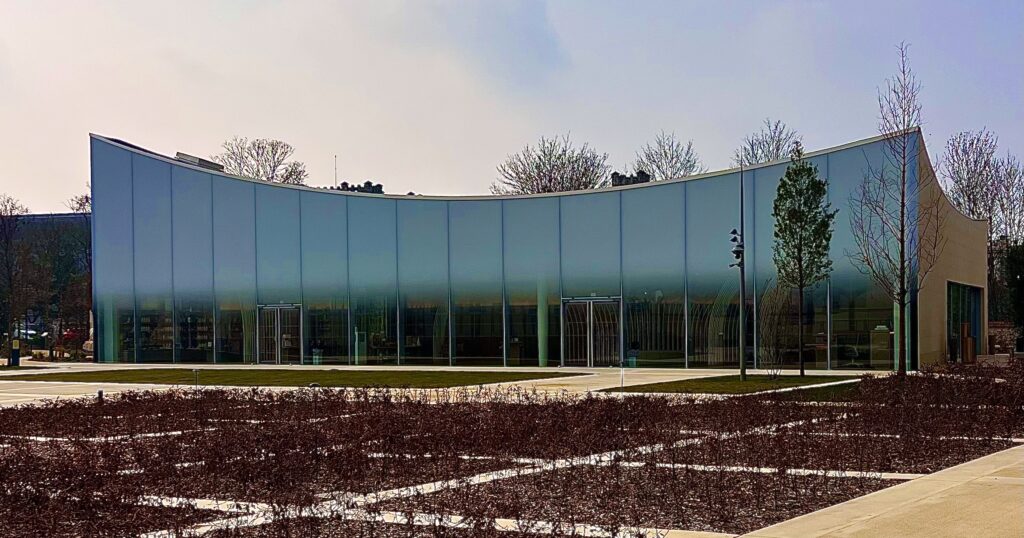
Each house maintains its own distinctive style through careful blending, vineyard selection, and production methods, offering consumers a range of expressions that all still represent the essence of Champagne.
The Champagne appellation encompasses several distinct growing areas, each imparting unique characteristics to the wines produced there:
Montagne de Reims: Located around the city of Reims, this area is predominantly planted with Pinot Noir. The northern slopes typically produce wines with finesse and delicacy, while the southern slopes yield more powerful, structured wines. Key villages include Ambonnay, Bouzy, and Verzenay.
Vallée de la Marne: Following the Marne River, this area is the kingdom of Pinot Meunier, which thrives in its cooler, damper climate and clay-heavy soils. The wines tend to be fruity, round, and approachable. Notable villages include Aÿ (which produces exceptional Pinot Noir), Mareuil-sur-Aÿ, and Dizy.
Côte des Blancs: As the name suggests, this area south of Epernay is almost exclusively planted with Chardonnay. Its pure chalk soils produce wines of exceptional finesse, minerality, and longevity. Premier villages include Avize, Cramant, and Le Mesnil-sur-Oger.
Côte de Sézanne: An extension of the Côte des Blancs, this area also focuses on Chardonnay but produces slightly softer, fruitier styles due to slightly warmer temperatures and more clay in the soil.
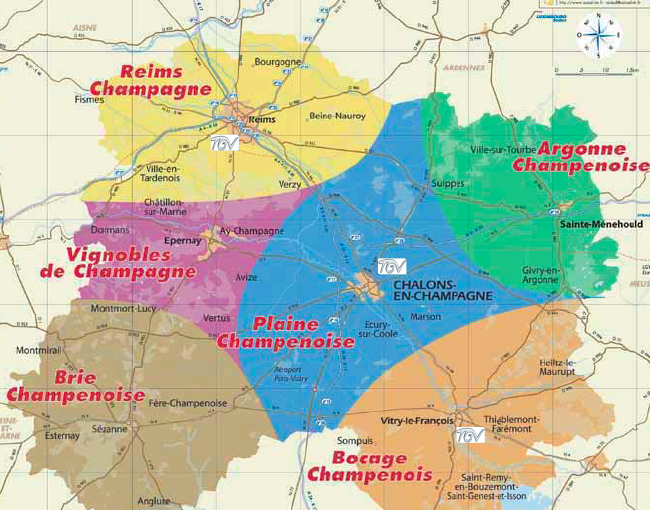
Aube (Côte des Bar): The southernmost region of Champagne, closer to Burgundy than Reims or Epernay. Predominantly planted with Pinot Noir, it produces wines with rich, fruity characters. Key villages include Les Riceys, Bar-sur-Seine, and Bar-sur-Aube.
Epernay: While not a growing area per se, Epernay is the commercial heart of Champagne, home to many major houses and the famous Avenue de Champagne, lined with impressive Champagne house headquarters.
Reims: The largest city in the region, Reims is home to the cathedral where French kings were coronated and houses the headquarters of many prestigious Champagne houses with extensive chalk cellars beneath the city.
The classification system in Champagne is based on a scale of 100 points for villages (historically called the Échelle des Crus). Villages rated 100% are Grand Cru (17 villages currently hold this status), those rated 90-99% are Premier Cru (44 villages), and the rest make up the remaining 296 Champagne villages.
Champagne is primarily produced from three grape varieties:
Chardonnay: The only white grape among the main varieties, Chardonnay contributes elegance, finesse, and aging potential to Champagne blends. It typically offers citrus, green apple, and mineral notes, with a capacity to develop complex brioche and honey characteristics with age. Chardonnay thrives in the chalk-rich soils of the Côte des Blancs.
Pinot Noir: This red grape brings structure, body, and red fruit characteristics to Champagne. Despite being a red grape, the gentle pressing employed in Champagne production extracts the clear juice without the color from the skins. Pinot Noir contributes notes of red berries, cherry, and with age, can develop more complex earthy and spicy characteristics. It's predominantly grown in the Montagne de Reims and the Aube.
Pinot Meunier: Often considered the workhorse of Champagne, this red grape provides fruitiness, roundness, and approachability to blends. It tends to mature earlier than the other varieties, offering bright fruit flavors and floral notes. It's particularly well-suited to the cooler, clay-rich soils of the Vallée de la Marne.
Several styles of Champagne showcase these grapes in different ways:
Blanc de Blancs: Made exclusively from Chardonnay, these Champagnes are typically characterized by their finesse, elegance, and mineral qualities. The term literally means "white from whites."
Blanc de Noirs: Made exclusively from red grapes (Pinot Noir, Pinot Meunier, or both), yet still producing a white or slightly golden wine. These Champagnes tend to be fuller-bodied with more pronounced fruit characteristics. The term means "white from blacks."
The sweetness level in Champagne is determined by the "dosage" – a small amount of wine mixed with sugar that's added after disgorgement:
Brut Nature/Zero Dosage: 0-3 g/L of residual sugar Extra Brut: 0-6 g/L Brut: Less than 12 g/L (the most common style) Extra Dry: 12-17 g/L (despite the name, sweeter than Brut) Sec: 17-32 g/L Demi-Sec: 32-50 g/L Doux: More than 50 g/L (rare, sweet dessert-style Champagne)
Less commonly used but still permitted grape varieties include Pinot Blanc, Pinot Gris, Arbane, and Petit Meslier, which some houses use in small quantities to preserve tradition or create distinctive cuvées.
The Champagne region's viticultural landscape is defined by a fascinating ecosystem of growers and producers that work together in ways not commonly seen in other wine regions. While most people associate Champagne exclusively with sparkling wine, understanding the relationship between growers and producers is key to appreciating the region's unique character.
There are approximately 16,000 grape growers (vignerons) in Champagne, but only about 4,300 of them produce and market their own Champagne. The majority of growers sell their grapes to the large Champagne houses (Maisons) or to cooperatives, creating a symbiotic relationship that defines the region's production model.
The large Champagne houses typically own some vineyards but purchase a significant portion of their grapes from independent growers, often maintaining long-term relationships spanning generations. These contracts are highly valuable for both parties, providing houses with consistent grape sources and growers with guaranteed income.
Cooperatives like Nicolas Feuillatte or Union Champagne (which produces Alfred Gratien) allow smaller growers to pool their resources to produce Champagne collectively. Many growers belong to these cooperatives, delivering their grapes for communal processing rather than selling to the large houses.
Some smaller growers may not produce any Champagne at all, focusing exclusively on viticulture and selling their entire harvest to houses or cooperatives. Others may sell a portion of their harvest and use the remainder to produce small quantities of their own Champagne, often referred to as "Grower Champagne" or "Récoltant-Manipulant" (RM on the label).
Unlike still wine regions where nearly all grapes are processed into wine, Champagne's production system creates a marketplace where grapes themselves are valuable commodities, with prices carefully controlled through the region's interprofessional committee.
The production of Champagne follows a meticulous process known as the "Méthode Champenoise" or "Traditional Method," which creates its distinctive bubbles and complex flavors:
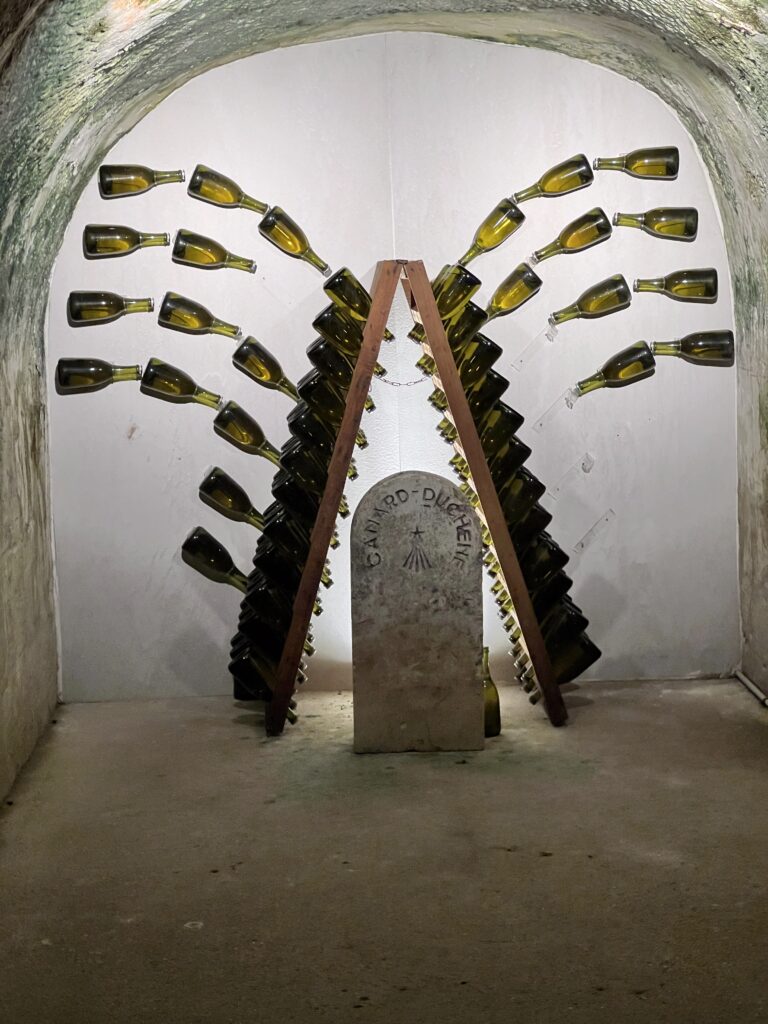
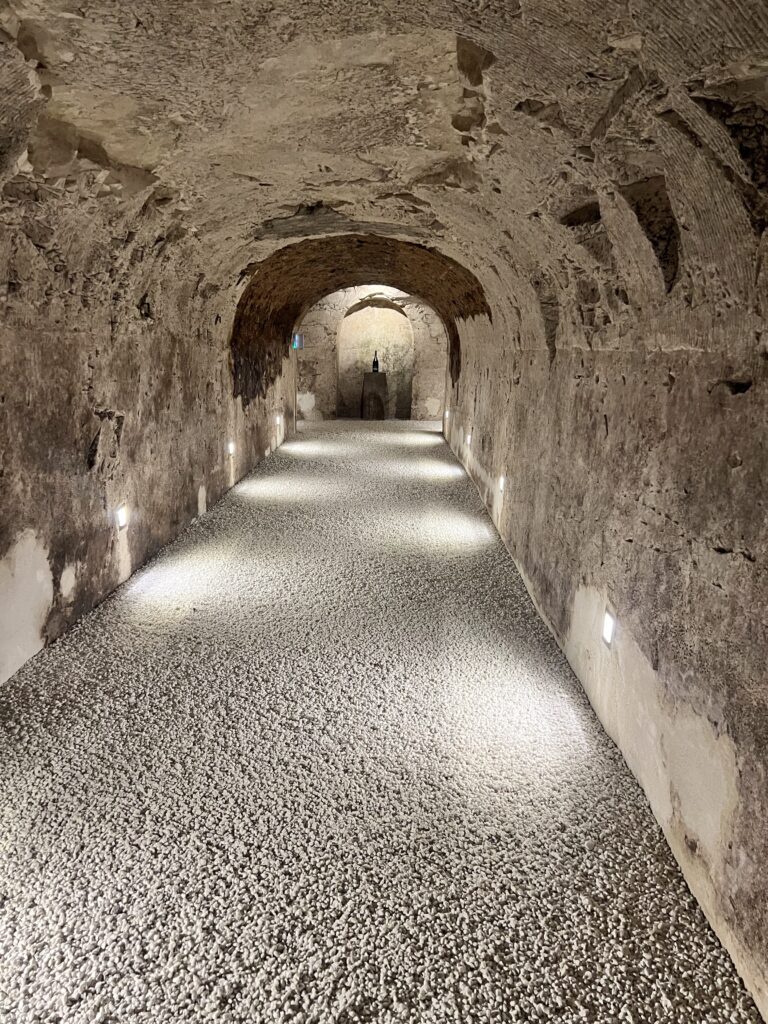
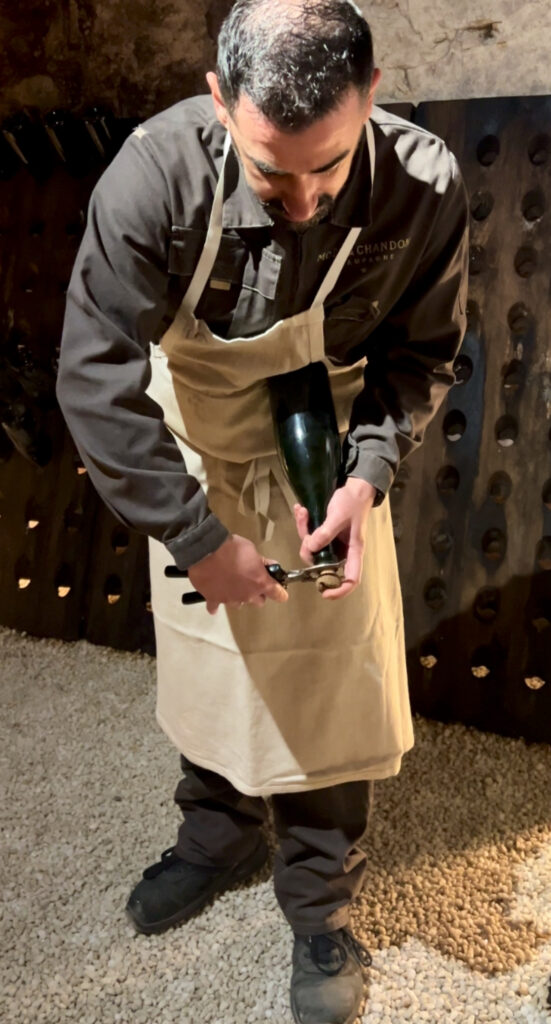
The entire process from grape to glass takes a minimum of 15 months for non-vintage Champagne, but many quality-focused producers age their wines for several years before release.
Champagne production falls into two main categories: non-vintage (NV) and vintage, each with distinct characteristics and production philosophies:
Non-Vintage Champagne:
Vintage Champagne:
The decision to declare a vintage is made by each house independently based on their assessment of the year's quality. Some houses are more conservative, declaring only a few vintages per decade, while others might produce vintage Champagne more frequently.
Beyond these categories, exceptional years may lead to the creation of prestige cuvées—a house's top-tier offering, like Dom Pérignon, Krug Clos du Mesnil, or Louis Roederer Cristal. These wines represent the pinnacle of Champagne production, often made from the finest vineyard sites and aged for extended periods.
Decanter Tours specializes in creating bespoke, luxury experiences throughout the Champagne region, offering wine enthusiasts unprecedented access to this prestigious wine region. Their sommelier-led tours provide a level of exclusivity and expertise rarely available to the general public.
For visitors seeking an authentic and immersive experience, Decanter Tours creates personalized itineraries that may include:
Each tour is tailored to the specific interests, knowledge level, and preferences of the guests, whether they're connoisseurs seeking in-depth technical experiences or newcomers wanting an accessible introduction to the world of Champagne. Decanter Tour's connections within the region allow for unique experiences not available through standard tourism channels, making them the premier choice for discerning travelers looking to experience the true essence of Champagne.
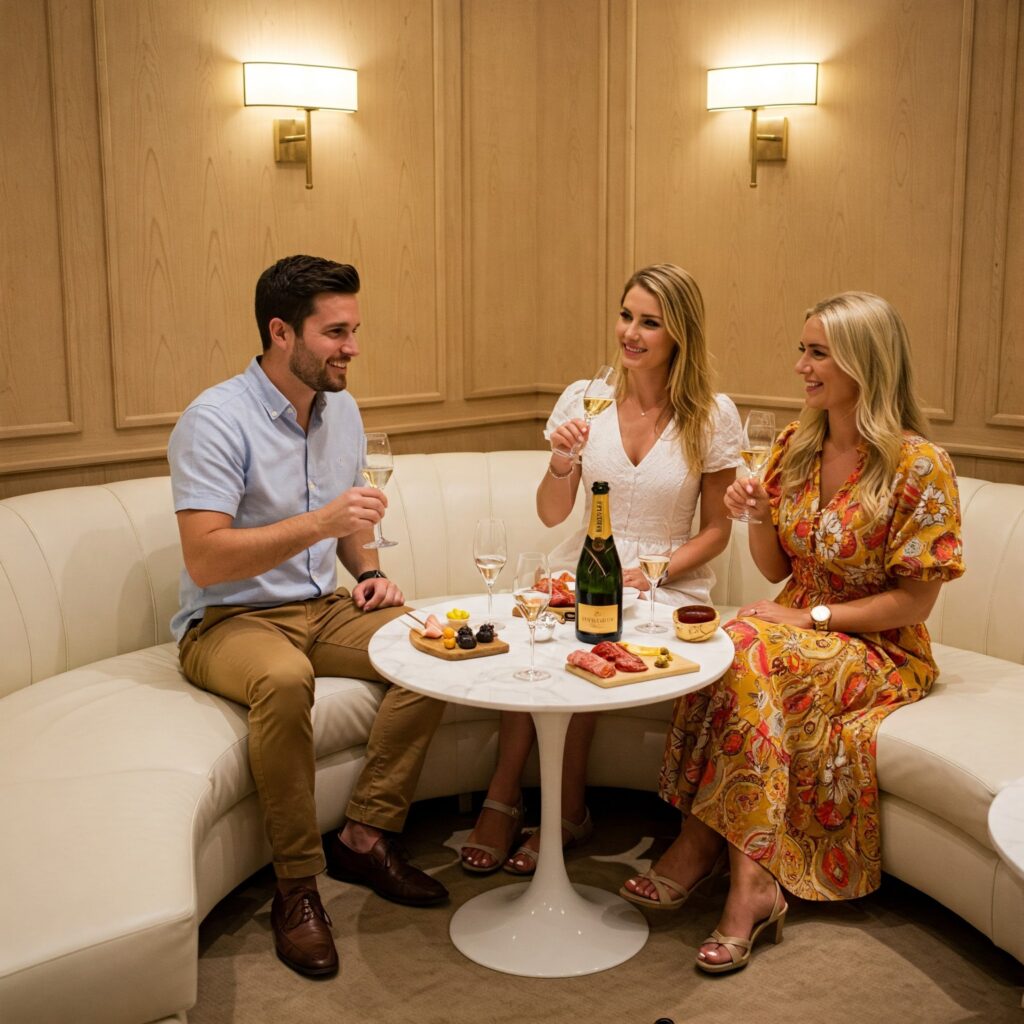
Embarking on a champagne tour in Reims is a journey through history, culture, and craftsmanship. Each tour typically begins with a warm welcome from your guide, who will provide an overview of the house's history and significance in the champagne world. As you descend into the cellars, you'll be struck by the cool, dimly lit atmosphere, a stark contrast to the vibrant vineyards above. These cellars, often carved out of chalk, provide the ideal environment for aging champagne, maintaining a constant temperature and humidity year-round.
As you explore the cellars, your guide will explain the intricate process of champagne production, from the initial pressing of the grapes to the final bottling. You'll learn about the méthode champenoise, which involves a second fermentation in the bottle, creating the characteristic bubbles. The tour will also cover the riddling process, where the bottles are gradually tilted and rotated to collect the sediment in the neck, and the disgorgement, where the sediment is removed. This detailed insight into the craftsmanship behind each bottle of champagne is both educational and fascinating.
The highlight of any champagne tour is, of course, the tasting session. You'll have the opportunity to sample several different champagnes, each with its own unique flavor profile. The guide will explain the nuances of each variety, from the crisp, citrus notes of a Blanc de Blancs to the rich, fruity flavors of a Rosé. This tasting experience not only enhances your appreciation of champagne but also helps you identify your personal preferences. Whether you're a seasoned connoisseur or a curious novice, a champagne tour in Reims is a sensory delight that offers a deeper understanding of this exquisite beverage.
Contact Decanter Tours for more information about a Champagne wine tour.
Just north of Bordeaux, in southwestern France, lies a region of extraordinary cultural and historical significance—the Cognac region. This picturesque landscape, carved by the winding Charente River, has given birth to one of the world's most prestigious spirits. Beyond its eponymous brandy, the Cognac region tells a story of centuries-old tradition, remarkable craftsmanship, and a deep connection to the land that nurtures its iconic grape varieties.
While globally celebrated for its amber-hued spirit, the region harbors a lesser-known yet equally fascinating wine culture. The same terroir that produces exceptional eau-de-vie also yields distinctive wines, offering visitors a multifaceted tasting experience. From medieval towns to sprawling vineyards and historic distilleries, the Cognac region presents a rich tapestry of French heritage waiting to be discovered.
The Cognac region occupies a privileged position in southwestern France, primarily within the Charente and Charente-Maritime departments. Located approximately 120 kilometers north of Bordeaux, (about 1-1/2 hours drive), this region benefits from a strategic position between the Atlantic Ocean to the west and the gentle rolling hills of the French countryside to the east.
Spanning approximately 78,000 hectares of vineyards, the Cognac region is centered around the charming town of Cognac itself, with Jarnac, Segonzac, and Châteauneuf-sur-Charente serving as other important centers of production. The landscape is dominated by the meandering Charente River, which historically provided vital transportation for barrels of the precious spirit to reach ships bound for international markets.
The region's proximity to the Atlantic creates a unique maritime climate that moderates temperatures year-round. Mild winters and warm—but not excessively hot—summers provide ideal growing conditions for the Ugni Blanc grape (also known as Trebbiano), which accounts for over 98% of plantings in the region. This geographic sweet spot, combining coastal influence with continental characteristics, contributes significantly to the distinctive character of Cognac spirits.
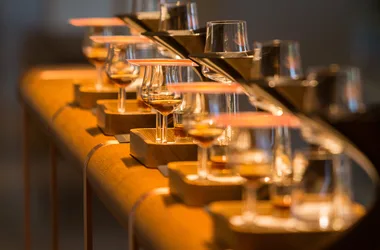
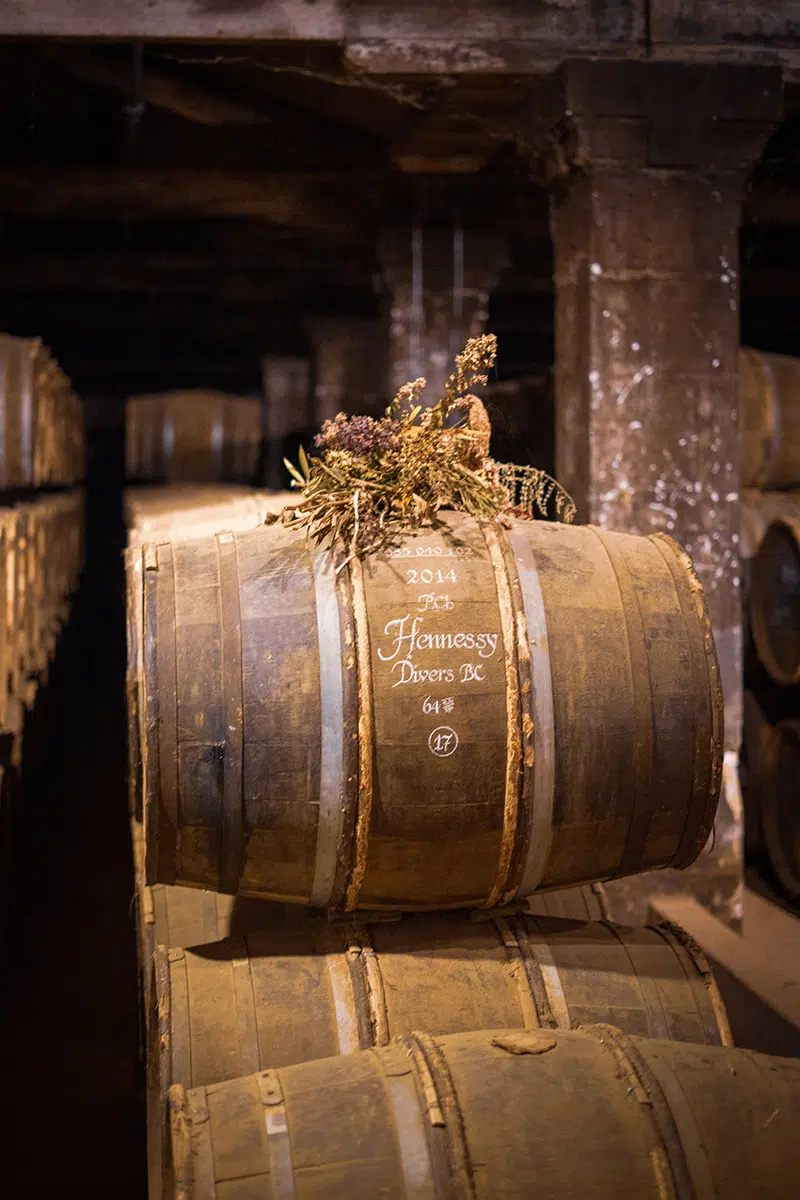
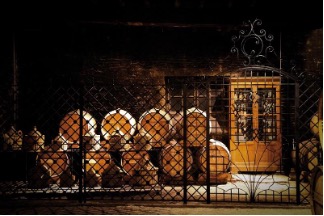
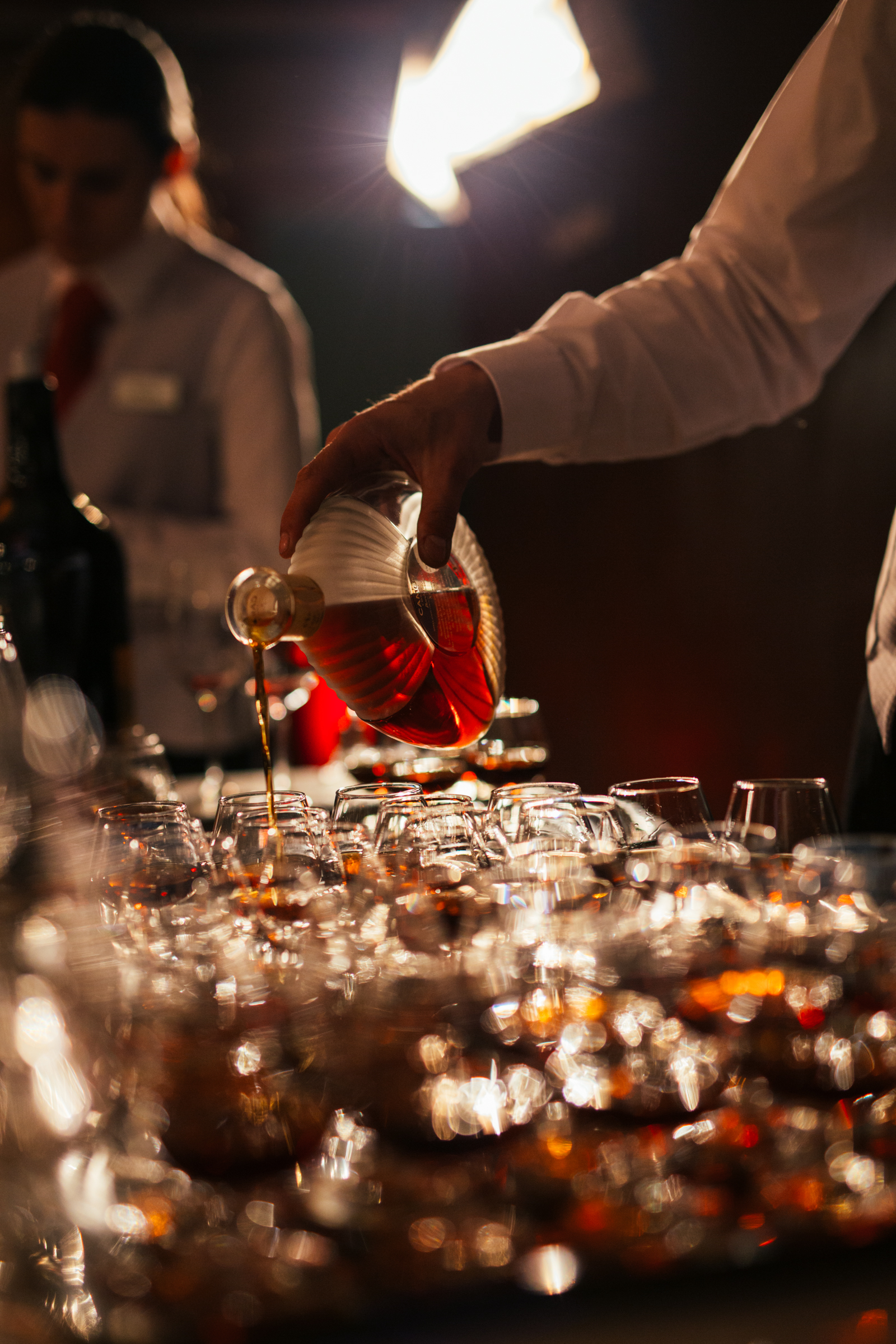
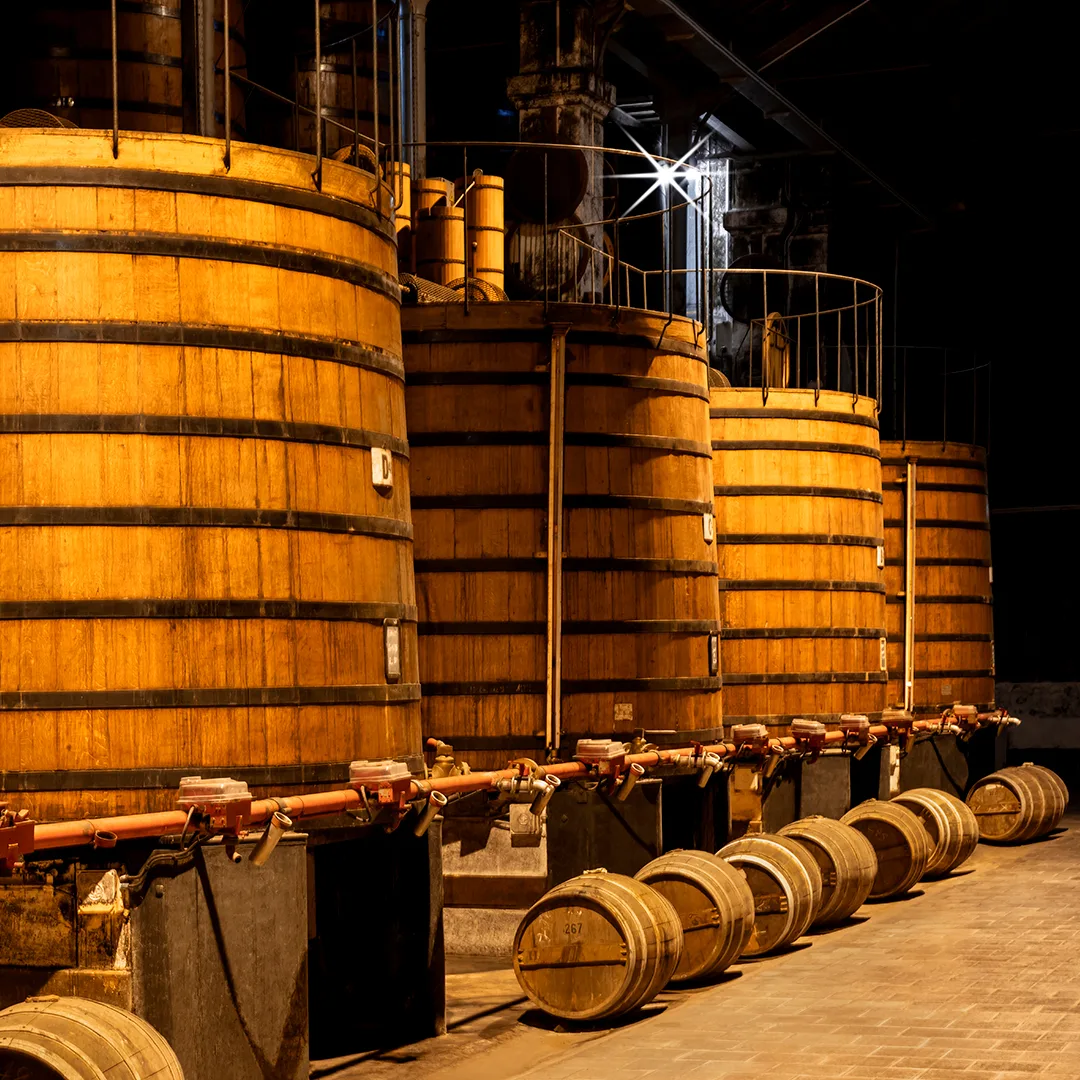
The exceptional quality of Cognac owes much to the region's remarkable terroir—a harmonious combination of soil, climate, and topography that creates ideal conditions for producing the base wines destined for distillation.
Central to Cognac's terroir is its distinctive soil composition. The region is characterized by chalky, limestone-rich soils, particularly in the premier growing areas of Grande Champagne and Petite Champagne. These soils, formed from marine sediments dating back to the Jurassic period, provide excellent drainage while maintaining sufficient moisture reserves during dry periods—perfect conditions for vines to develop deep root systems that access the underlying mineral content.
The maritime climate of Cognac represents another crucial element of its terroir. The Atlantic Ocean's proximity moderates temperature extremes, providing mild winters and warm summers with adequate rainfall. This climate allows for a long, even ripening period that produces grapes with the perfect balance of acidity and sugar content—high acidity being particularly desirable for distillation purposes.
Mist formations along the Charente River valley create microclimates that influence flavor development in the grapes, while the region's gentle slopes offer varying degrees of sun exposure, further contributing to the complexity found in Cognac spirits. This combination of factors—chalky soils, maritime influence, and topographical variations—creates a terroir perfectly suited to producing wines with the precise characteristics needed for exceptional Cognac production.
The predominant grape variety, Ugni Blanc, thrives in these conditions, yielding wines that may seem unremarkable for direct consumption but possess the ideal qualities for distillation: high acidity, relatively low alcohol content, and subtle flavors that transform beautifully during the distillation and aging processes.
The Cognac region's storied past begins in antiquity, with viticulture introduced by the Romans around the 3rd century AD. However, the region initially gained prominence not for spirits but for salt production and wine cultivation. These early vineyards produced wines that were exported to Northern Europe, particularly the Netherlands and England, as early as the 12th century.
A pivotal moment in Cognac's history occurred in the 16th century when Dutch traders began distilling the region's wines to preserve them during long sea voyages and reduce shipping costs. This process, known as "brandewijn" (burnt wine), gave birth to what would eventually become Cognac. By the early 17th century, a second distillation was introduced, creating the double-distillation method that defines Cognac production to this day.
The 17th and 18th centuries witnessed the establishment of the first official Cognac houses, with Martell founded in 1715, followed by Rémy Martin (1724), Hennessy (1765), and others. These pioneering enterprises laid the foundation for an industry that would gain global recognition for its exceptional quality and craftsmanship.
The 19th century brought both challenges and innovations. The phylloxera crisis of the 1870s devastated European vineyards, including those in Cognac. The region's recovery involved replanting with American rootstock resistant to the pest, with Ugni Blanc emerging as the predominant grape variety due to its resilience and suitability for distillation.
The 20th century saw the formalization of Cognac production regulations, with the Appellation d'Origine Contrôlée (AOC) status granted in 1936, establishing clear geographic boundaries and production standards. This legal framework helped preserve traditional methods while ensuring consistent quality across the region.
Today, the Cognac region stands as a testament to centuries of tradition, innovation, and perseverance, with its history reflected in every aspect of production, from vineyard practices to the aging of spirits in centuries-old cellars.
Cognac's journey from local agricultural product to global luxury icon represents one of France's most remarkable export success stories. This transformation began in earnest during the 17th century, when Dutch merchants recognized the potential of distilling the region's acidic white wines to create a more stable product for shipping across northern Europe.
The British market played a crucial role in Cognac's international rise, with merchants establishing trading houses in the region to source and export the finest spirits. Names like Martell, Hennessy (founded by an Irishman), and later Courvoisier capitalized on growing British demand, establishing commercial networks that would eventually span the globe.
The 18th and 19th centuries saw Cognac gain prestige among European aristocracy and royal courts. Napoleon Bonaparte famously favored Courvoisier, a connection the house proudly maintains in its marketing as "The Cognac of Napoleon." This royal and aristocratic patronage elevated Cognac's status from mere commodity to luxury product.
Colonial expansion in the 19th century opened new markets for Cognac houses, particularly in Asia. Hennessy recognized the potential of the Chinese market as early as 1859, laying the groundwork for what would become one of Cognac's most important export destinations. Similarly, expansion into American markets following the Civil War established another crucial consumer base.
The development of distinctive bottles, labels, and aging classifications (VS, VSOP, XO) in the 19th century further distinguished Cognac as a premium product with varying levels of quality and price points, making it accessible to different segments of the international market.
The post-World War II period saw Cognac cement its status in popular culture, with prominent placement in film, music, and literature. The spirit became associated with sophistication and success, particularly in American and later Asian markets. Hip-hop culture embraced Cognac in the late 20th century, with artists frequently referencing brands like Hennessy and Rémy Martin, introducing the spirit to new generations of consumers.
Today, Cognac represents one of France's most valuable exports, with over 200 million bottles shipped annually to more than 160 countries. The industry generates billions in revenue and serves as a powerful ambassador for French craftsmanship, luxury, and cultural heritage.
The Cognac region is home to numerous producers, from small family operations to global powerhouses. However, four houses have emerged as the dominant forces in the industry, collectively accounting for over 85% of global Cognac sales. These prestigious maisons have shaped the industry's development and continue to define its future.
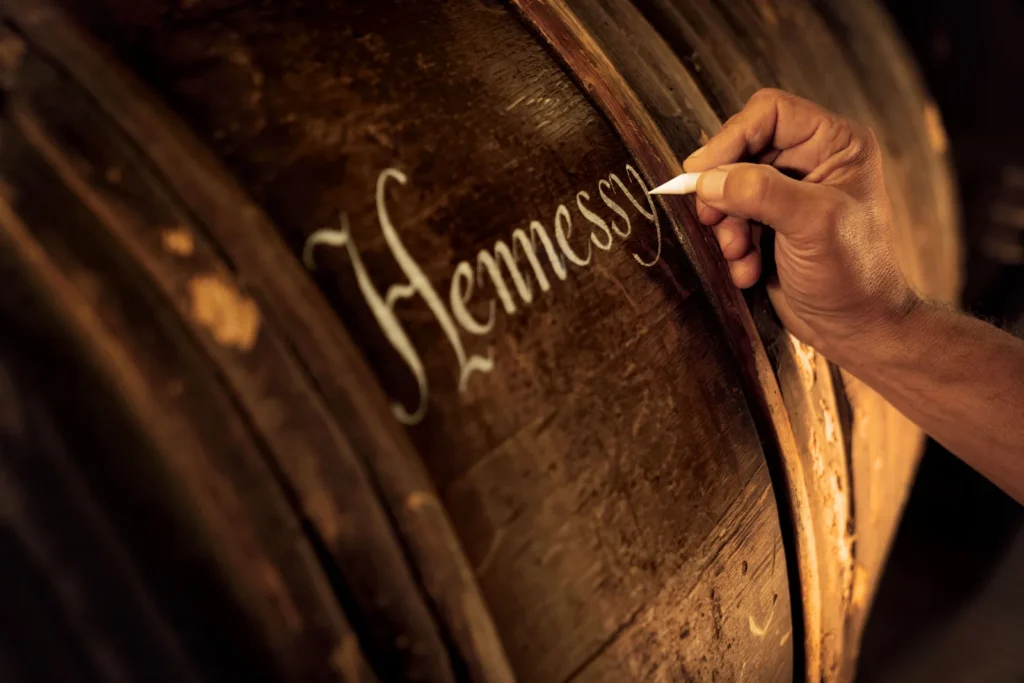
Hennessy: Founded in 1765 by Irish military officer Richard Hennessy, this house has grown to become the largest Cognac producer, representing nearly half of global Cognac sales. Owned by luxury conglomerate LVMH,
Hennessy maintains extensive vineyards and distillation facilities throughout the region. The house is renowned for its innovative marketing and wide range of expressions, from the accessible Hennessy VS to the prestigious Paradis Imperial. Hennessy's extraordinary reach in international markets, particularly in the United States and China, has made it synonymous with Cognac for many consumers worldwide.
Rémy Martin: Established in 1724, Rémy Martin distinguishes itself by producing Cognacs exclusively from the premier Grande Champagne and Petite Champagne crus, creating what's known as Fine Champagne Cognac.
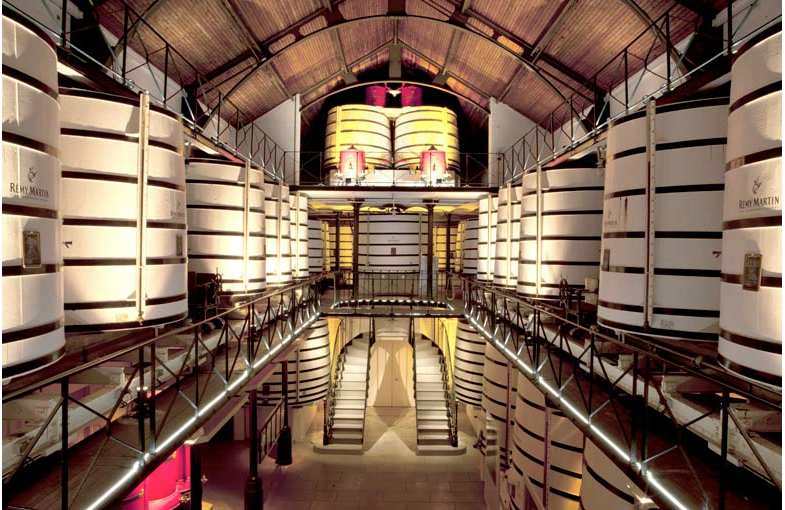
The house's flagship Louis XIII expression, aged in century-old tierçons (unique oak barrels) and incorporating eaux-de-vie up to 100 years old, represents one of the world's most prestigious spirits. Rémy Martin's commitment to terroir and traditional production methods has earned it a reputation for exceptional quality and complexity.

Martell: The oldest of the major Cognac houses, founded in 1715 by Jean Martell, is characterized by its distinctive style emphasizing elegance and finesse. Martell's signature approach includes distilling its eaux-de-vie without lees and
aging predominantly in fine-grain oak from the Tronçais forest. This results in Cognacs celebrated for their subtle fruit notes and refined character. The house's Cordon Bleu expression, created in 1912, remains an iconic representation of the Martell style.
Courvoisier: Often referred to as "The Cognac of Napoleon," Courvoisier was established in 1835 in Jarnac and gained fame as the preferred spirit of the French Imperial Court.
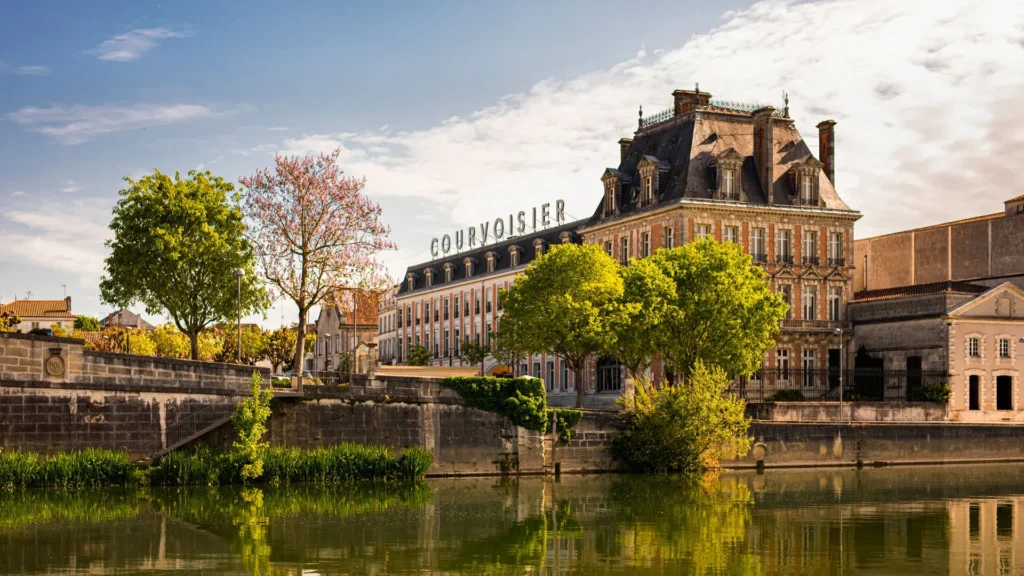
Now owned by Beam Suntory, Courvoisier produces a range of expressions, from the fruit-forward VS to the richly complex XO. The house's distinctive packaging and historical associations have helped establish its premium positioning in international markets.
Beyond these four major houses, the region is also home to respected producers like Camus (the largest family-owned Cognac house), Hine (renowned for its vintage Cognacs), Delamain (specializing exclusively in older Cognacs), and numerous smaller artisanal producers who maintain traditional methods and often focus on specific terroirs within the region.
While the major Cognac houses share a commitment to quality and tradition, each has developed distinctive approaches to production, aging, and blending that create recognizable house styles.
Hennessy is characterized by its balanced approach, producing Cognacs that offer accessibility while maintaining complexity. The house employs a vast team of tasters and blenders led by the Master Blender, who works with a tasting committee to maintain consistency across its extensive portfolio. Hennessy's style often features vibrant fruit notes balanced with subtle oak influence, spice, and floral elements. The house is also known for its innovative aging techniques and experimental limited editions that push the boundaries of traditional Cognac production while respecting its core principles.
Rémy Martin stands apart through its exclusive use of grapes from the Grande Champagne and Petite Champagne crus, creating Fine Champagne Cognacs known for their exceptional aging potential. The house style emphasizes floral notes, particularly the characteristic "rancio" (a desirable nutty, slightly rancid quality that develops with extended aging). Rémy Martin employs a female Cellar Master, a relative rarity in the industry, continuing a tradition of sensory expertise passed down through generations. The house's production methods emphasize longer aging periods and a patient approach to development.
Martell distinguishes itself through a unique distillation process where the lees (residual yeast) are removed before distillation, resulting in a purer, fruit-forward style. The house prefers fine-grained oak from the Tronçais forest for aging, which imparts subtle tannins and allows the fruit character to remain prominent. Martell's Cognacs typically display elegant dried fruit notes, subtle spice, and exceptional smoothness. The house also places particular emphasis on the Borderies cru, the smallest of Cognac's growing regions, known for producing eaux-de-vie with distinctive nutty aromas and round mouthfeel.
Courvoisier is recognized for its floral, delicate approach, with Cognacs that often display pronounced jasmine, orange blossom, and dried fruit notes. The house employs specific distillation techniques that retain these aromatic compounds, including careful temperature control during the process. Courvoisier ages its spirits in handcrafted oak barrels from the Limousin and Tronçais forests, with the wood first seasoned for at least three years before barrel construction. This meticulous approach to wood management contributes to the house's refined style and subtle oak integration.
These distinctive approaches to every stage of production—from grape selection to distillation, aging, and blending—ensure that each house maintains a recognizable signature while operating within the strict regulations that govern Cognac production. For connoisseurs, these differences offer a fascinating study in how nuanced variations in technique can produce dramatically different expressions of the same spirit.
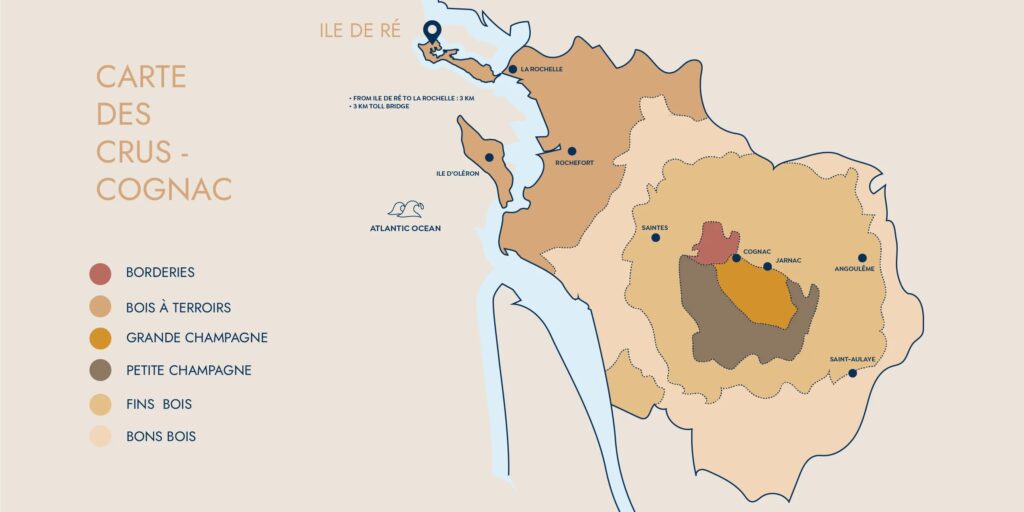
The Cognac region is divided into six distinct growing areas or "crus," each with unique soil compositions and microclimates that influence the character of eaux-de-vie produced there. These appellations form a series of concentric rings around the town of Cognac, with quality traditionally considered to decrease as one moves outward from the center.
Grande Champagne, the premier cru, occupies the heart of the region south of the town of Cognac. Its highly calcareous soil, composed primarily of soft, crumbly chalk from the Campanian period, produces eaux-de-vie prized for their finesse, floral aromas, and exceptional aging potential. Spirits from this appellation develop slowly, often requiring decades to reach their full potential, but reward patience with extraordinary complexity and length.
Petite Champagne surrounds Grande Champagne and shares similar chalky soils, though with a higher clay content. Eaux-de-vie from this cru display characteristics similar to those from Grande Champagne—floral notes, finesse, and good aging potential—though typically developing slightly faster. When Cognac contains spirits exclusively from Grande and Petite Champagne, with at least 50% from Grande Champagne, it may carry the prestigious "Fine Champagne" designation.
Borderies, the smallest of the six crus, lies north of the town of Cognac. Its unique soil composition, featuring flinty clay, produces eaux-de-vie with distinctive nutty aromas, particularly notes of violet and iris. Cognacs containing a high proportion of Borderies typically display a round, smooth character and reach optimal maturity faster than those from the Champagne districts.
Fins Bois encircles the three central crus and features heavier, clayey soils. Eaux-de-vie from this region develop more rapidly, producing round, supple Cognacs with fruity, grape-like aromas and notes of fresh pressed grapes. Though historically considered less prestigious than the central appellations, skillful distillers produce excellent Cognacs from Fins Bois, particularly valued for adding fruity complexity to blends.
Bons Bois and Bois Ordinaires form the outermost rings of the Cognac region. These areas have sandy soils with less limestone and experience stronger maritime influences. Eaux-de-vie from these regions mature quickly and traditionally provide lighter components for blended Cognacs, though some producers are now creating interesting single-cru expressions that highlight their unique maritime character.
While most commercial Cognacs blend spirits from multiple crus to achieve balance and complexity, the distinctive character of each appellation provides master blenders with a diverse palette of flavors to create expressions ranging from youthful and vibrant to deeply complex and contemplative.
Cognac production is governed by strict regulations that include specific aging classifications, allowing consumers to understand the minimum age and general character of the spirit they're purchasing. These classifications are based on the age of the youngest eau-de-vie in the blend and serve as important quality indicators.
VS (Very Special): Also known as ✶✶✶ (three stars), this entry-level classification requires a minimum of two years of aging in oak barrels. VS Cognacs typically display youthful vibrancy with pronounced fruit notes, subtle vanilla from oak contact, and a fresh character. These spirits represent approximately 50% of global Cognac sales and are commonly used in cocktails or with mixers.
VSOP (Very Superior Old Pale): This mid-tier classification requires a minimum of four years of aging, though most commercial VSOPs contain significantly older spirits in their blends. VSOP Cognacs show greater complexity than VS, with developed notes of dried fruits, spice, and more pronounced oak influence. The category offers an excellent introduction to sipping Cognacs while remaining versatile enough for premium cocktail applications.
XO (Extra Old): Since 2018, XO classification requires a minimum aging period of 10 years (increased from the previous 6-year requirement). These sophisticated Cognacs display remarkable complexity, with tertiary aromas of dried fruits, nuts, chocolate, leather, and the prized "rancio" character that emerges only with extended aging. XO represents the standard for connoisseur appreciation and is typically enjoyed neat.
XXO (Extra Extra Old): A relatively new official classification created in 2018, XXO denotes Cognacs with a minimum aging of 14 years. This category recognizes the trend toward ultra-aged premium Cognacs and provides an additional tier for collectors and enthusiasts.
Beyond these standard classifications, producers often create specialty Cognacs that highlight particular aspects of their craft:
Hors d'Âge: Literally "beyond age," this unofficial designation typically indicates Cognacs even older than XO, often 30+ years of aging.
Vintage Cognacs: Unlike most Cognacs, which are blends of various years, vintage expressions contain spirits from a single harvest year. These rare bottlings, particularly from exceptional years, offer insight into the specific growing conditions of that year.
Single Cru Cognacs: These expressions highlight eaux-de-vie from a specific growth area, such as pure Grande Champagne or Borderies Cognacs, allowing enthusiasts to experience the distinctive character of each terroir.
Single Barrel/Micro-cuvées: Limited releases from individual barrels or small batch blends that showcase particular aspects of a producer's style or experimental approaches.
Each classification and specialty type offers a different expression of Cognac's remarkable diversity, from youthful and vibrant VS to contemplative, decades-old hors d'âge bottlings that represent the pinnacle of the distiller's art.
While the Cognac region is globally celebrated for its eponymous spirit, it maintains a lesser-known but significant wine production heritage. The region produces approximately 98% of its wines specifically for distillation into Cognac, but a small yet interesting wine culture persists alongside the dominant spirit production.
The primary grape variety, Ugni Blanc (known as Trebbiano in Italy), covers roughly 98% of the region's vineyards. When vinified into wine, it produces a highly acidic, relatively low-alcohol product that would be considered rather austere for direct consumption but provides the perfect base for distillation. The high acidity preserves the wine naturally before distillation and contributes to the fresh, fruity character of young eaux-de-vie.
Secondary varieties permitted in the region include Folle Blanche (historically significant but susceptible to disease) and Colombard, along with limited plantings of Montils, Sémillon, Folignan, and Jurancon Blanc. These varieties occasionally appear in local wines, adding aromatic complexity to the region's limited wine production.
The Charente and Charente-Maritime departments do produce wines under various designations:
Vin de Pays Charentais: This regional classification allows producers greater flexibility in grape varieties and styles. White, red, and rosé wines are produced under this designation, with whites typically showcasing fresh citrus and green apple notes, while reds often feature light to medium-bodied styles with red fruit character.
Pineau des Charentes: This unique fortified wine represents the region's most distinctive wine product. Created by adding Cognac eau-de-vie to unfermented grape juice, Pineau comes in white, red, and rosé versions. Aged for at least 18 months, with at least 12 months in oak barrels, Pineau offers a delightful aperitif with notes of dried fruits, honey, and subtle spice, balanced by refreshing acidity.
Small producers throughout the region often maintain limited wine production for local consumption and direct sales to visitors. These wines rarely leave the region but offer insight into the area's wine-growing potential when viewed beyond the demands of Cognac production.
Historical records indicate more diverse wine production before the rise of Cognac as the region's primary product. The phylloxera crisis of the late 19th century, which decimated European vineyards, led to a replanting strategy heavily focused on distillation-suitable varieties, further cementing Cognac's dominance.
For visitors interested in both spirits and wines, the Cognac region offers a fascinating study in how the same terroir can produce such different expressions depending on production methods. The relationship between wine and Cognac production demonstrates the agricultural versatility of this remarkable region.
Decanter Tours provides discerning travelers with unparalleled access to the treasures of the Cognac region through meticulously crafted, private experiences that go far beyond standard distillery visits. Our bespoke itineraries offer intimate encounters with the region's rich heritage, expert-led tastings, and privileged access to locations typically closed to the public.
Led by certified sommeliers and spirits specialists with extensive knowledge of the Cognac region, our tours balance historical and technical insight with sensory pleasure. Whether you're a serious collector or simply curious about this legendary spirit, our experts tailor each experience to your specific interests and knowledge level.
Our signature "Cognac Connoisseur Journey" grants exclusive access to both prestigious houses and artisanal producers. Experience private tastings in centuries-old cellars, guided by master blenders who share rare vintage expressions not available to the general public. These intimate sessions often include the opportunity to sample directly from the barrel, experiencing Cognac at various stages of its development.
For those interested in the production process, our "From Vine to Glass" experience follows Cognac's complete journey. Visit vineyards with viticulturists who explain the region's unique terroir, observe traditional distillation during the crucial winter season, and participate in guided blending sessions where you can create your own custom Cognac under expert supervision.
Accommodation is arranged in carefully selected luxury properties, from historic châteaux to boutique hotels, completing the immersive experience. Private transportation throughout the tour ensures comfort and flexibility, allowing for spontaneous detours to particularly scenic viewpoints or unexpected discoveries.
For the ultimate luxury experience, our "Legacy Collection" tours provide unprecedented access to the most prestigious houses, including private dining experiences paired with rare vintage Cognacs, meetings with family owners whose histories parallel that of Cognac itself, and the opportunity to secure limited-edition bottlings not available on the general market.
Decanter Tours creates memories that extend well beyond standard tasting experiences, offering profound connection to one of France's most storied regions and its legendary spirit. Contact our concierge team today to begin planning your bespoke journey through the heart of Cognac.
Contact us today to curate your best Cognac wine tour.
The Cognac region is located in southwestern France, primarily in the departments of Charente and Charente-Maritime. Centered around the town of Cognac itself, the region lies approximately 120 kilometers (75 miles) north of Bordeaux. The area spans roughly 78,000 hectares of vineyards divided into six distinct growing zones or "crus." The region is characterized by the Charente River running through its heart, which historically served as a vital transportation route for exporting Cognac to international markets. This geographic positioning, between the Atlantic Ocean and the continental interior, creates the unique maritime climate that contributes significantly to the character of the region's wines and spirits.
The Cognac region's exceptional terroir results from a perfect confluence of soil, climate, and topography. The hallmark of the region is its limestone-rich, chalky soils, particularly prominent in the Grande and Petite Champagne crus. These soils provide excellent drainage while retaining sufficient moisture for consistent grape development. The maritime climate, influenced by the nearby Atlantic Ocean, creates moderate temperatures year-round with adequate rainfall and humidity. This climate slows grape ripening, allowing for the development of high acidity and relatively low sugar content—ideal characteristics for distillation. The undulating landscape provides varying sun exposures and microclimates, particularly along the Charente River, where morning mists influence grape development. Additionally, the region's traditional grape varieties, especially Ugni Blanc, have evolved over centuries to thrive specifically in these conditions, producing wines perfectly suited for transformation into the complex spirit that has made the region famous worldwide.
The Cognac region is dominated by four major houses that collectively account for over 85% of global Cognac sales. Hennessy, founded in 1765 by Irishman Richard Hennessy, is the largest producer and represents nearly half of worldwide Cognac shipments. Rémy Martin, established in 1724, is renowned for exclusively producing Fine Champagne Cognacs from the Grande and Petite Champagne crus. Martell, the oldest major house dating to 1715, is known for its elegant style achieved through distillation without lees and aging in fine-grain Tronçais oak. Courvoisier, founded in 1835 and famously favored by Napoleon Bonaparte, rounds out the "Big Four" with its floral, delicate approach to Cognac production. Beyond these global leaders, the region is home to numerous prestigious smaller houses like Camus, Hine, and Delamain, as well as hundreds of independent producers who maintain traditional methods and often focus on specific terroirs within the region. Each house maintains distinctive production methods, aging techniques, and blending approaches that create recognizable house styles, offering Cognac enthusiasts a remarkable diversity of expressions from the same geographic area.

Experience the finest private wine tours in Bordeaux and beyond. With over 20 years of expertise, we craft tailor-made wine journeys to iconic regions like Médoc, Saint-Émilion, Burgundy, and Champagne. Explore exclusive chateaux with expert guides and seamless planning for a truly unforgettable experience.